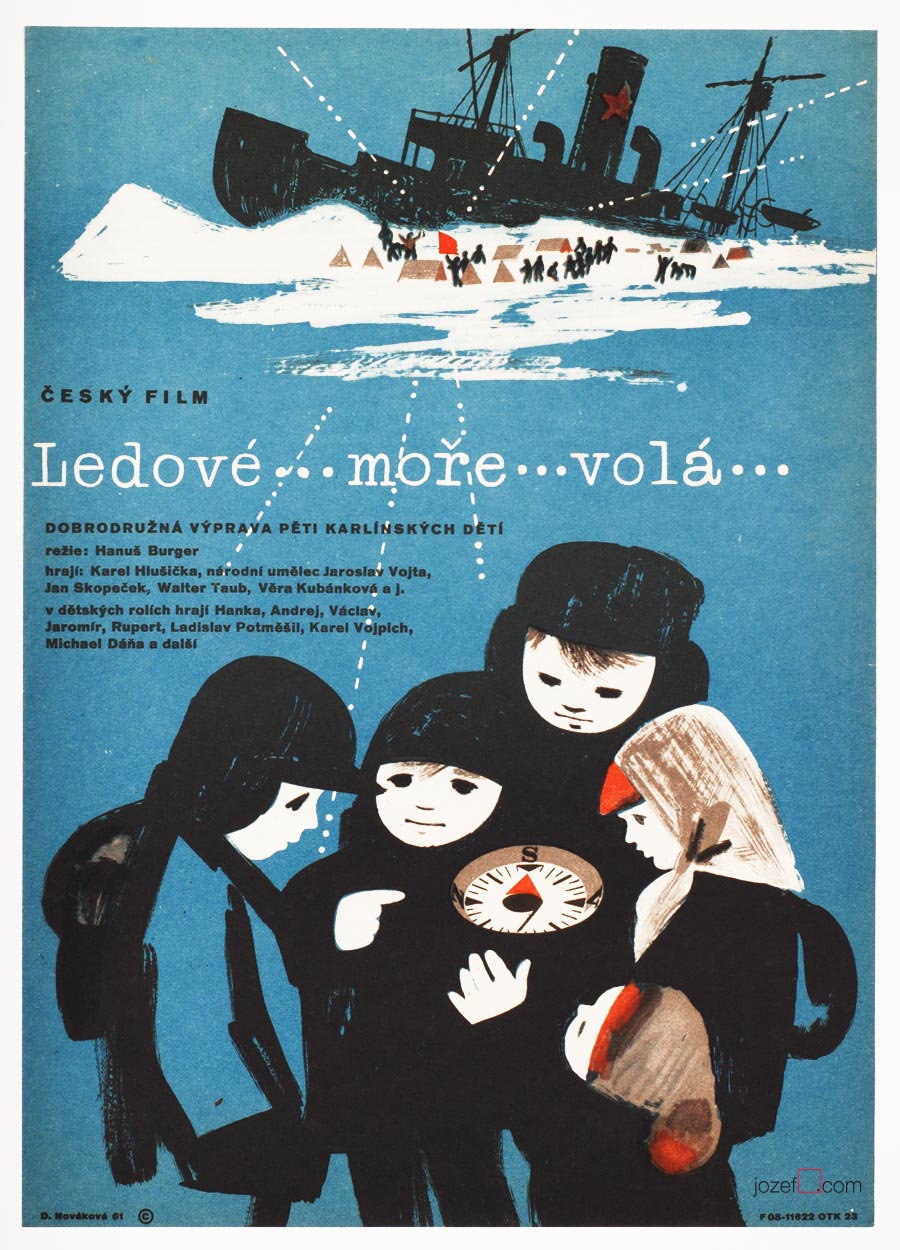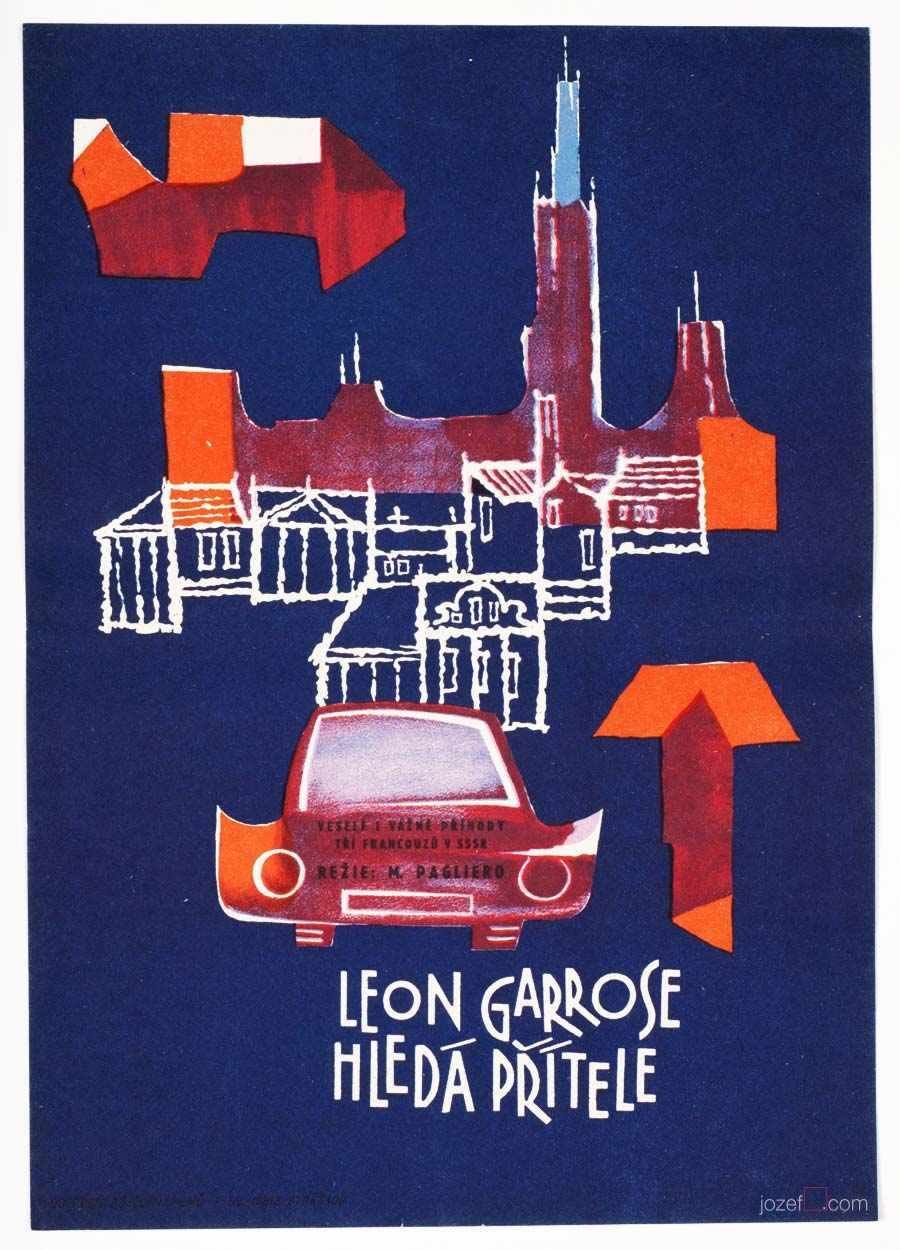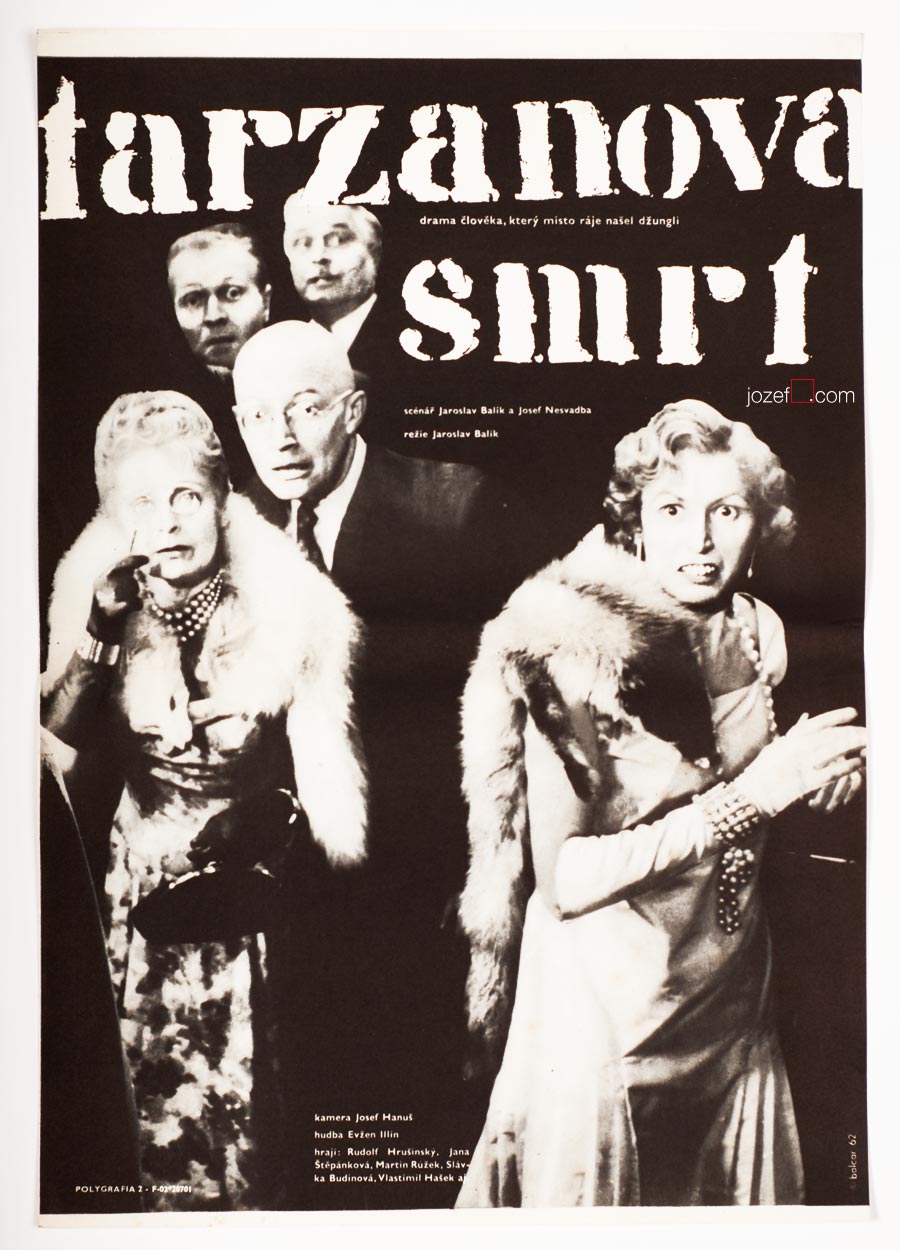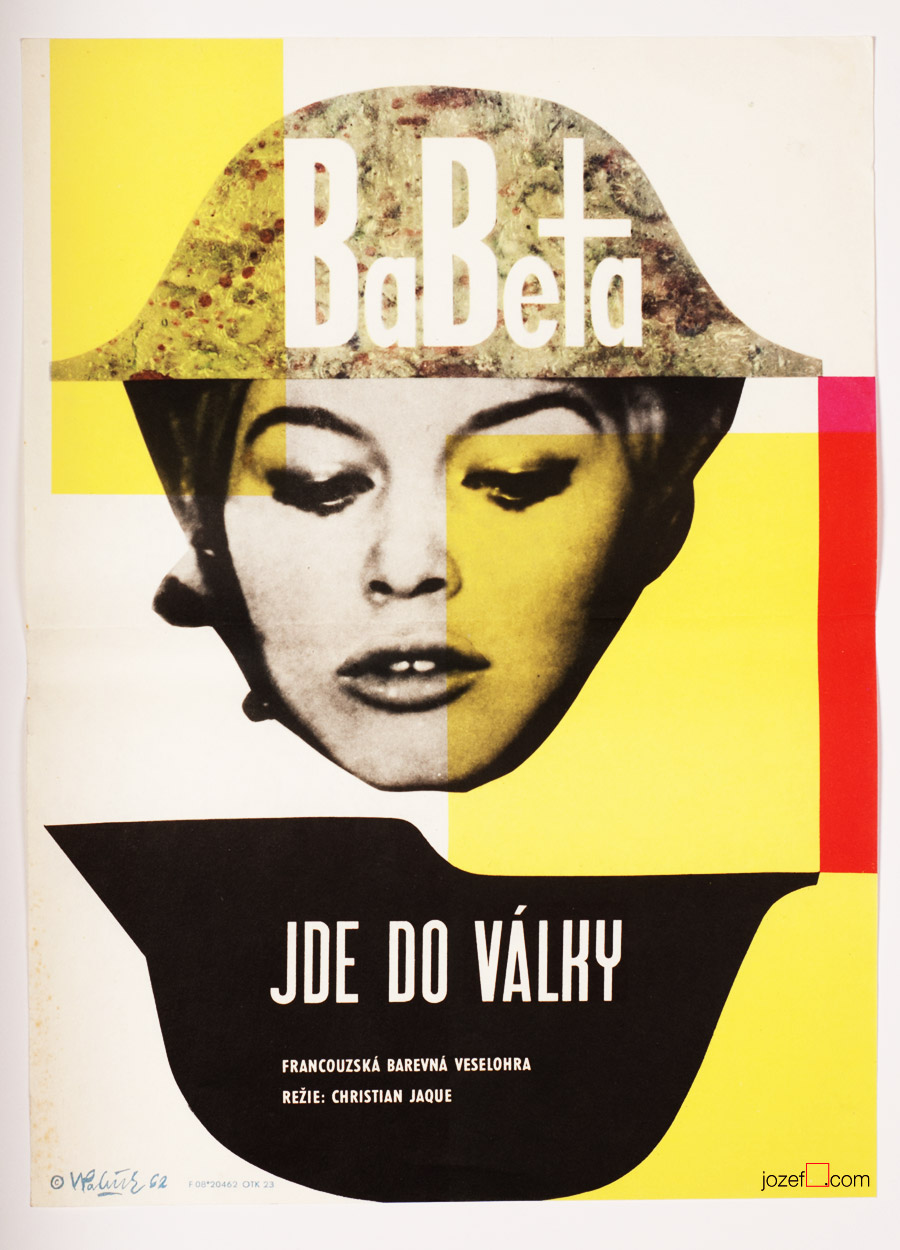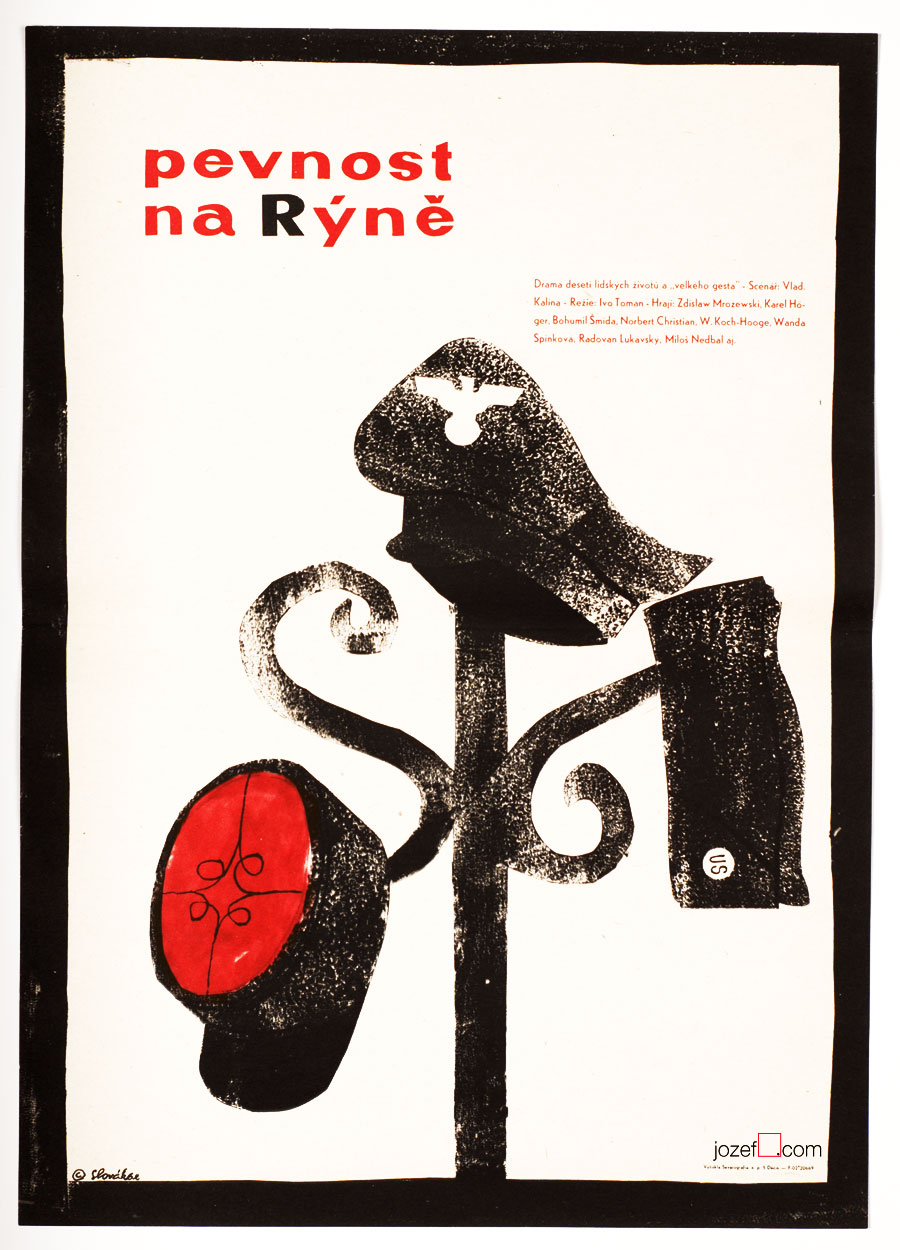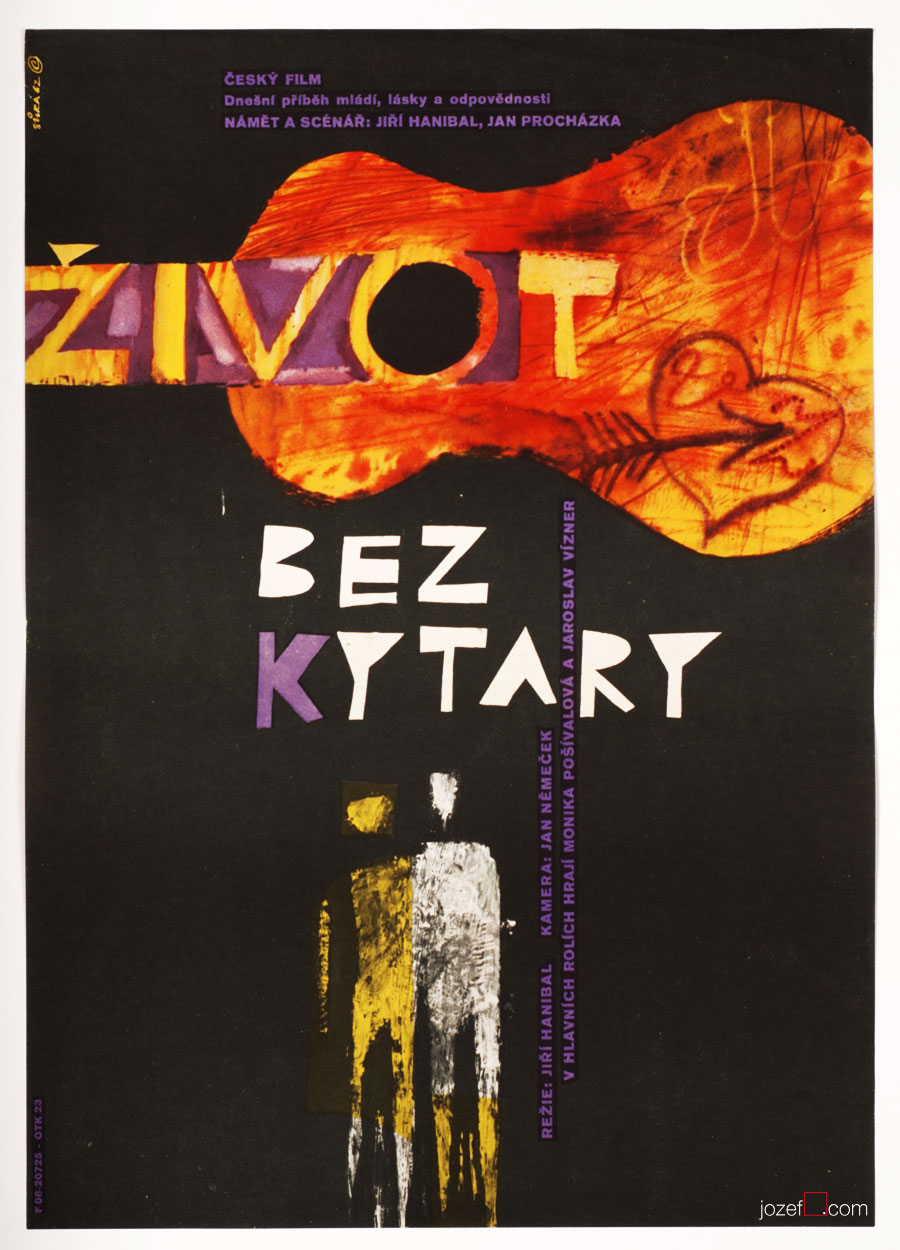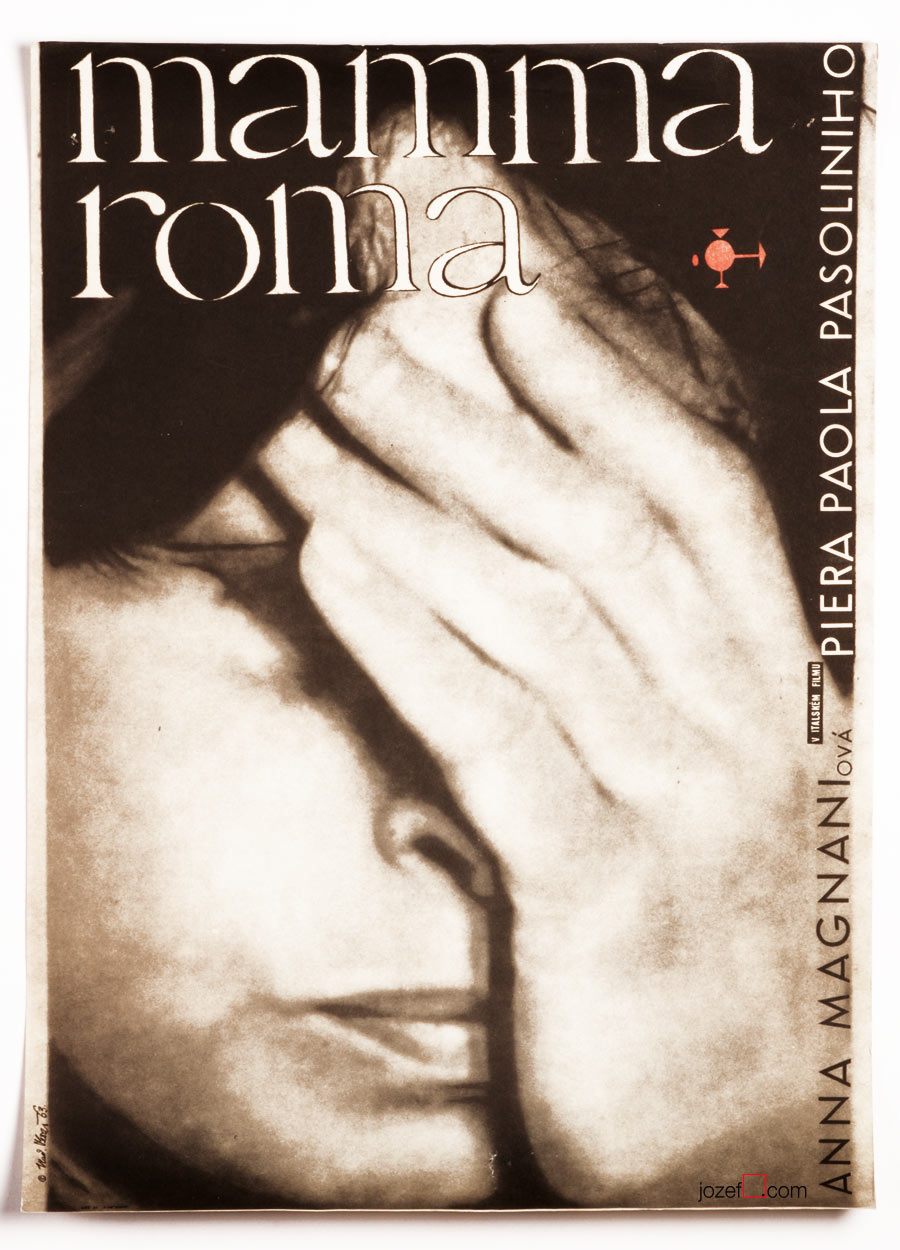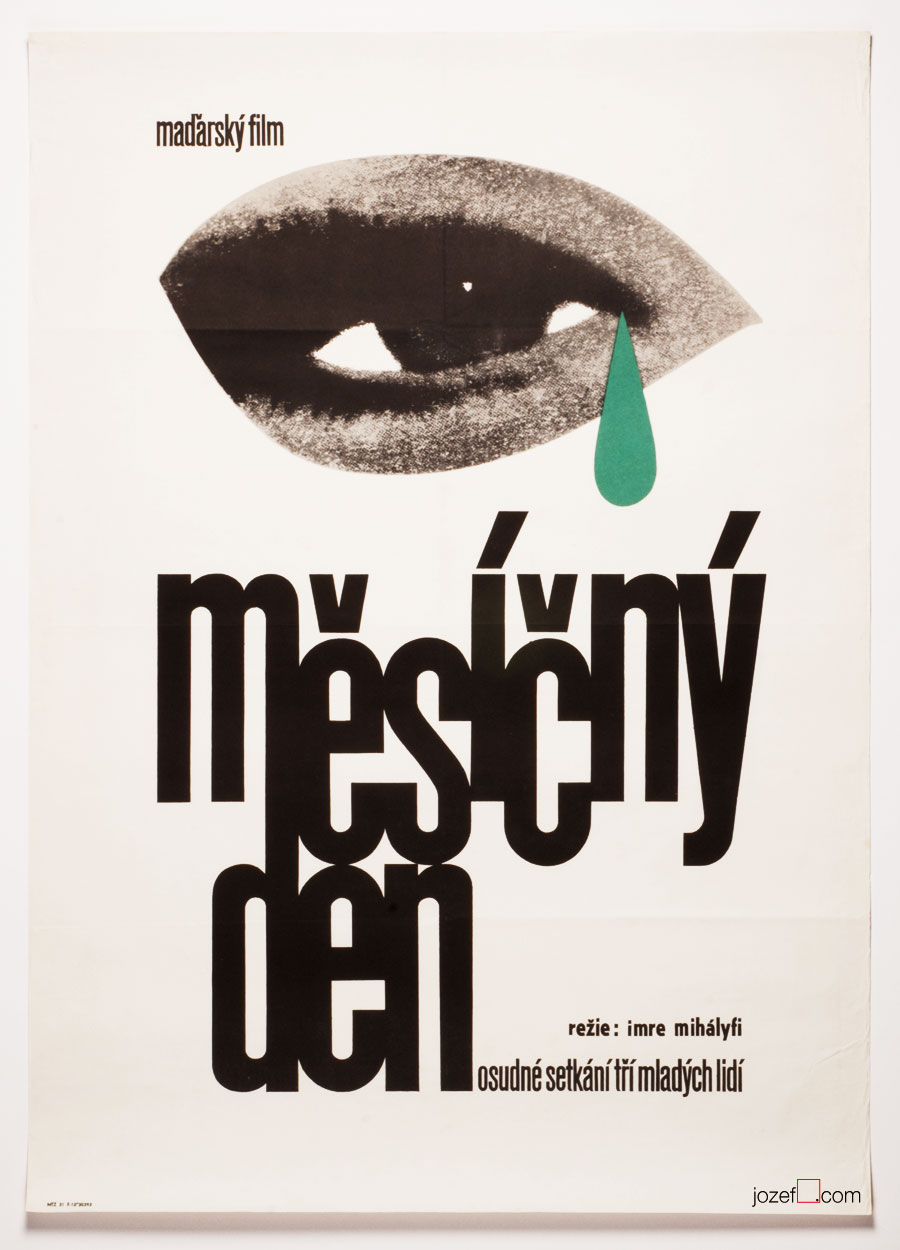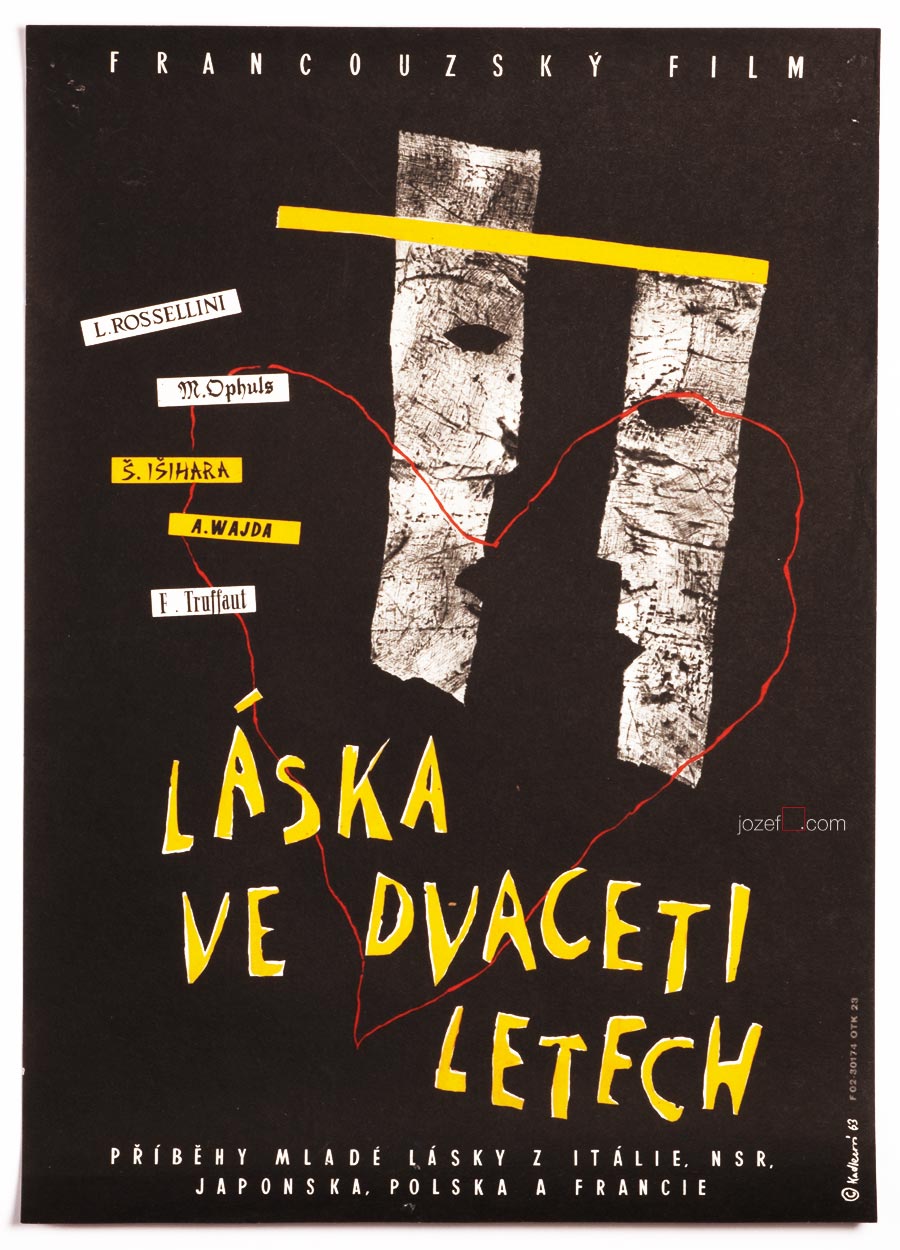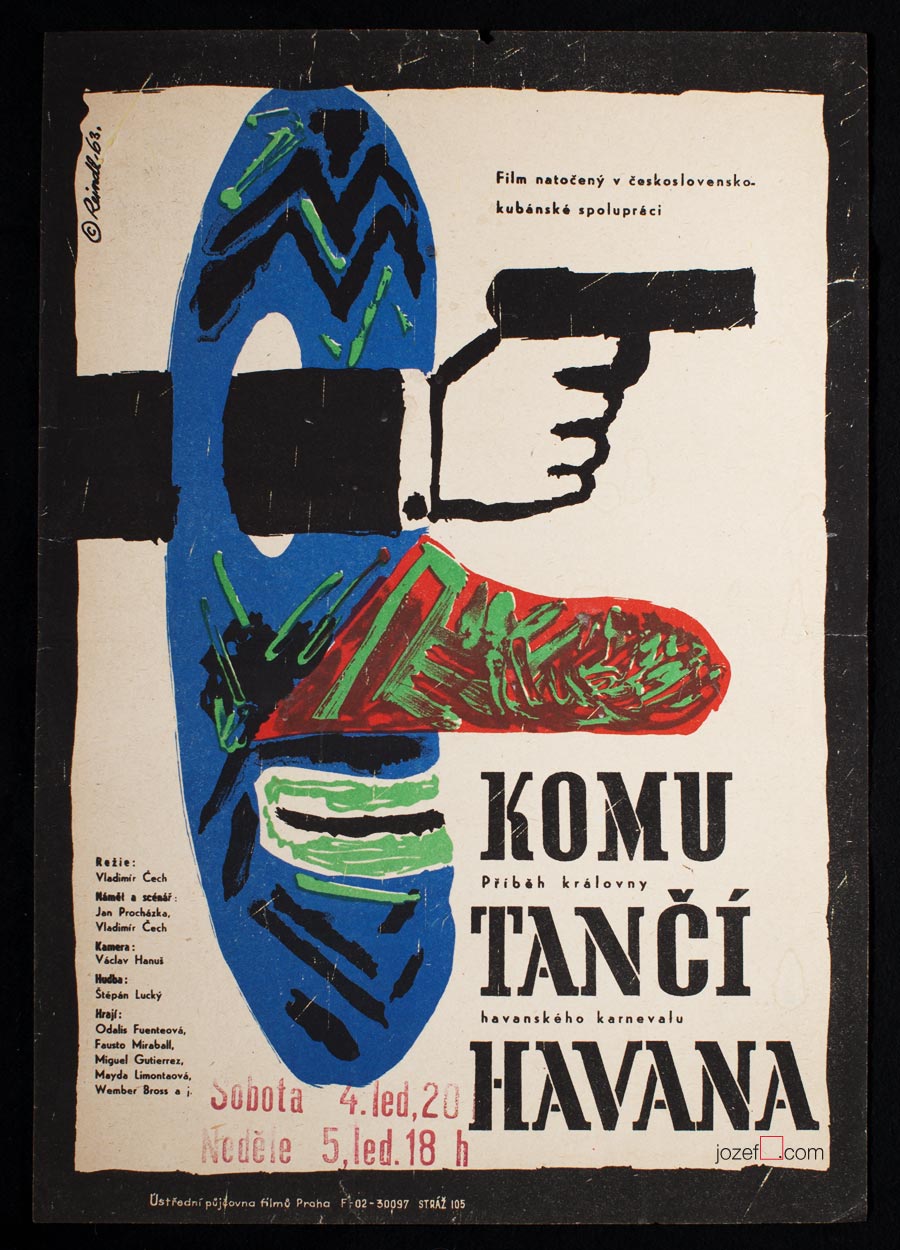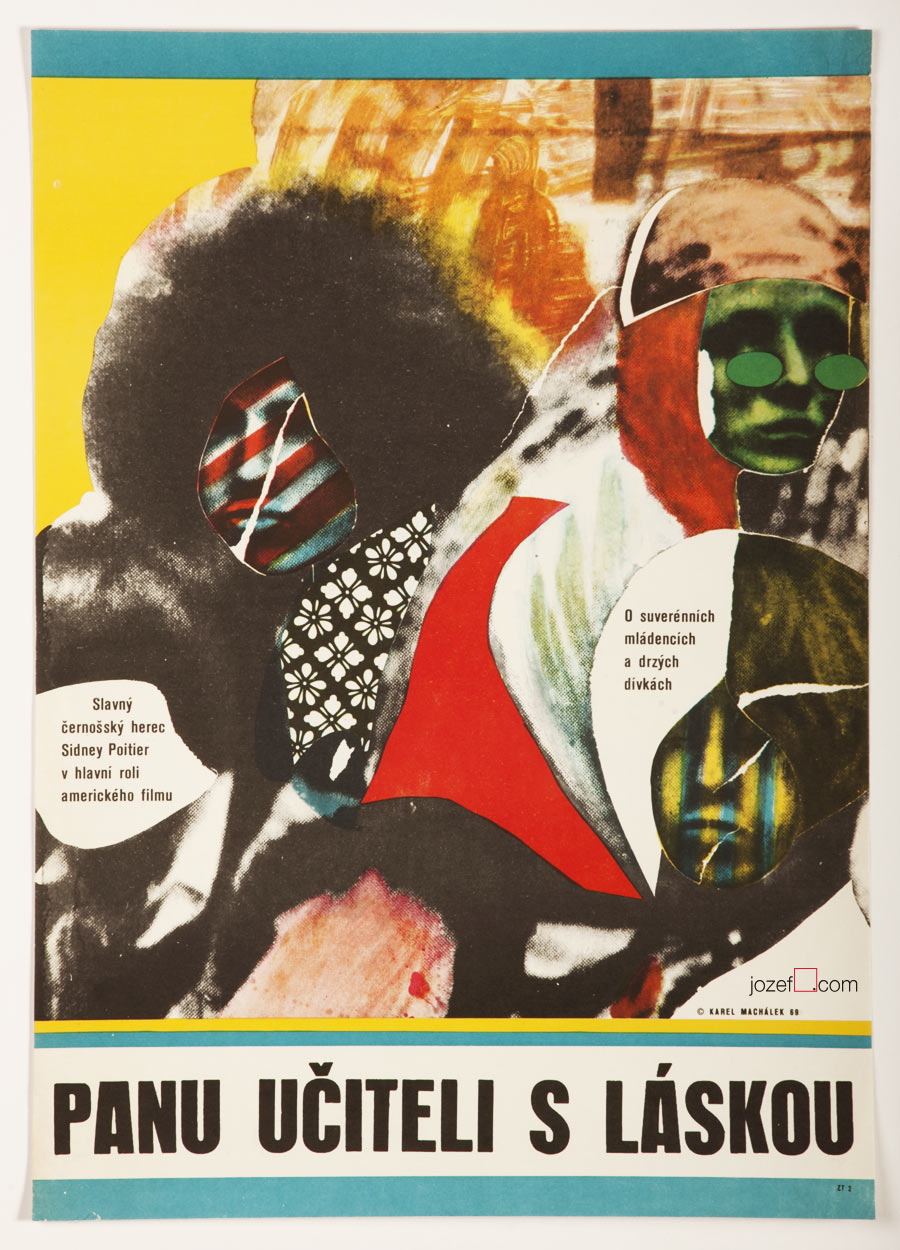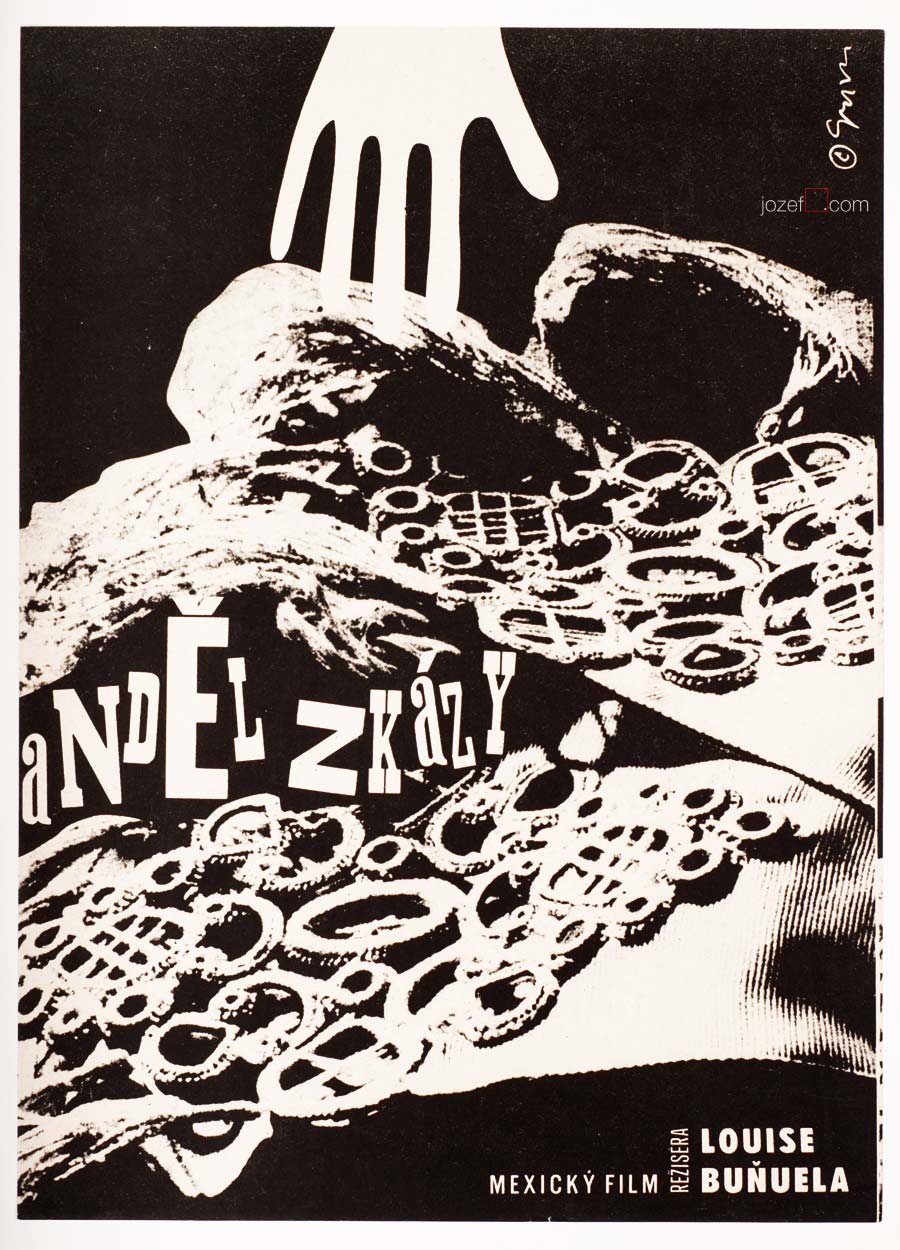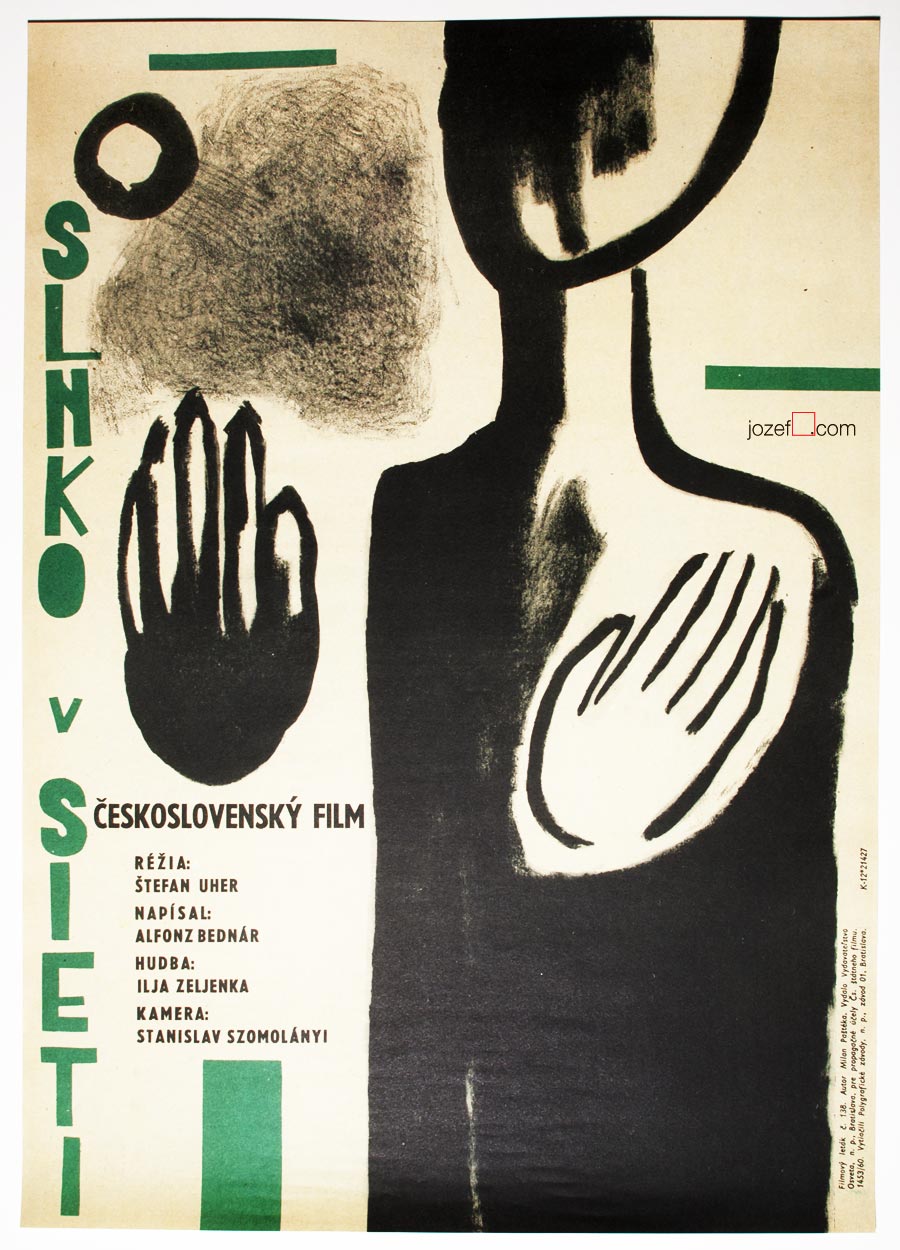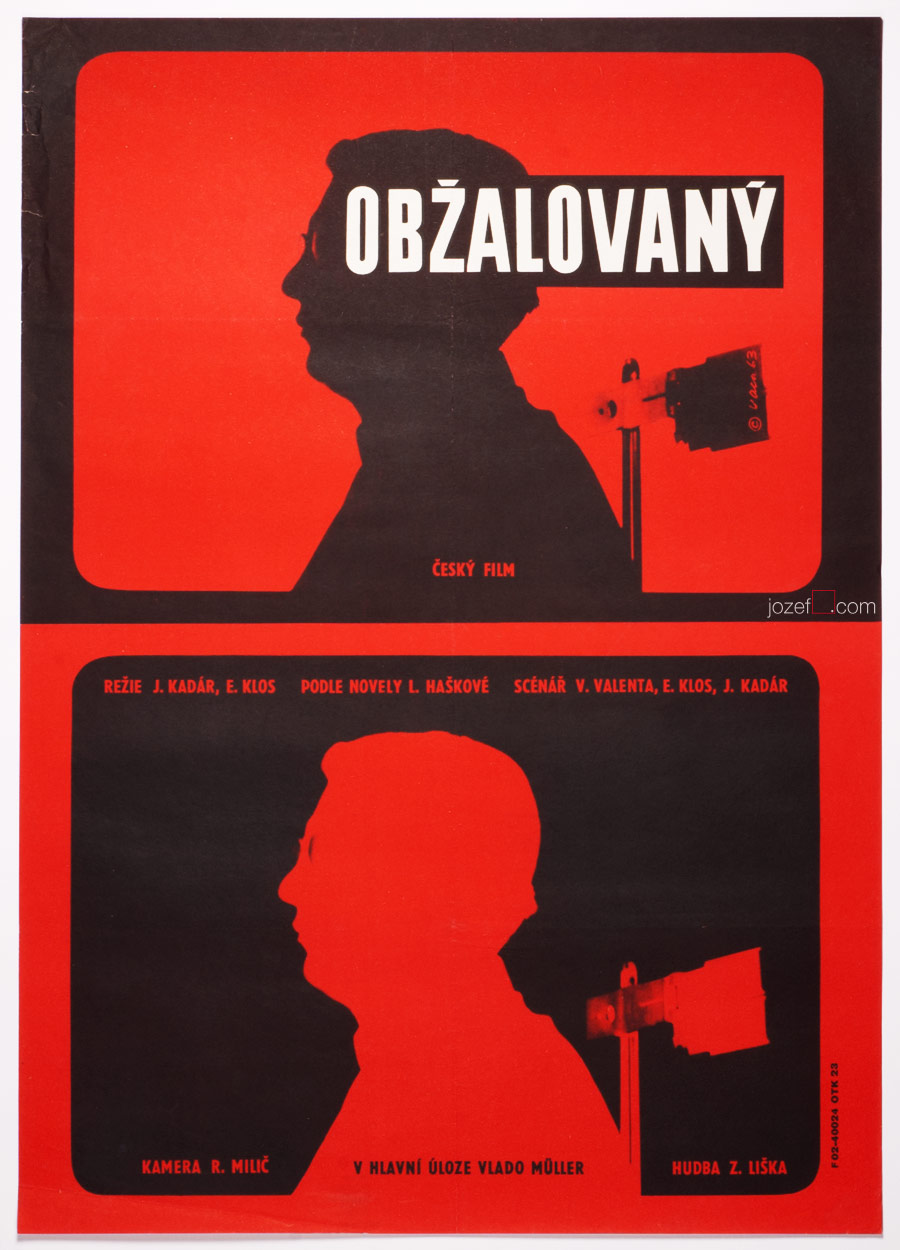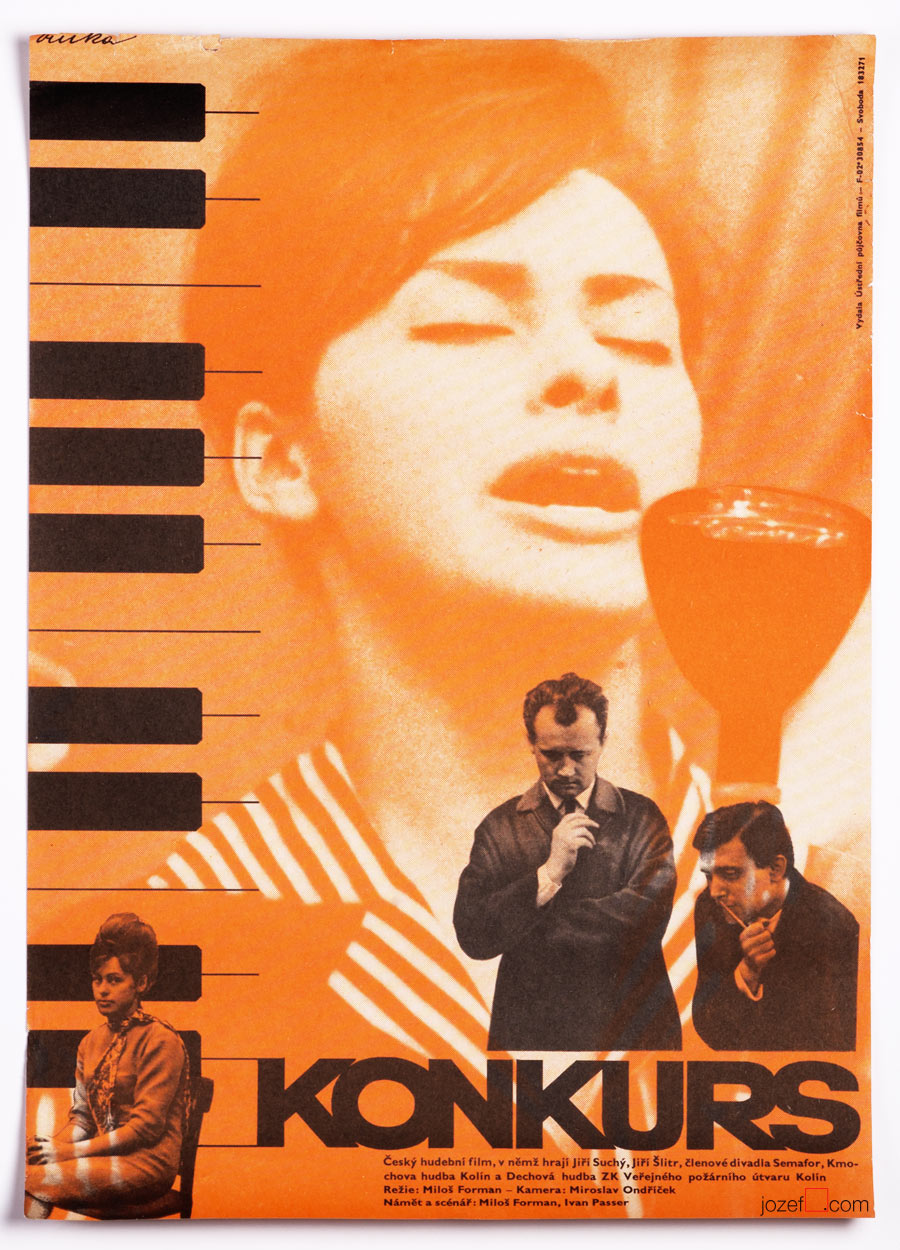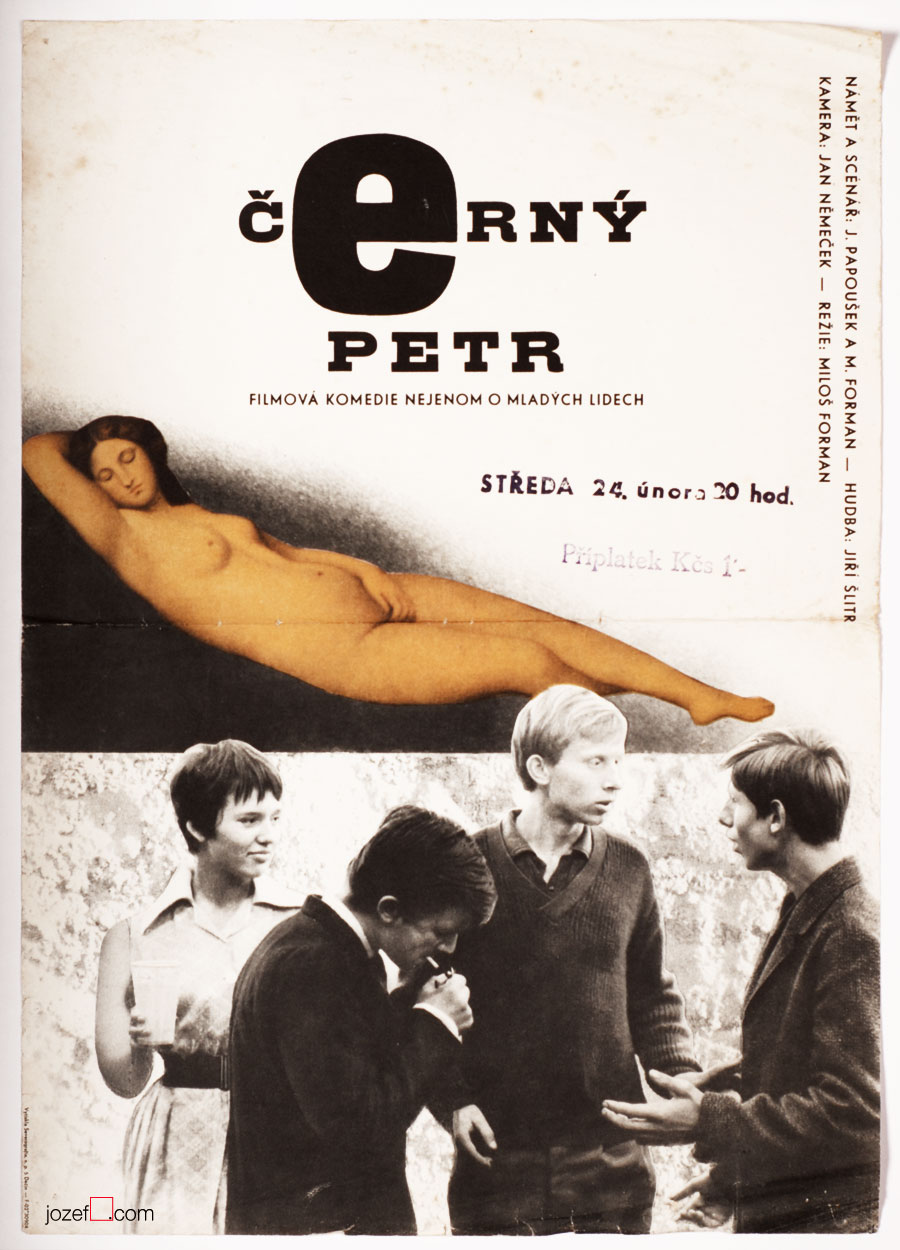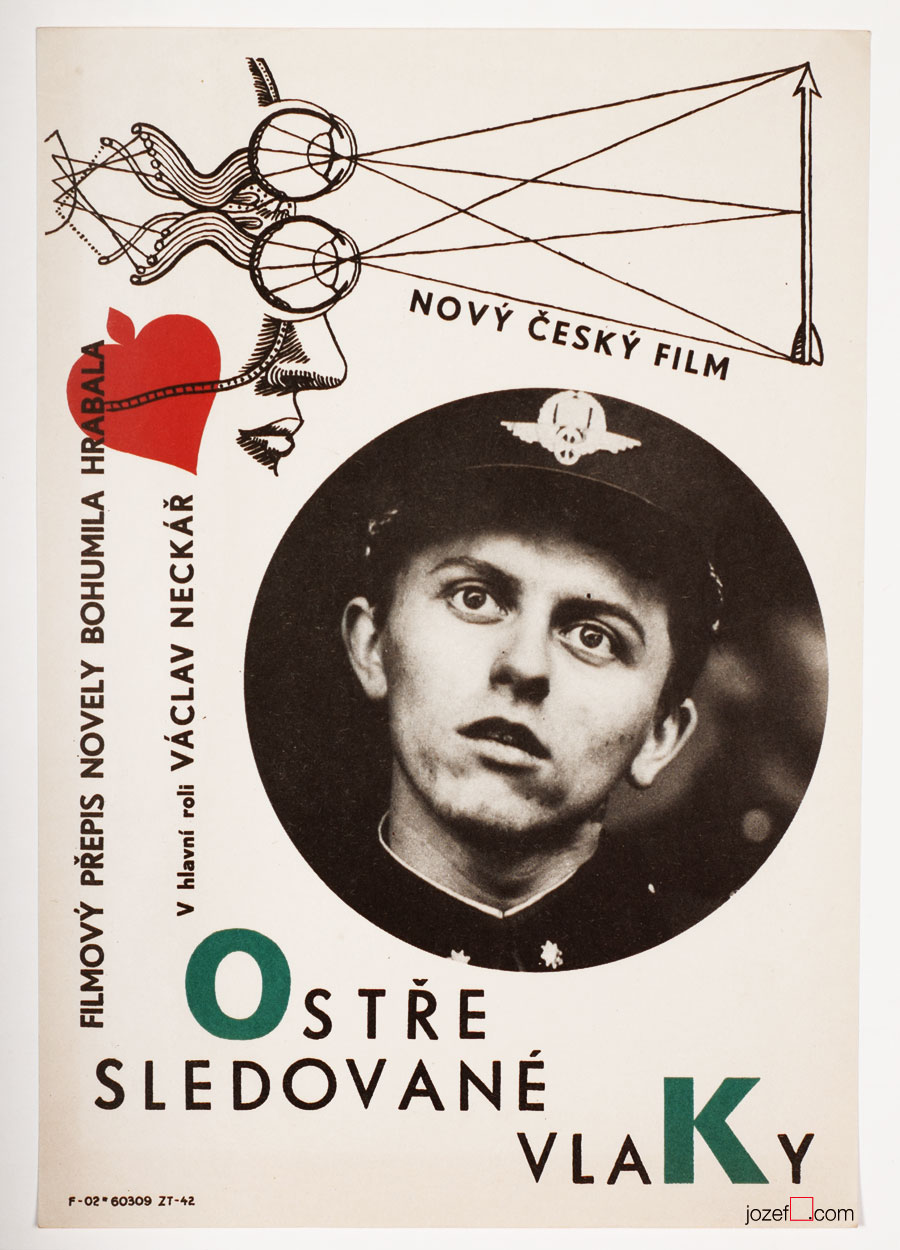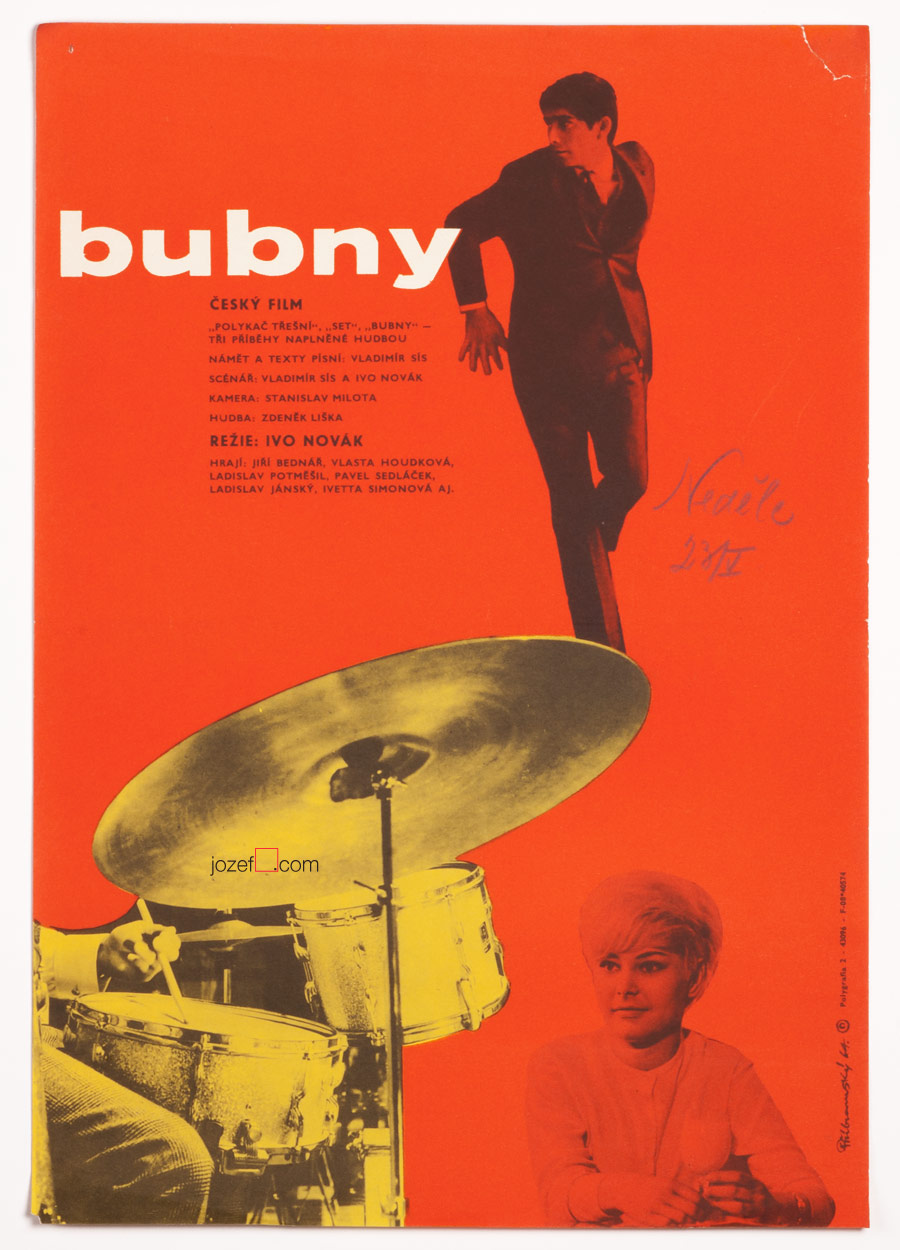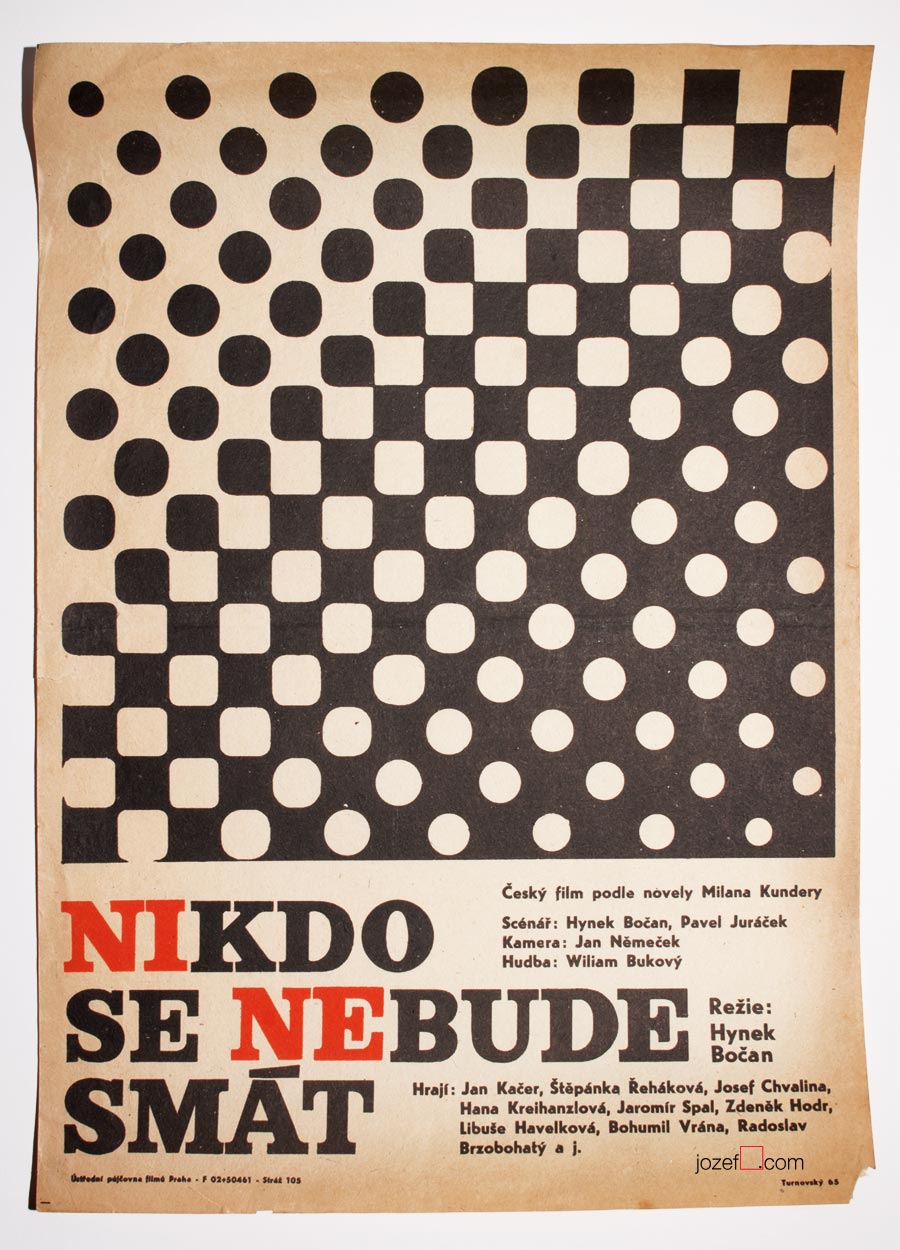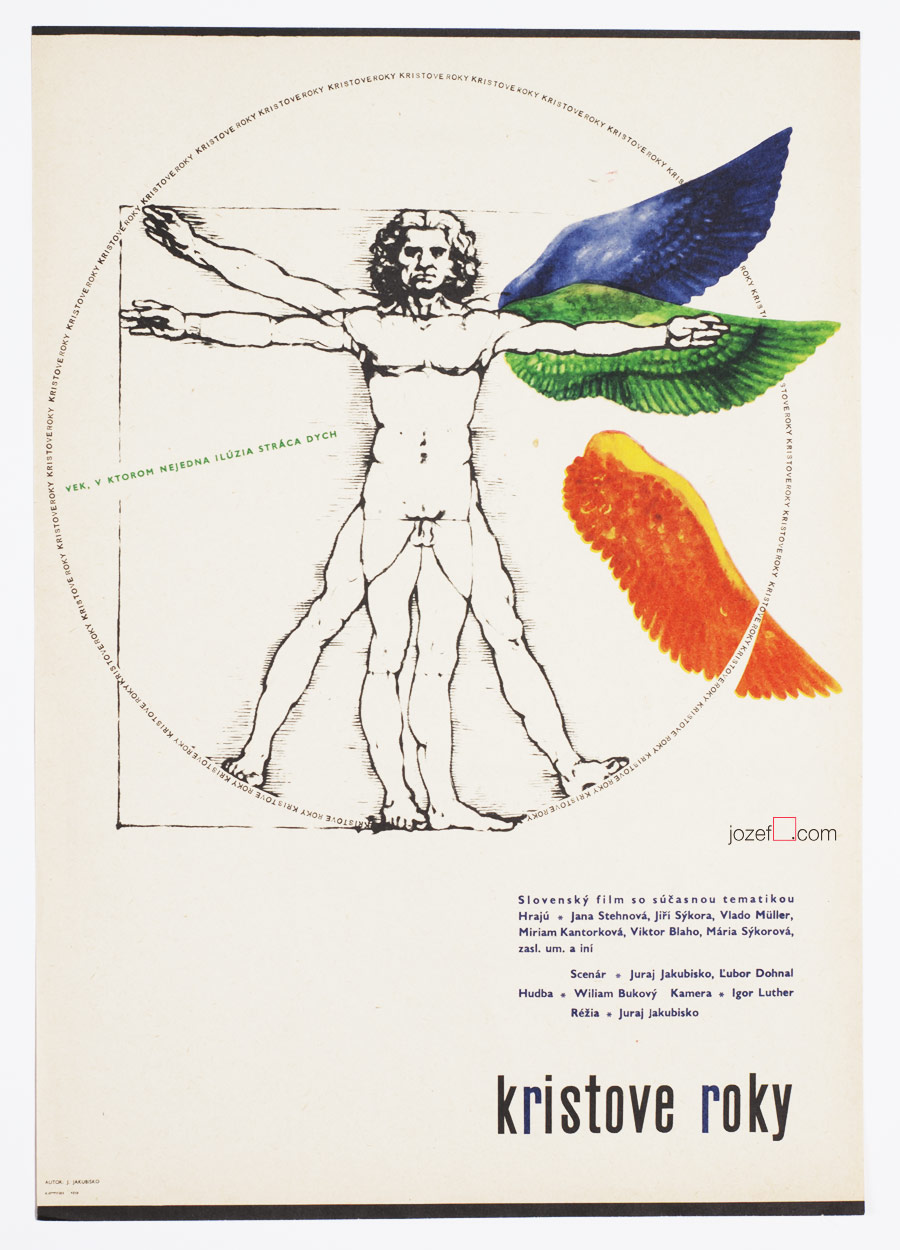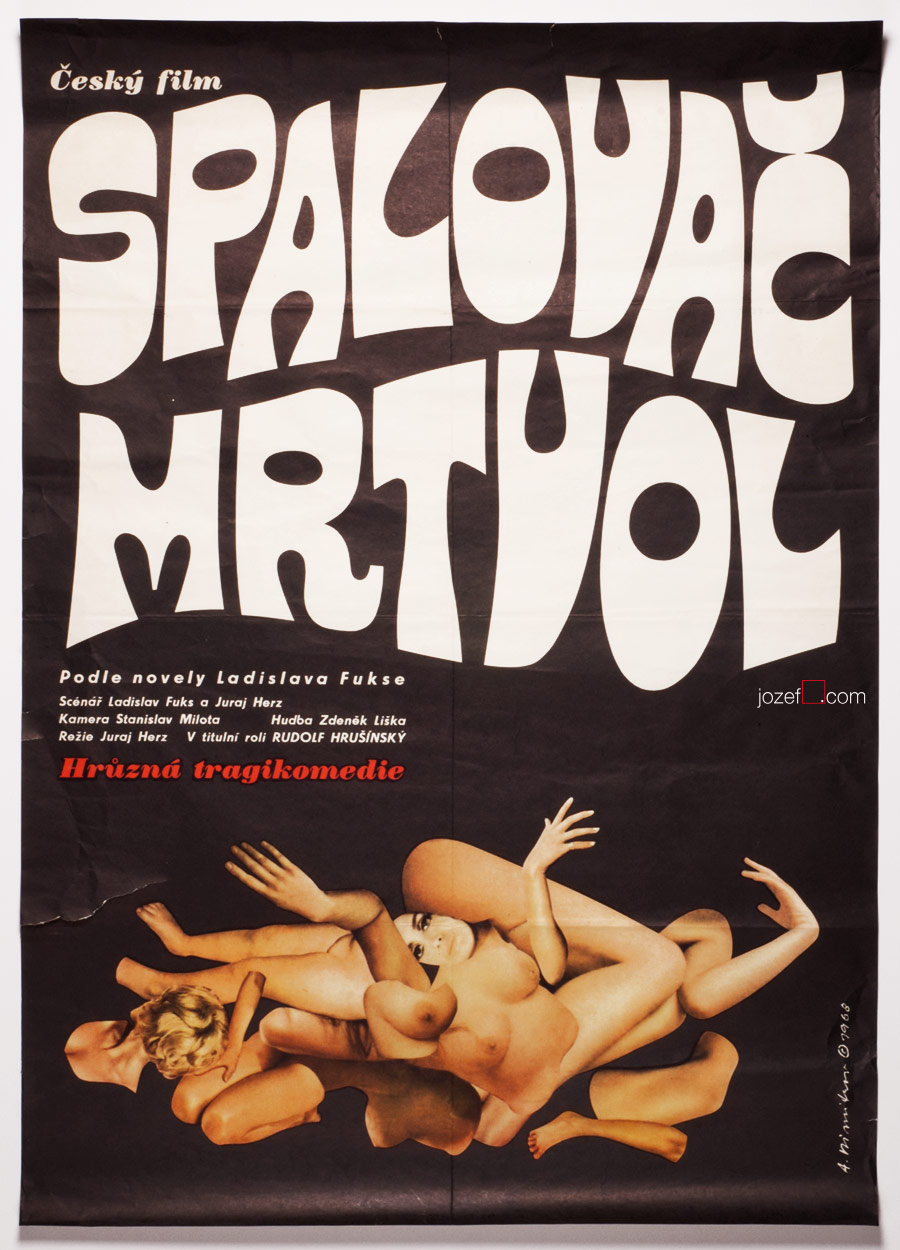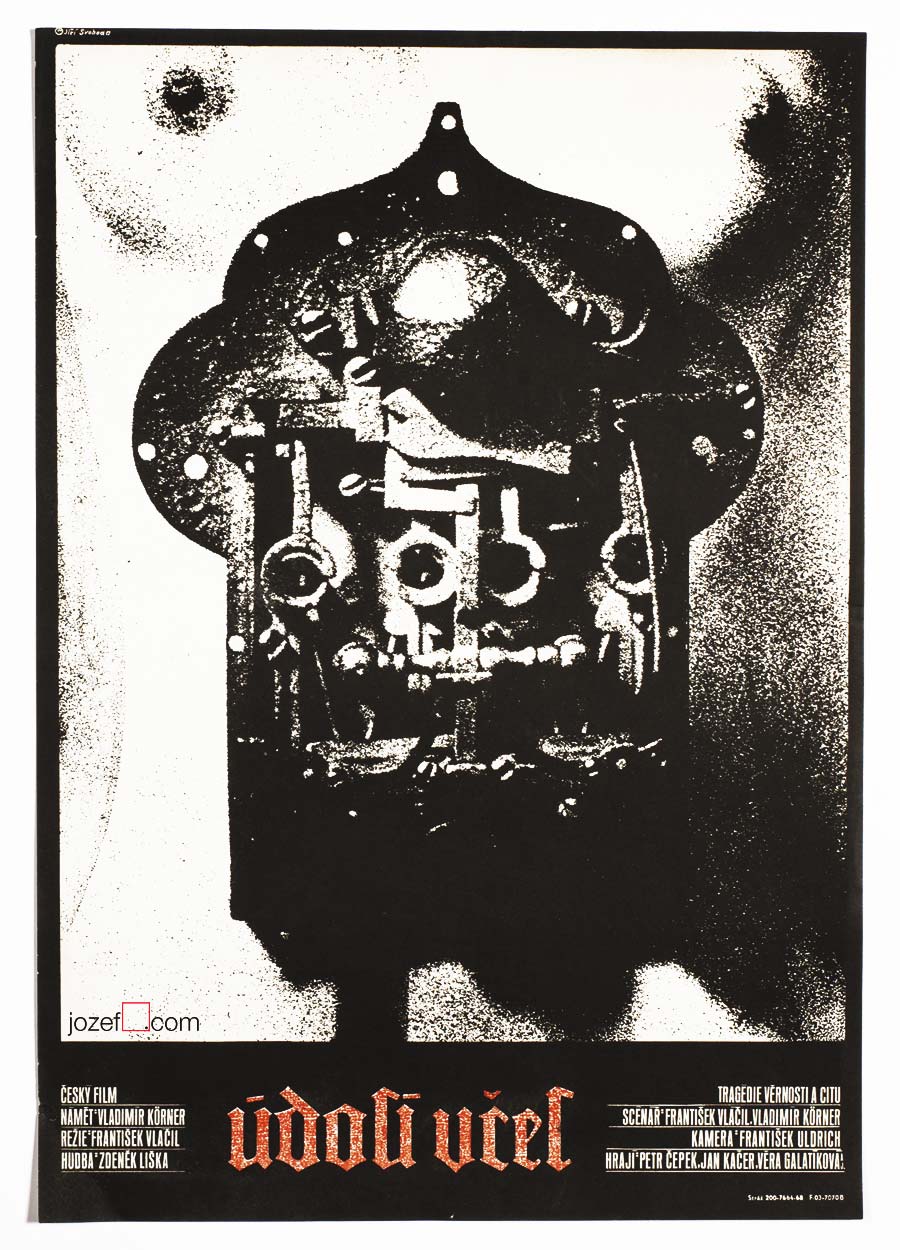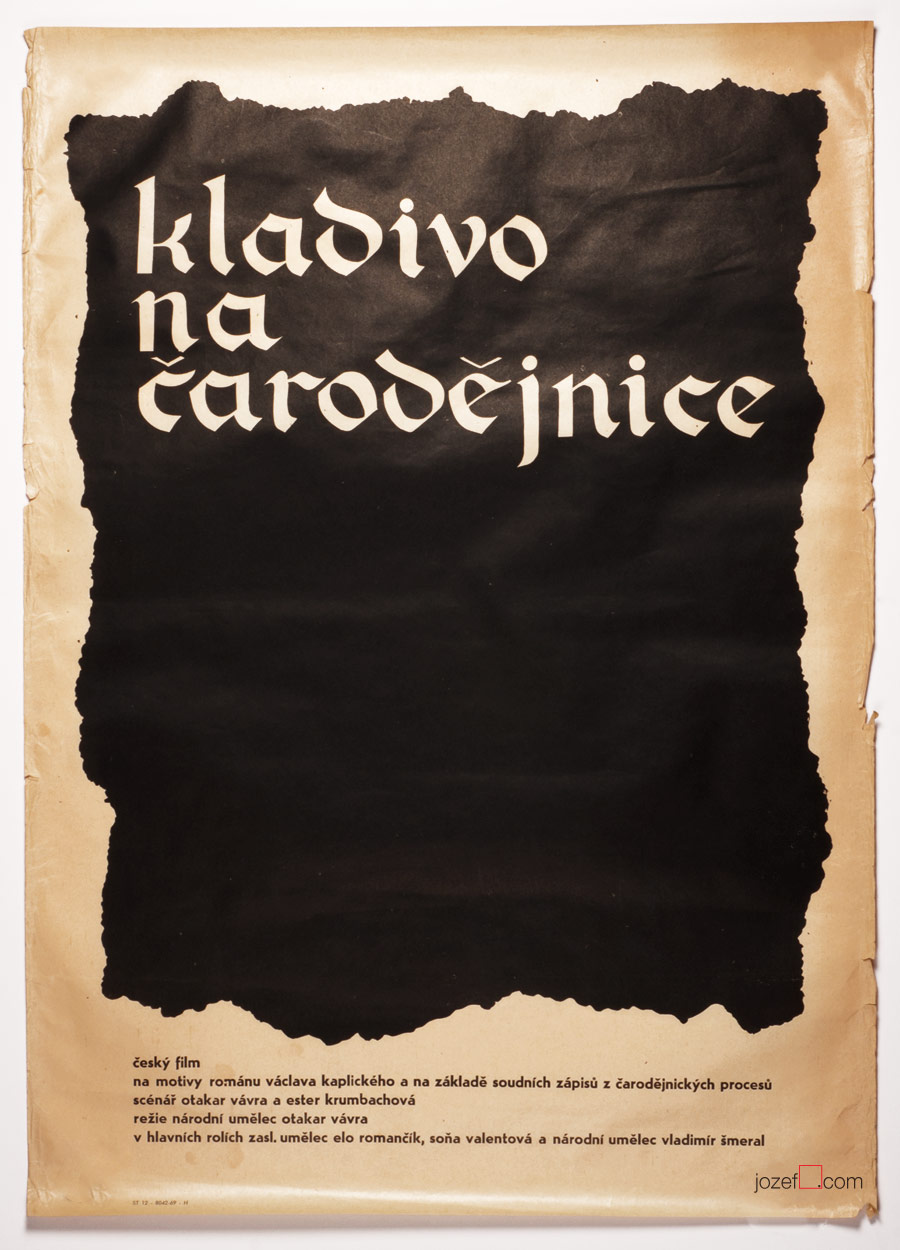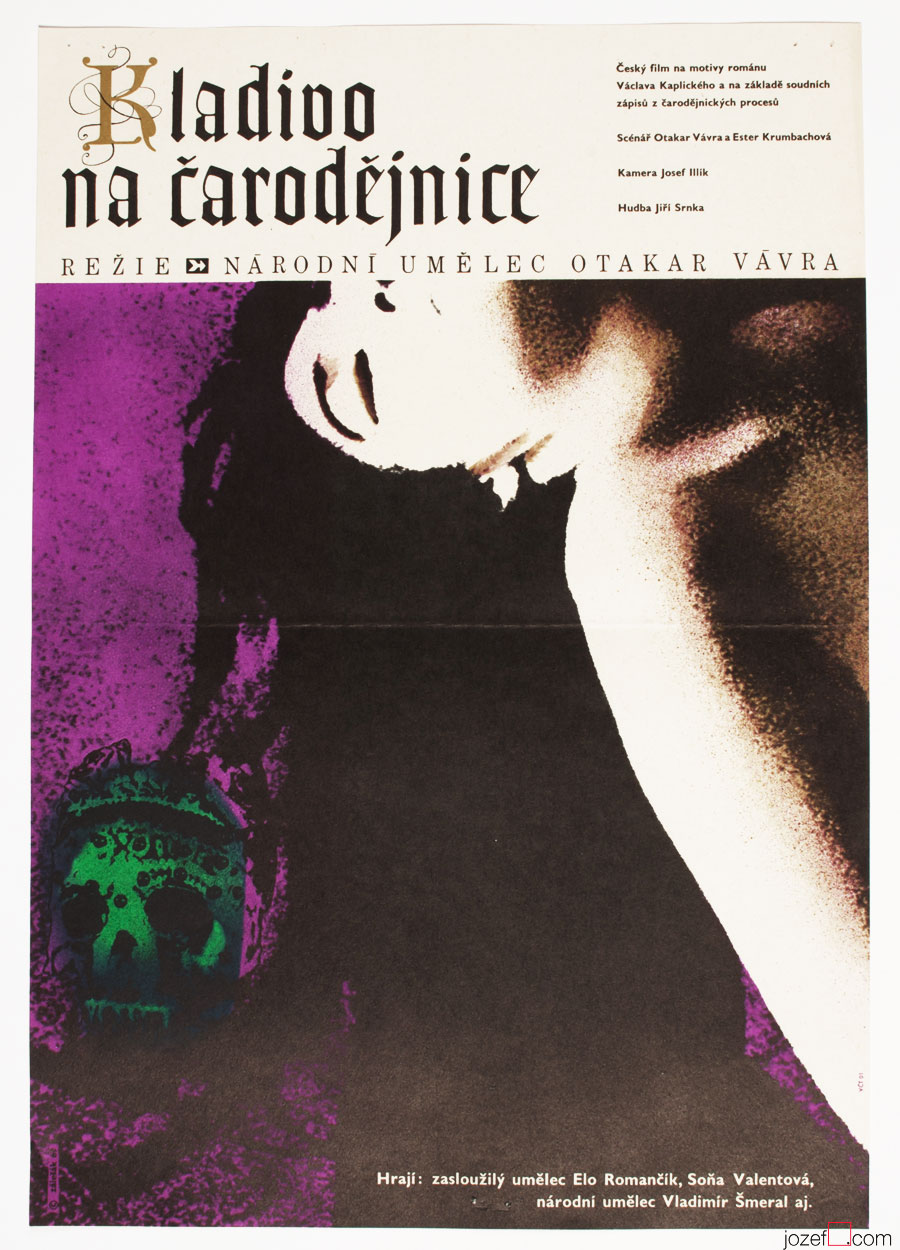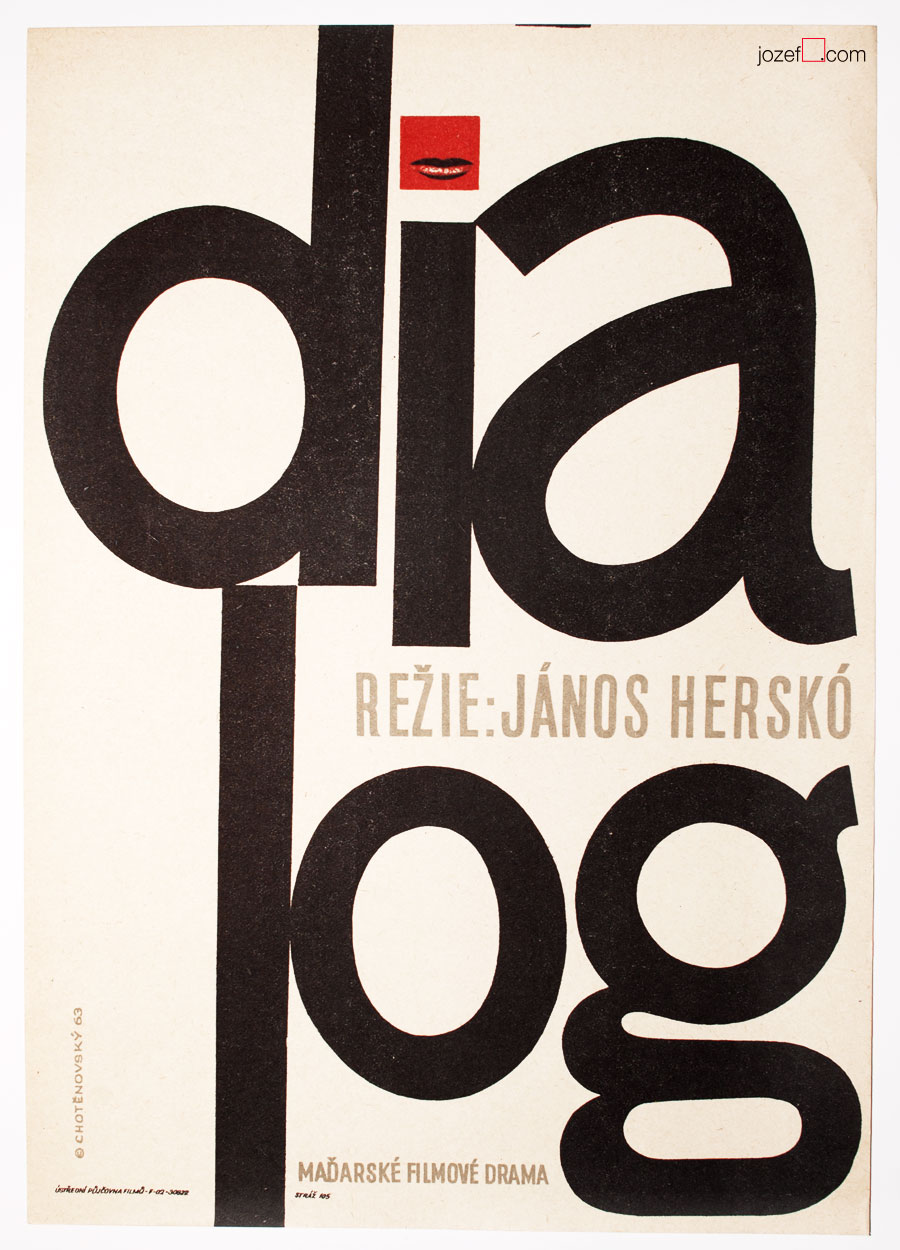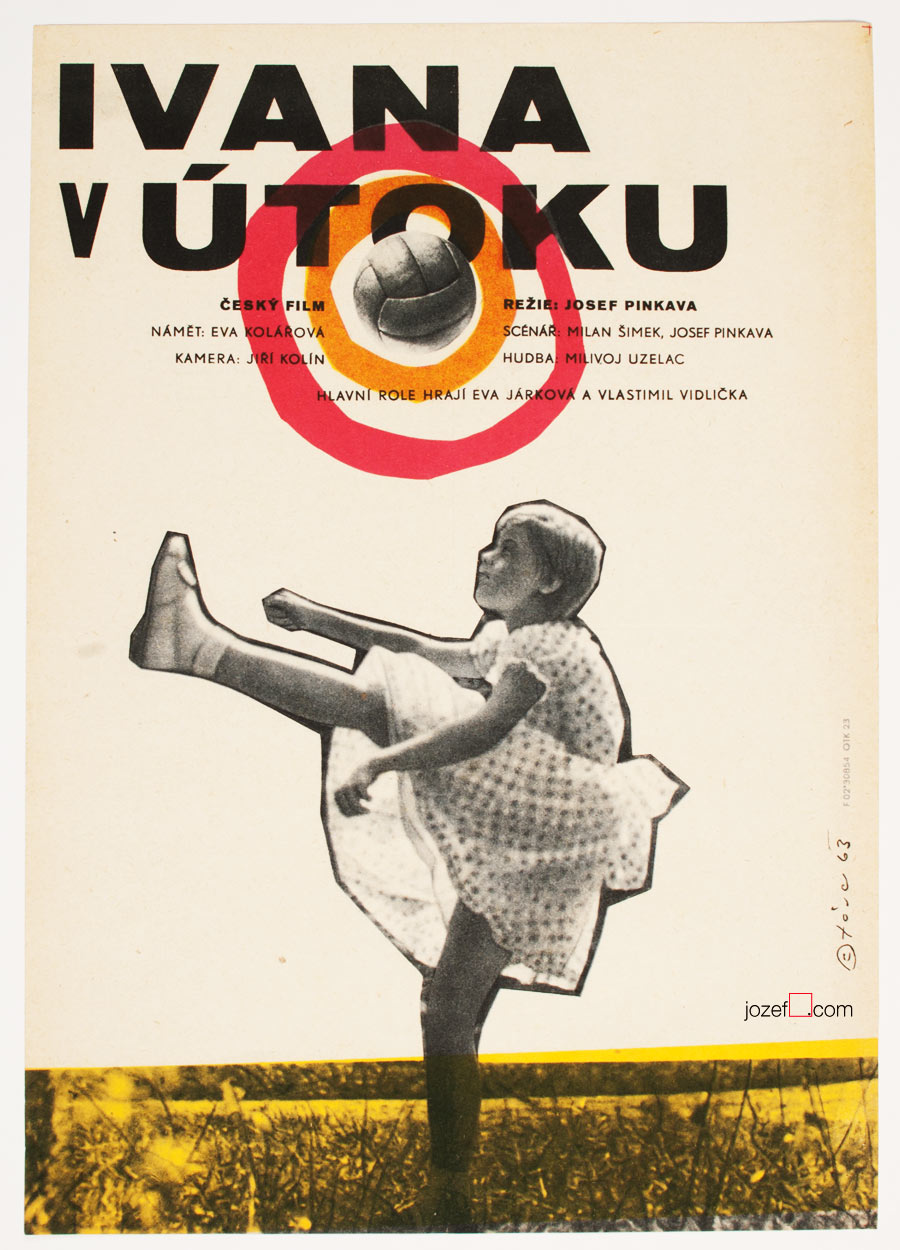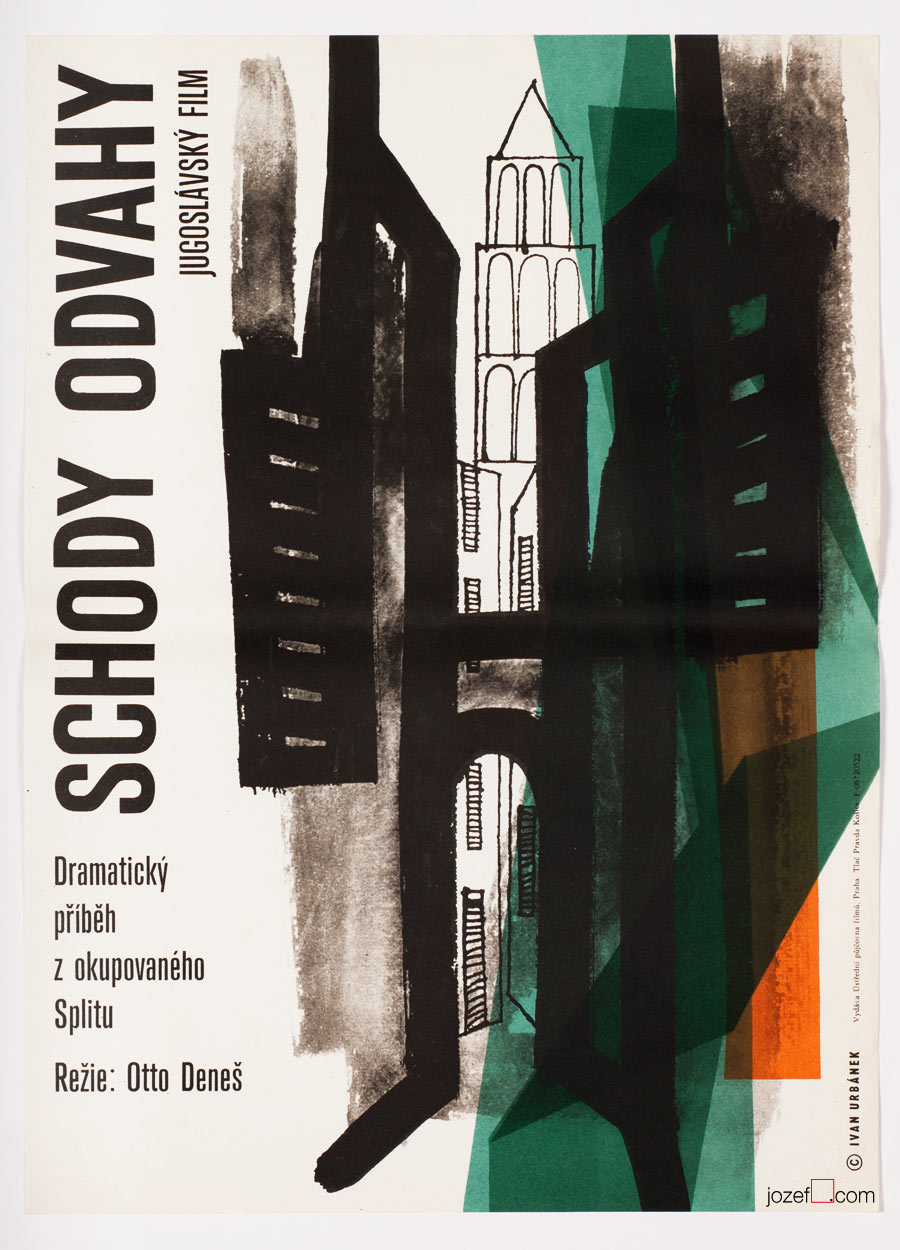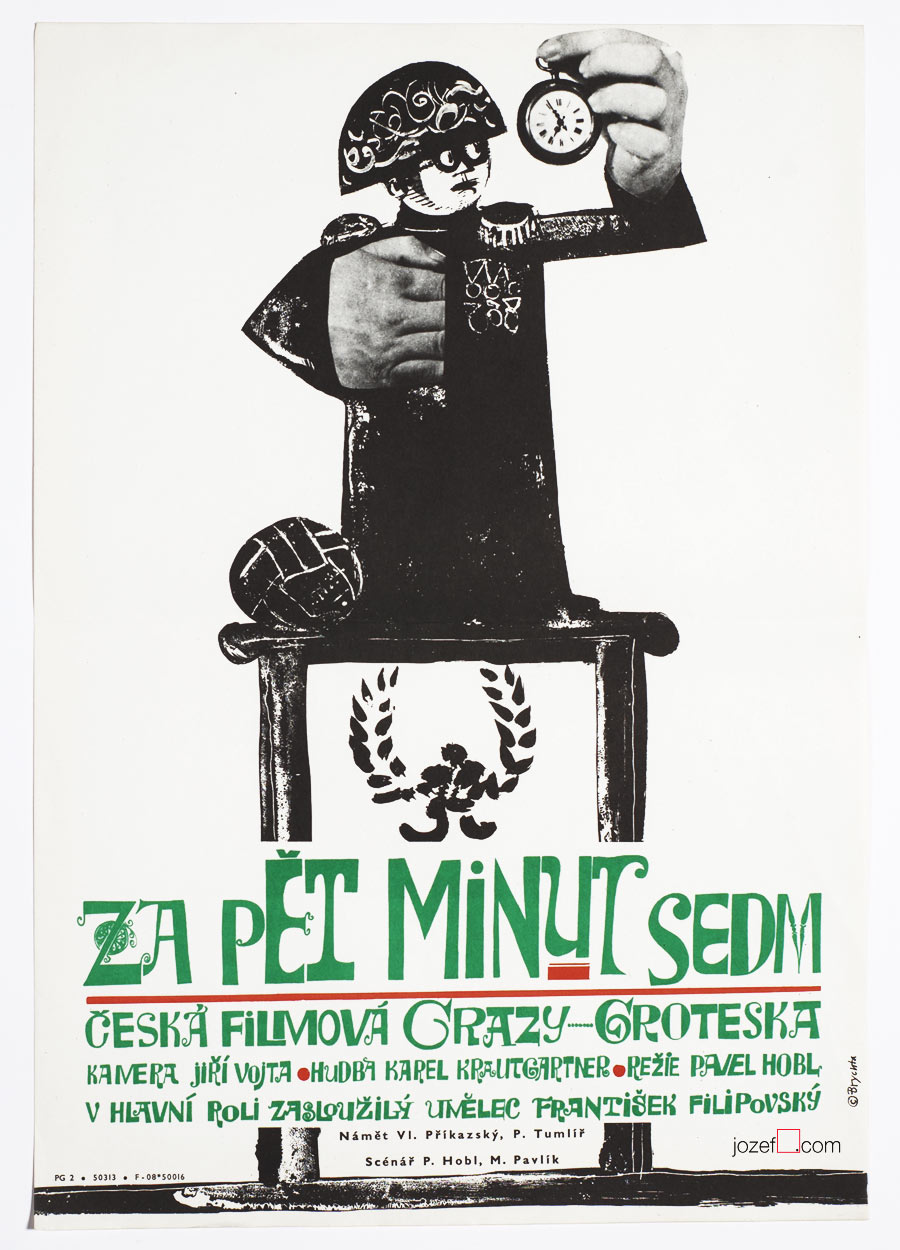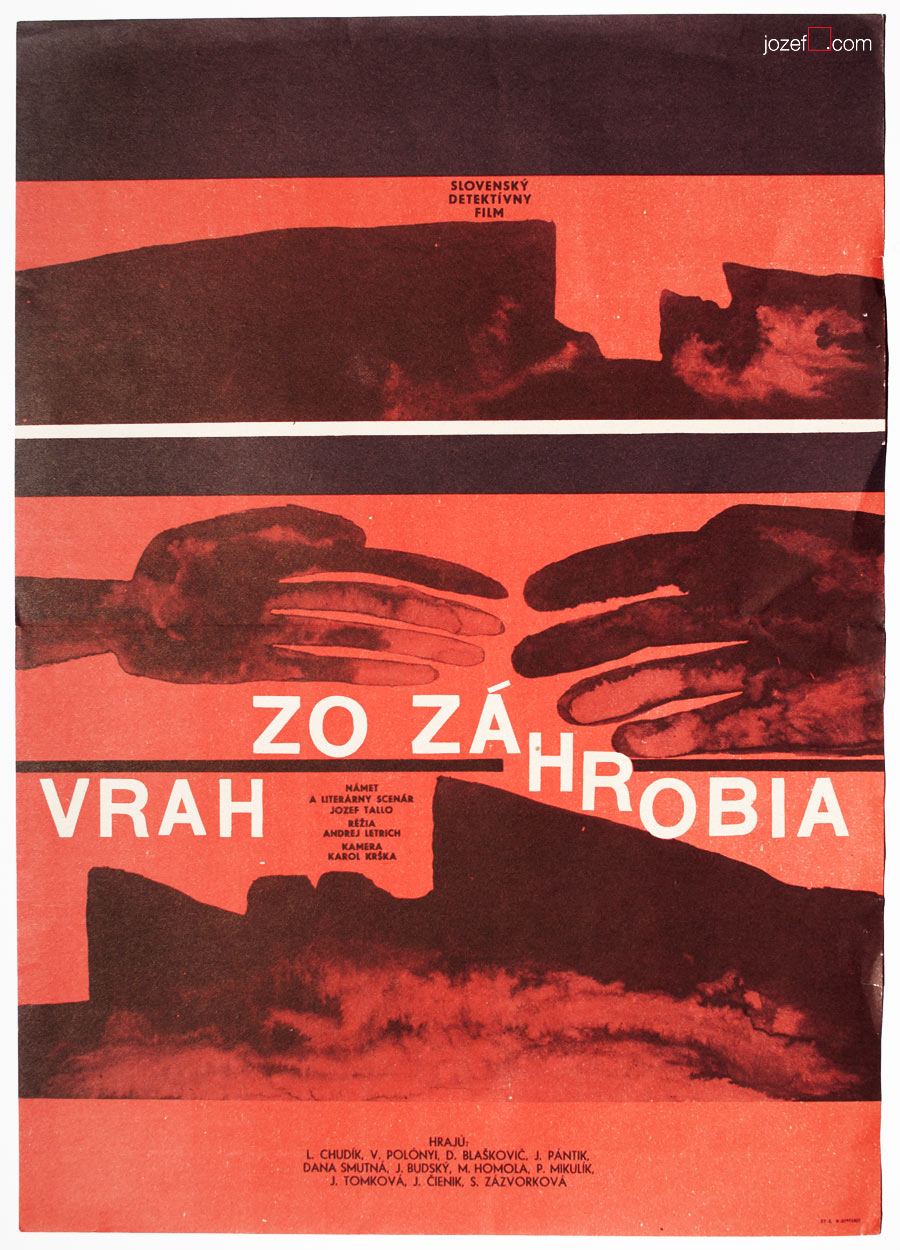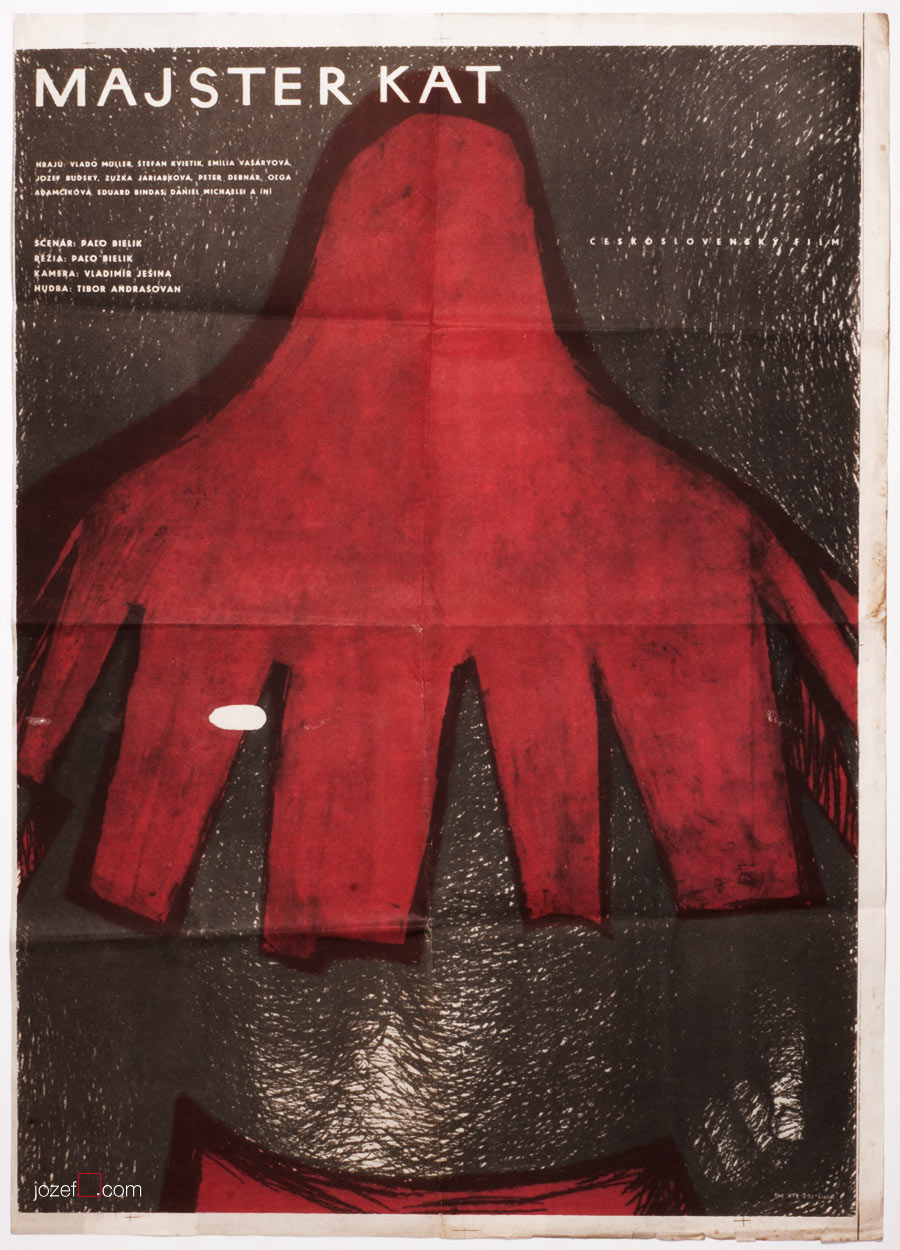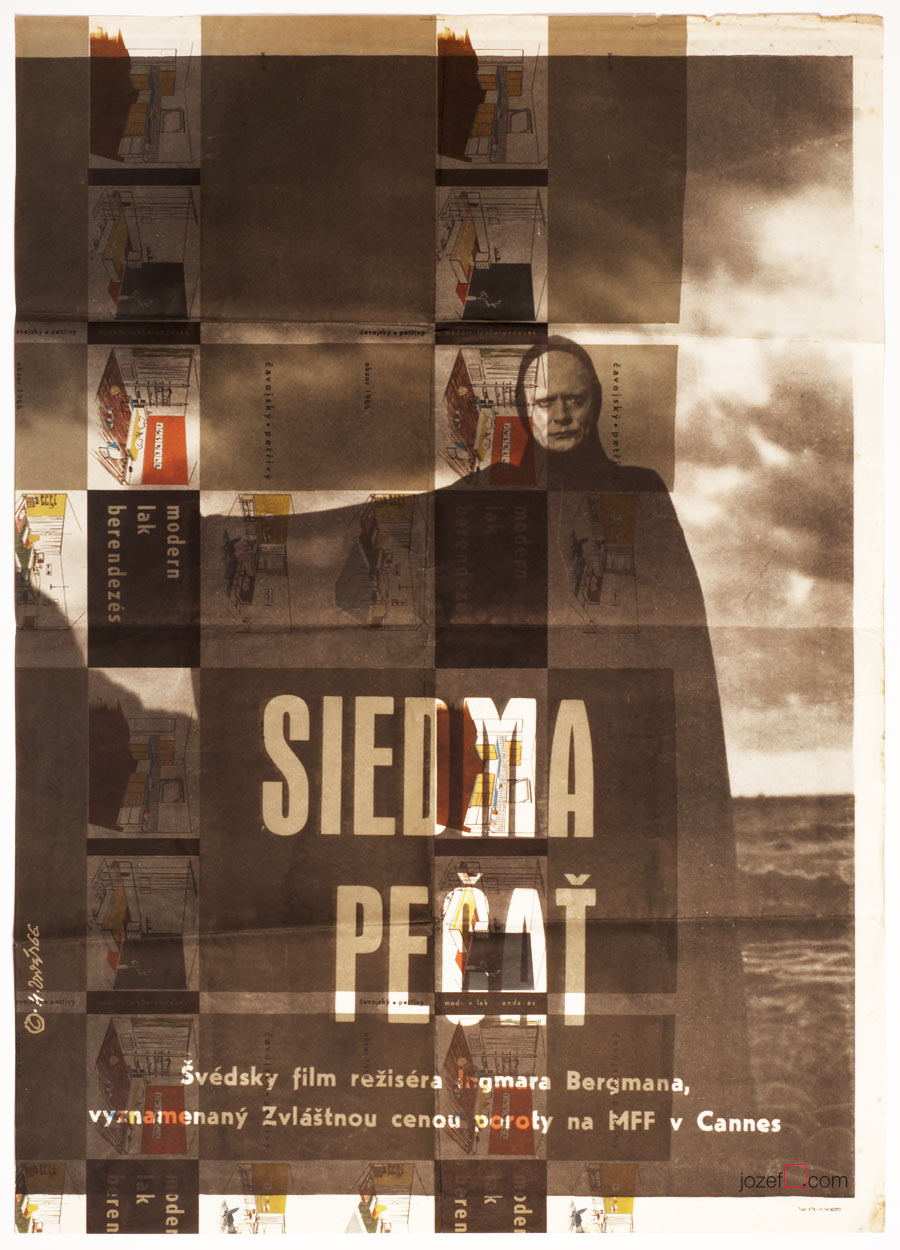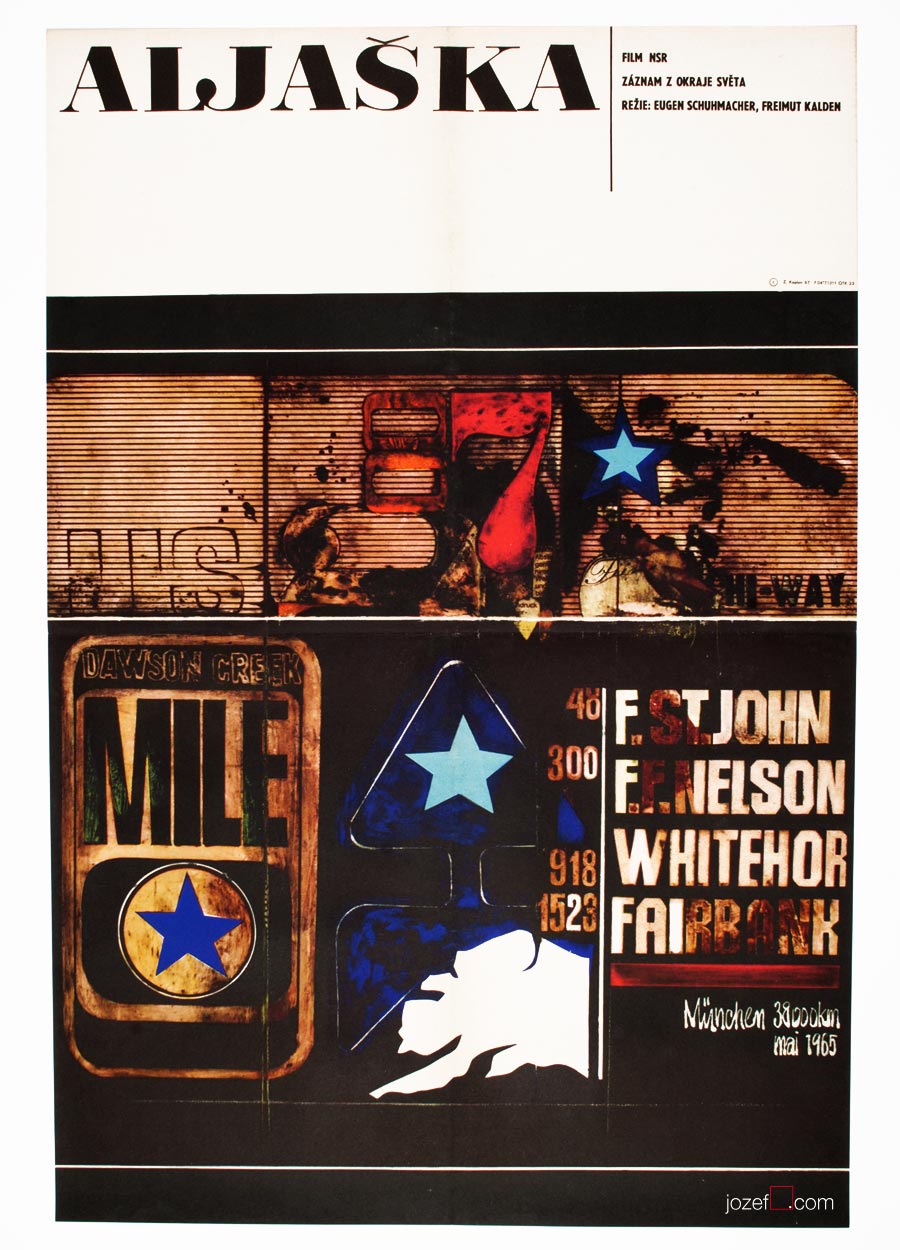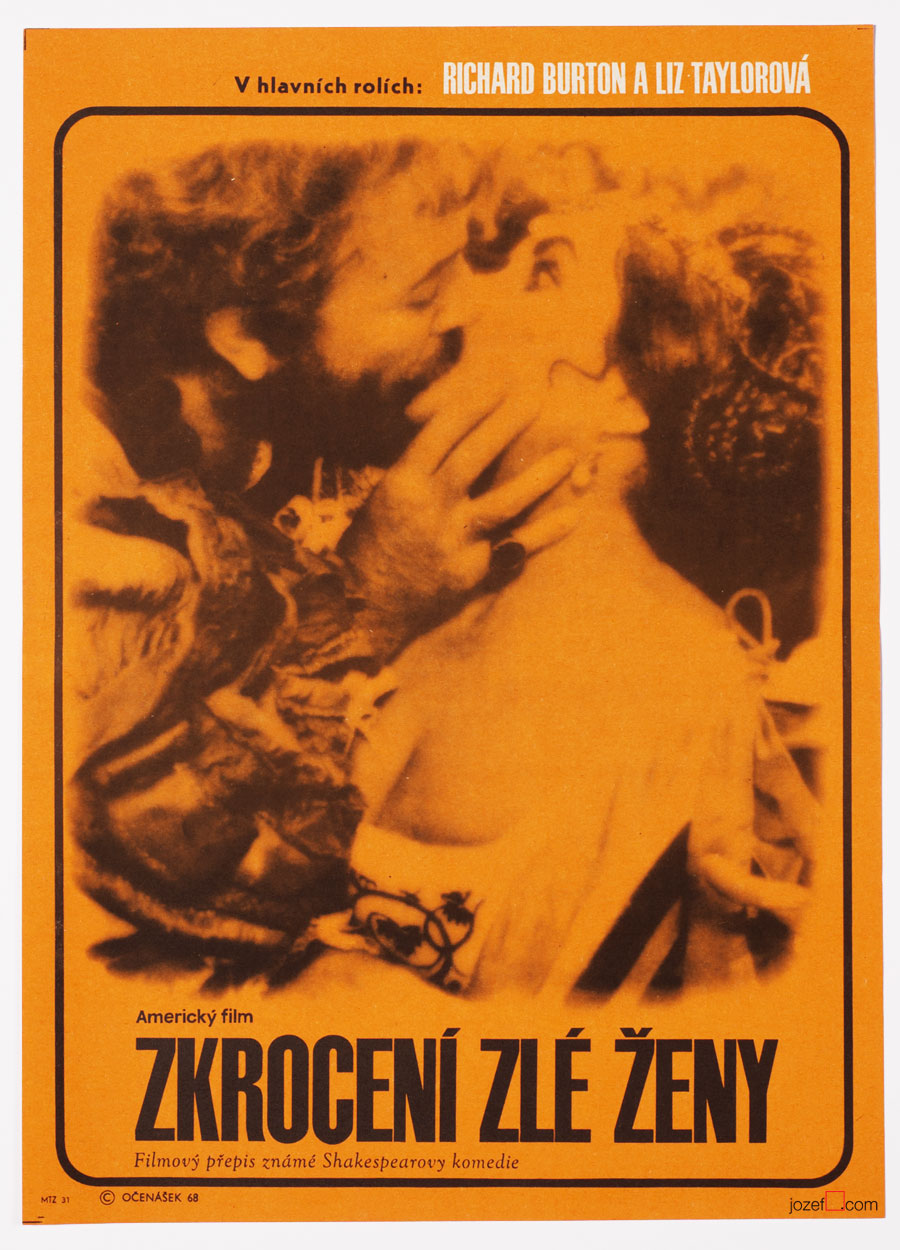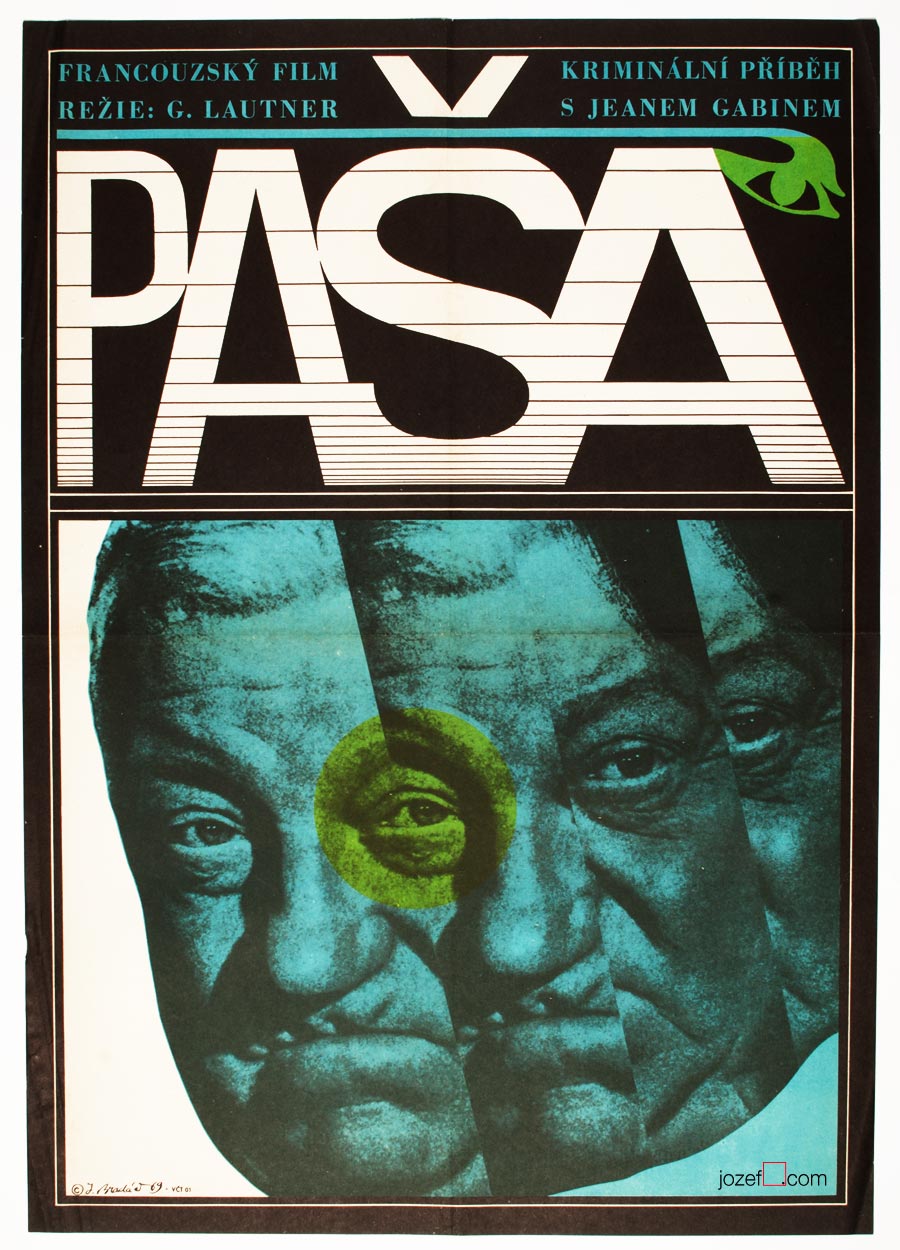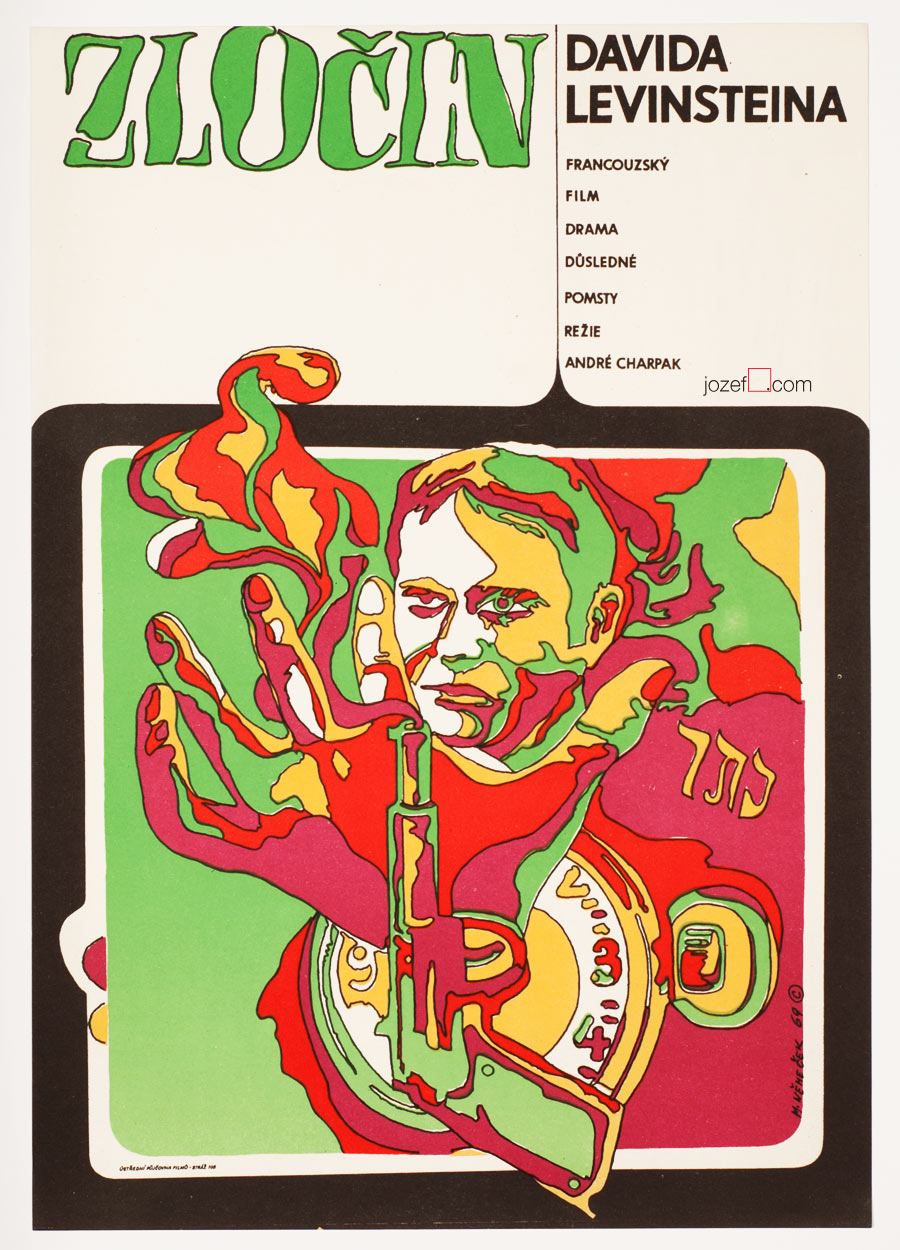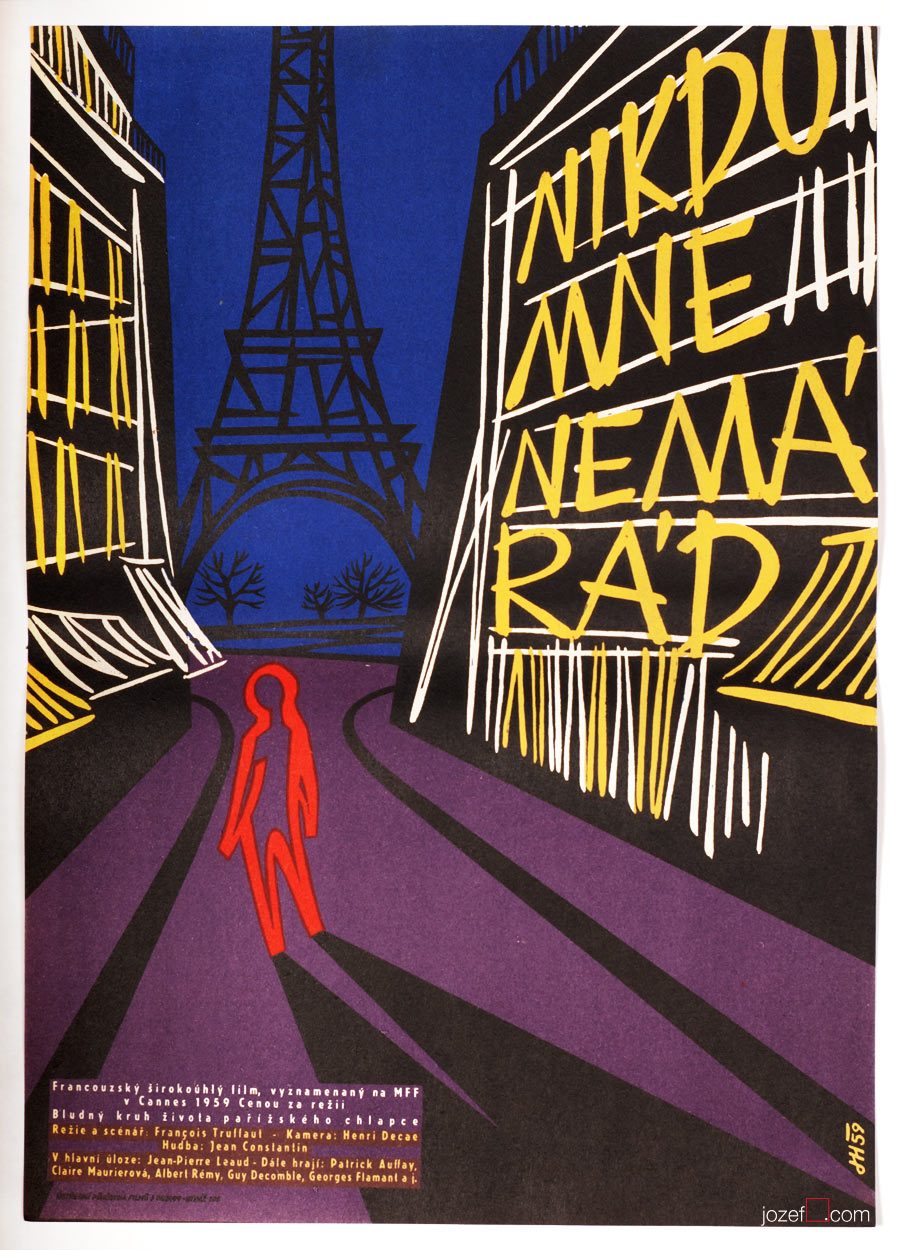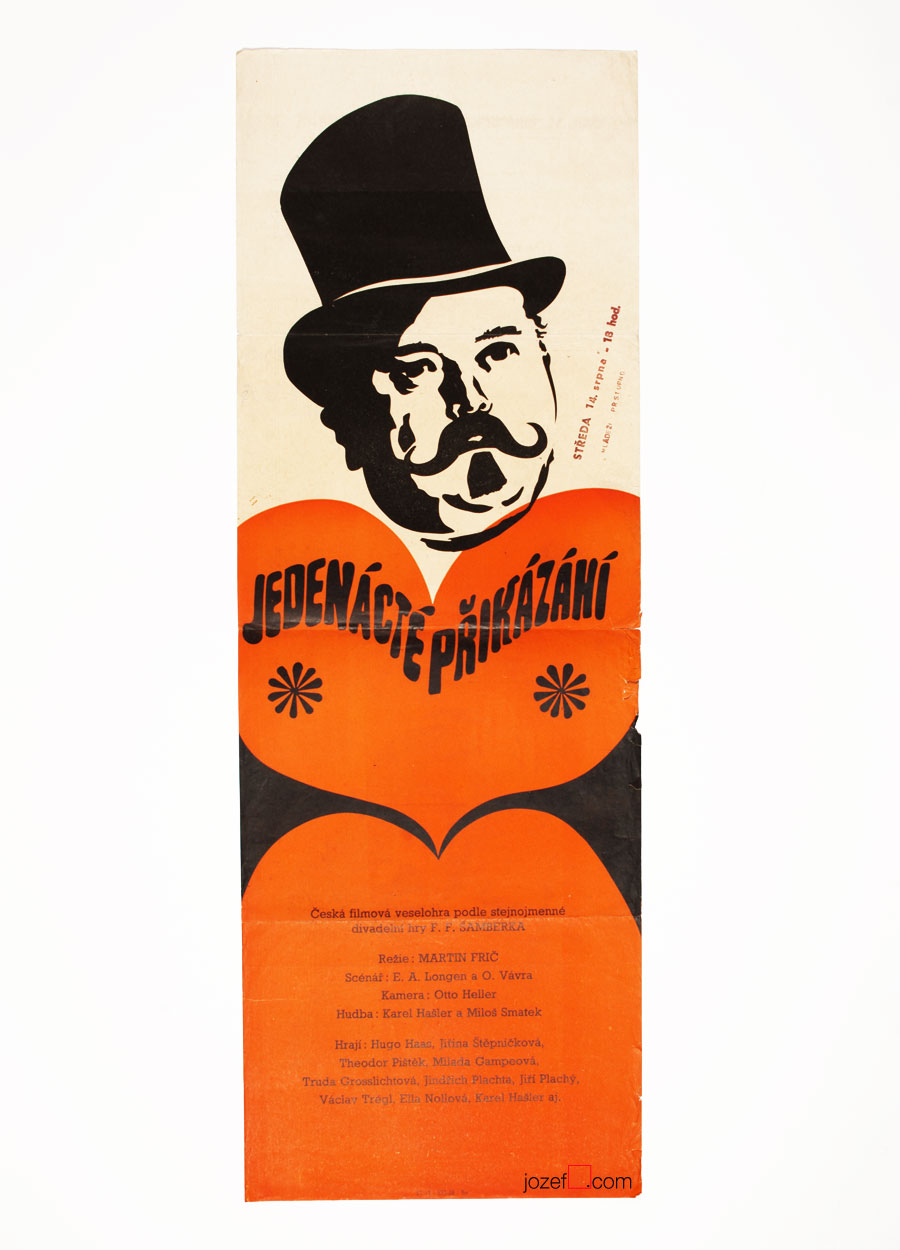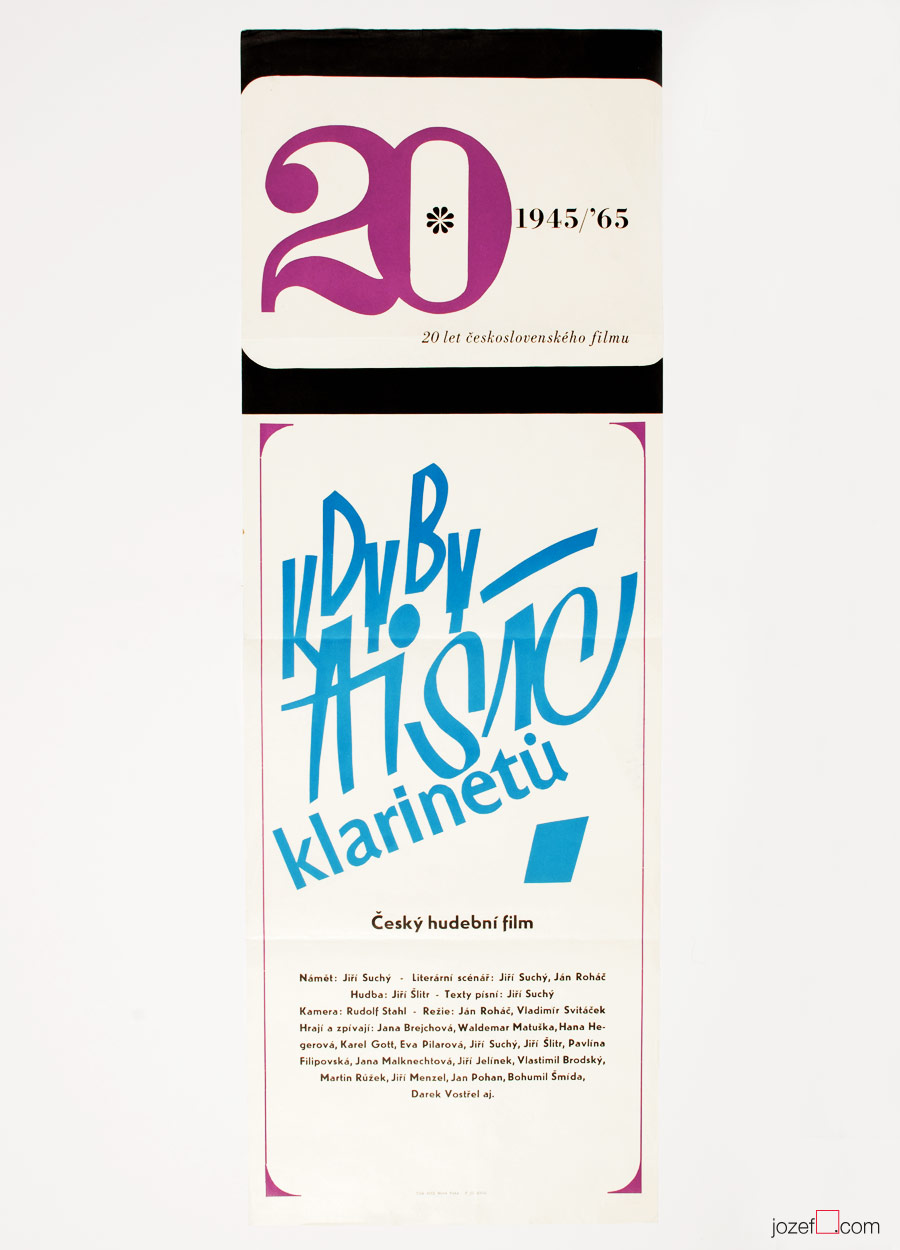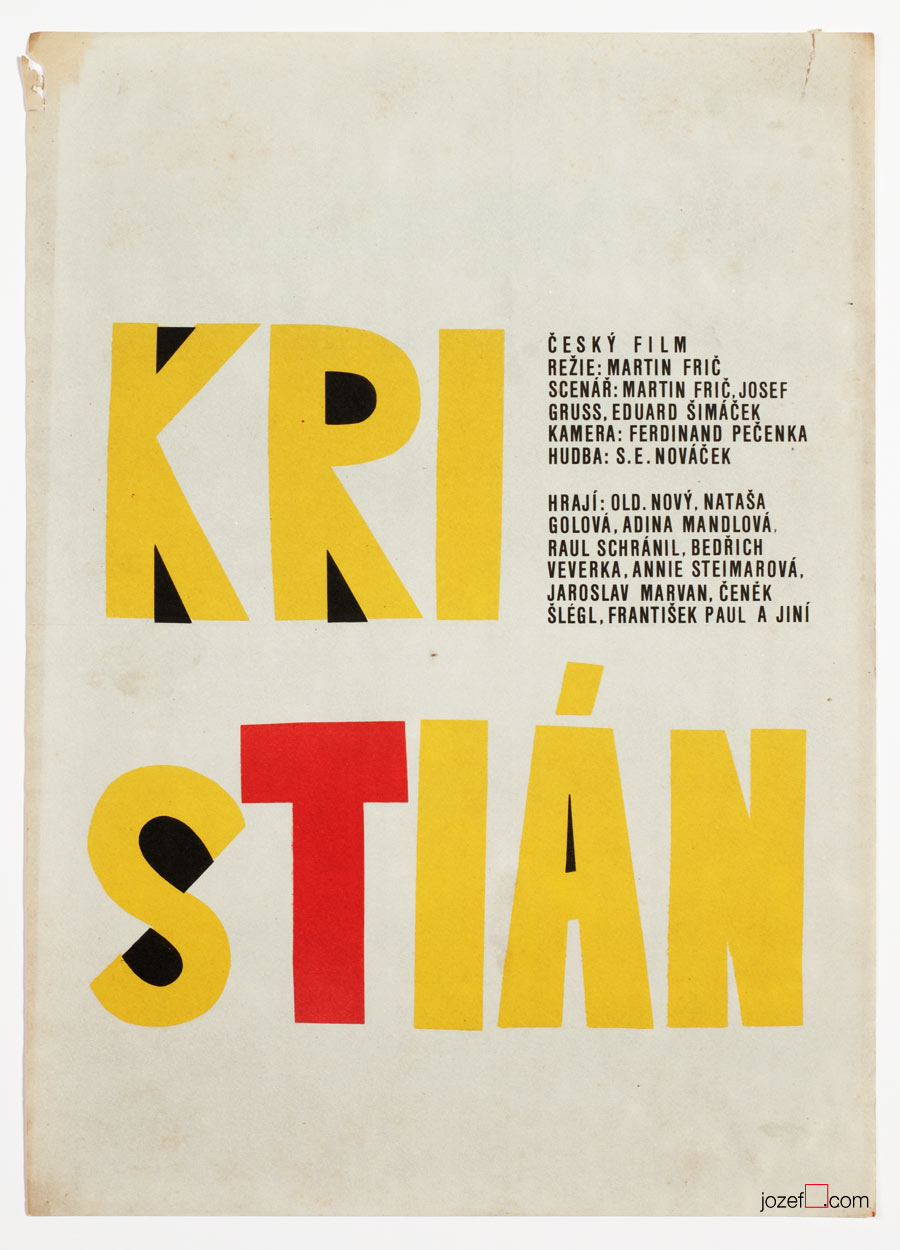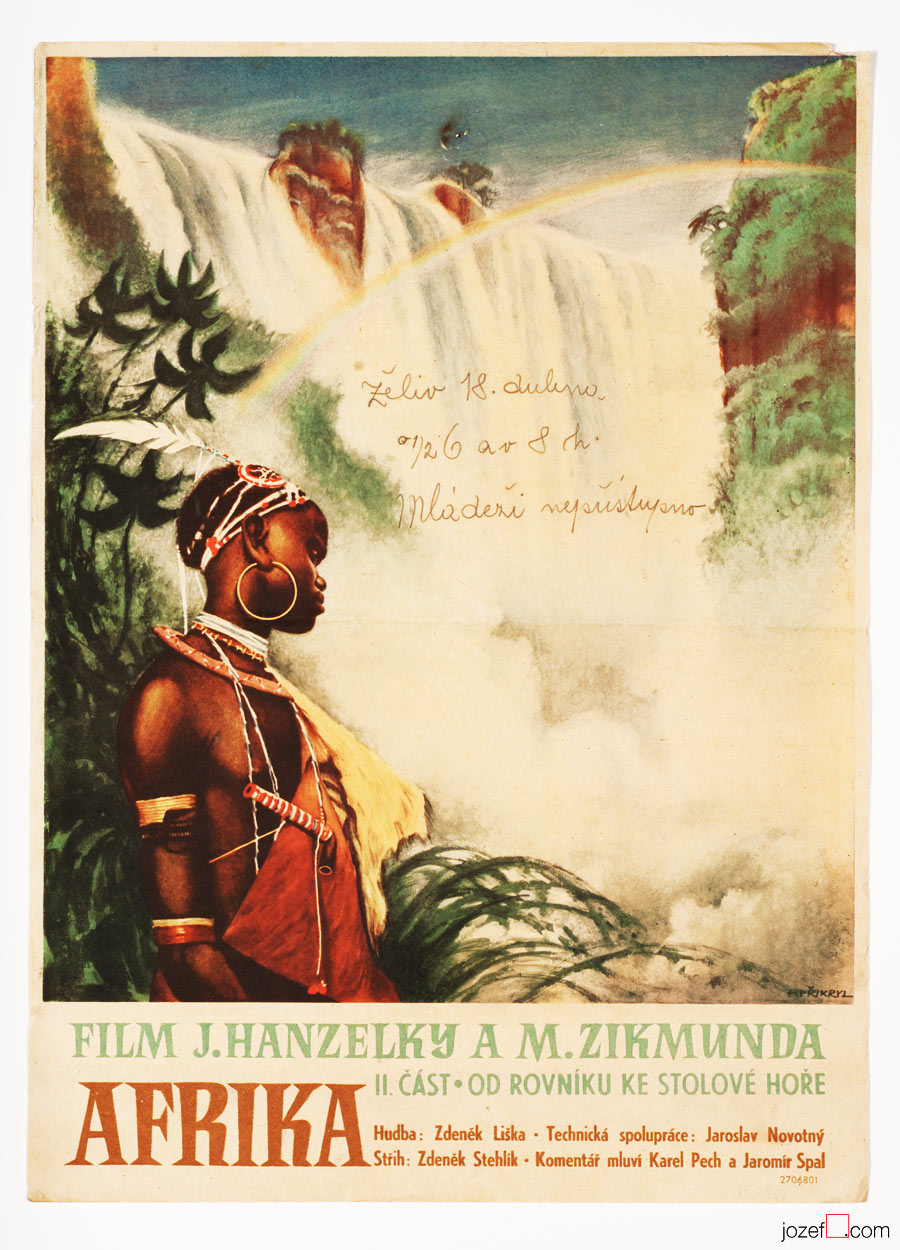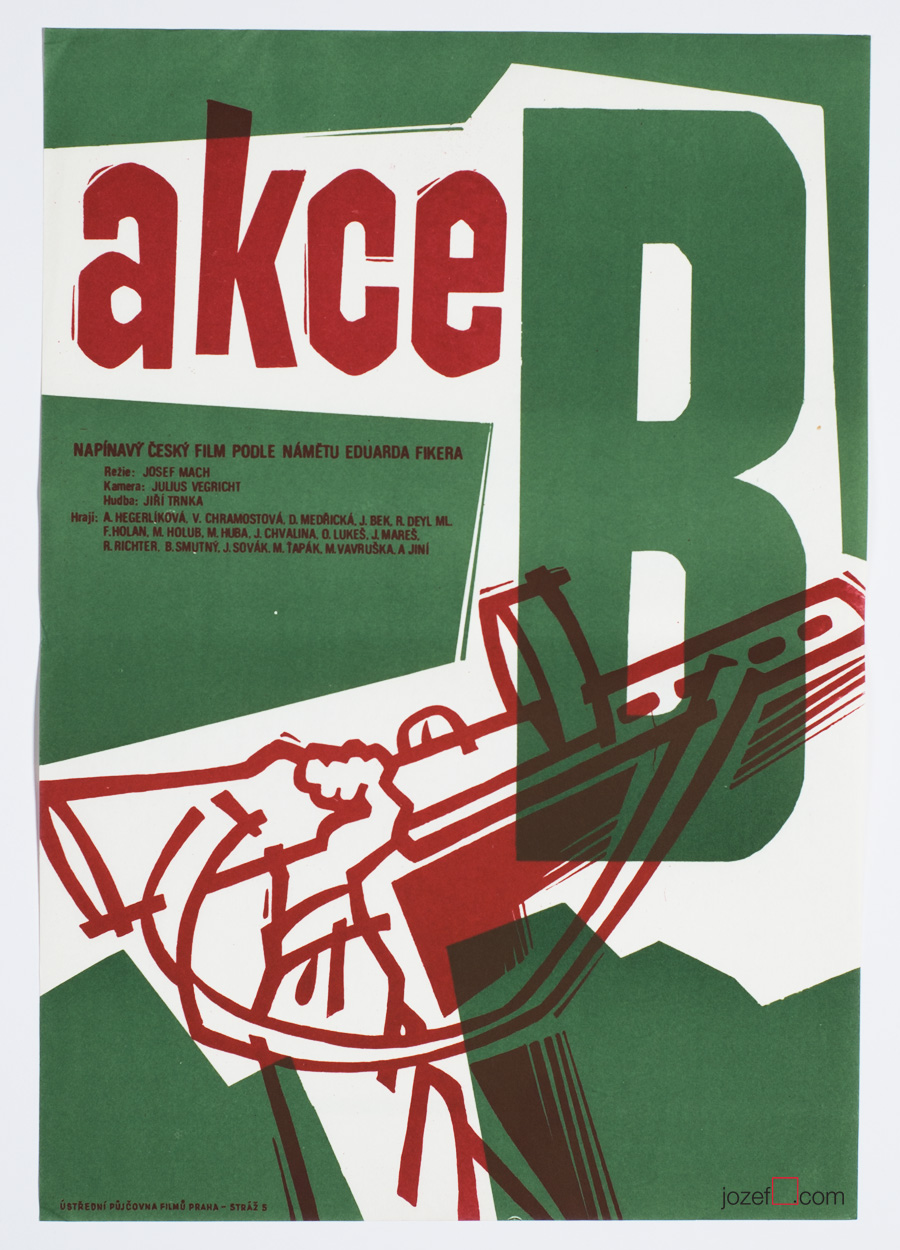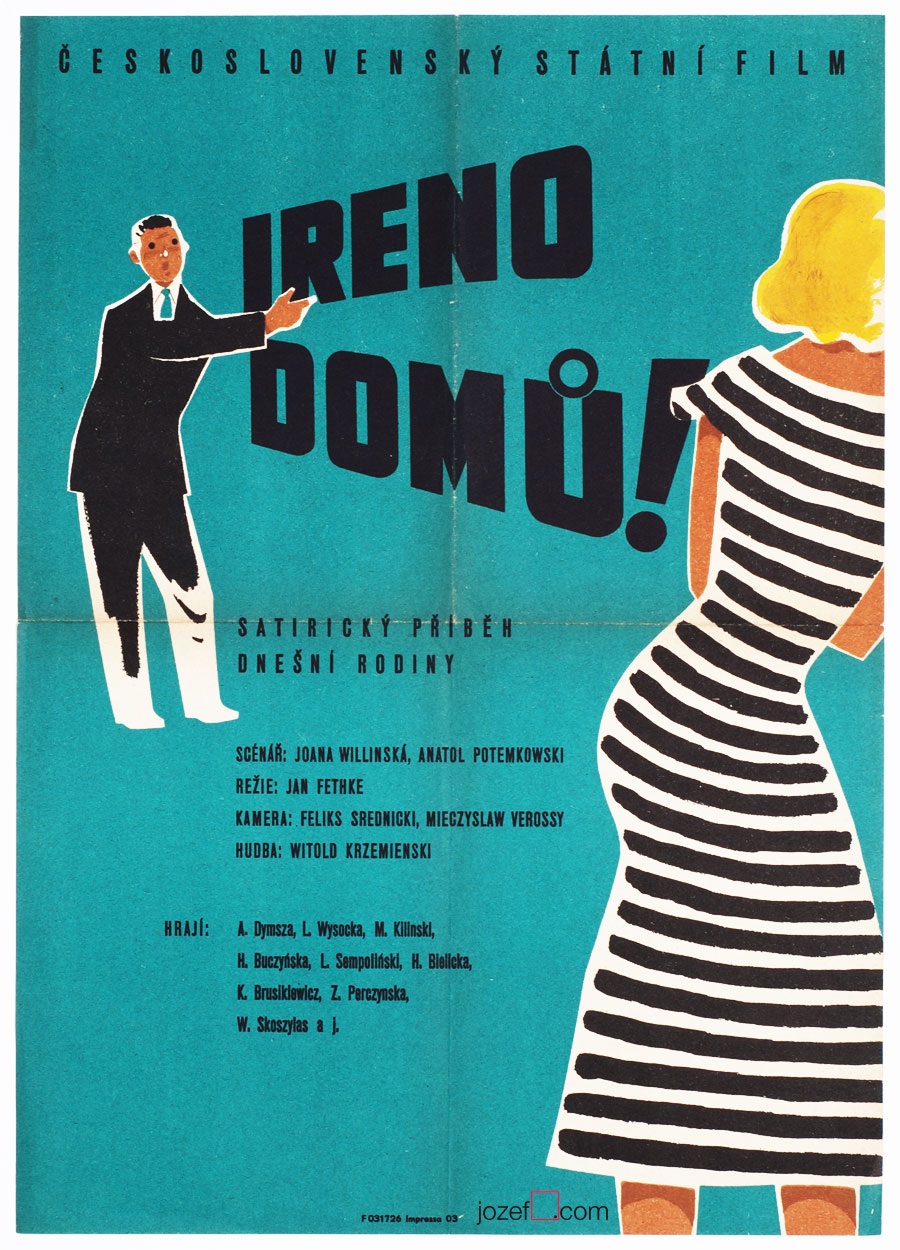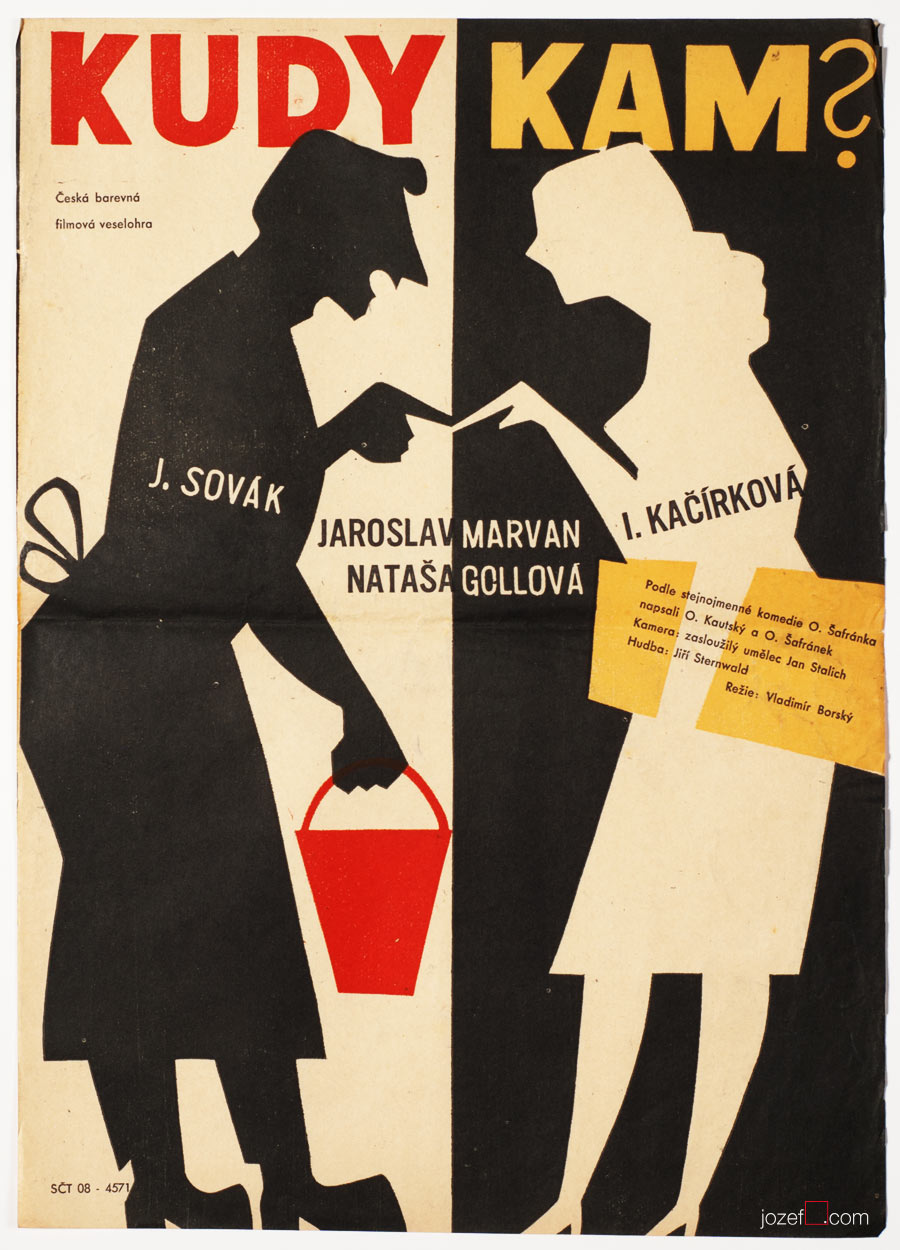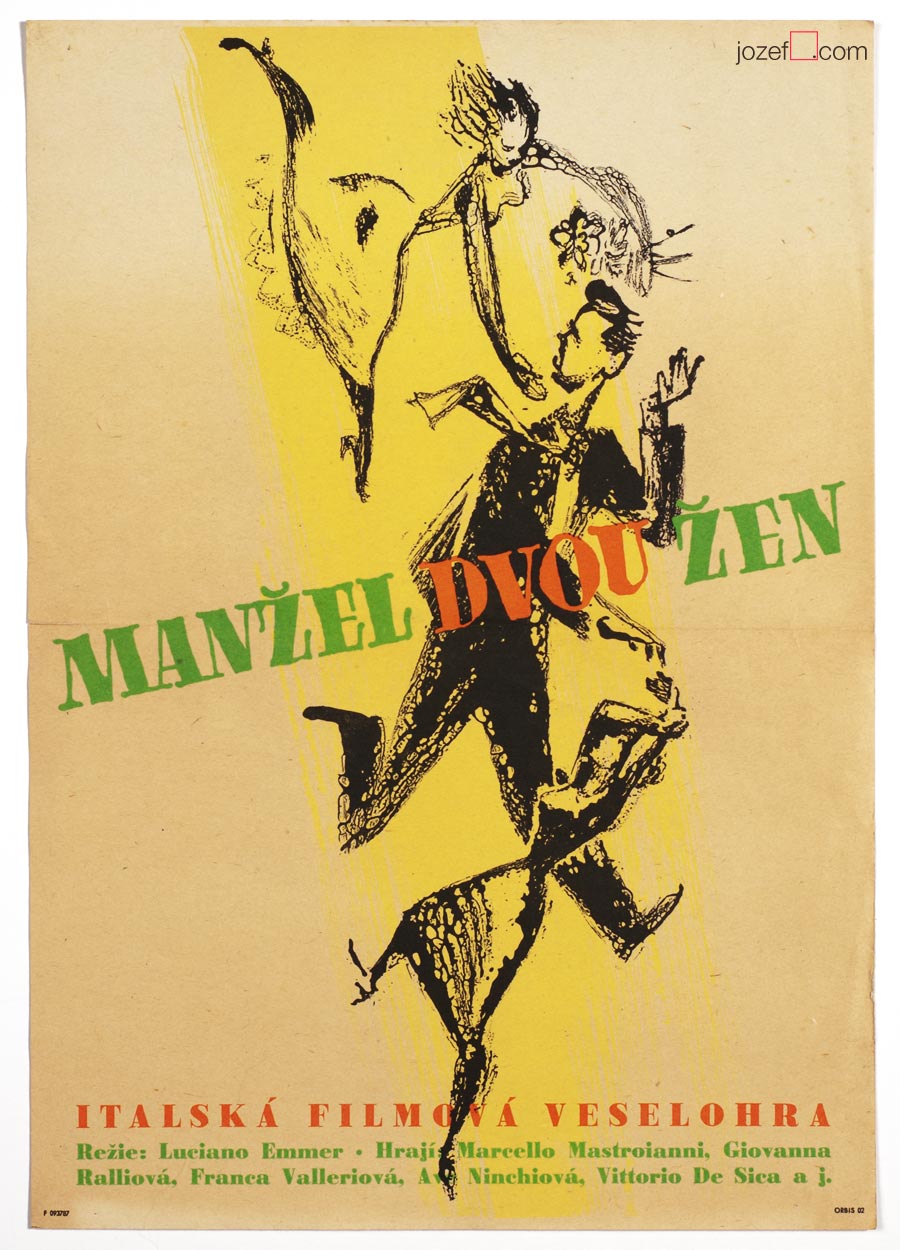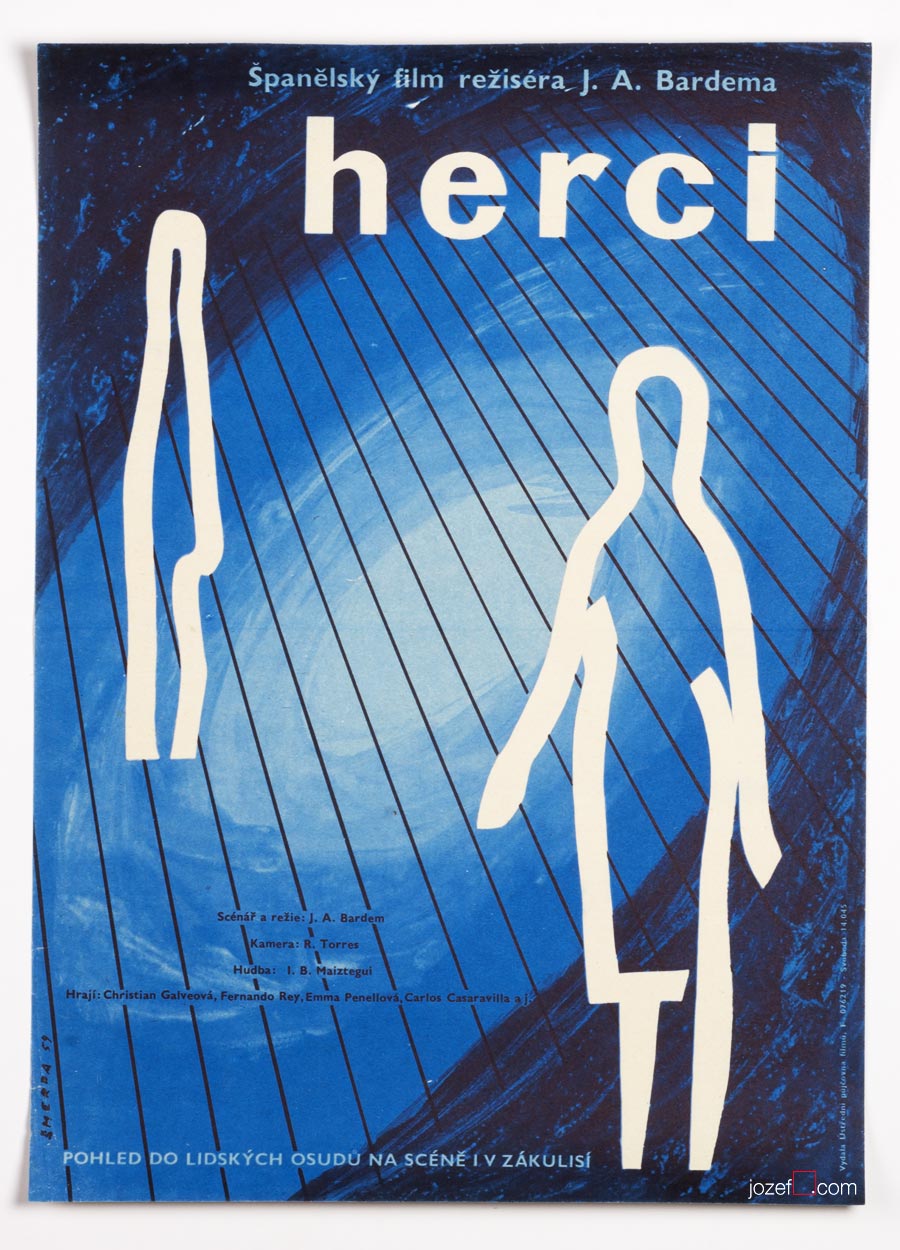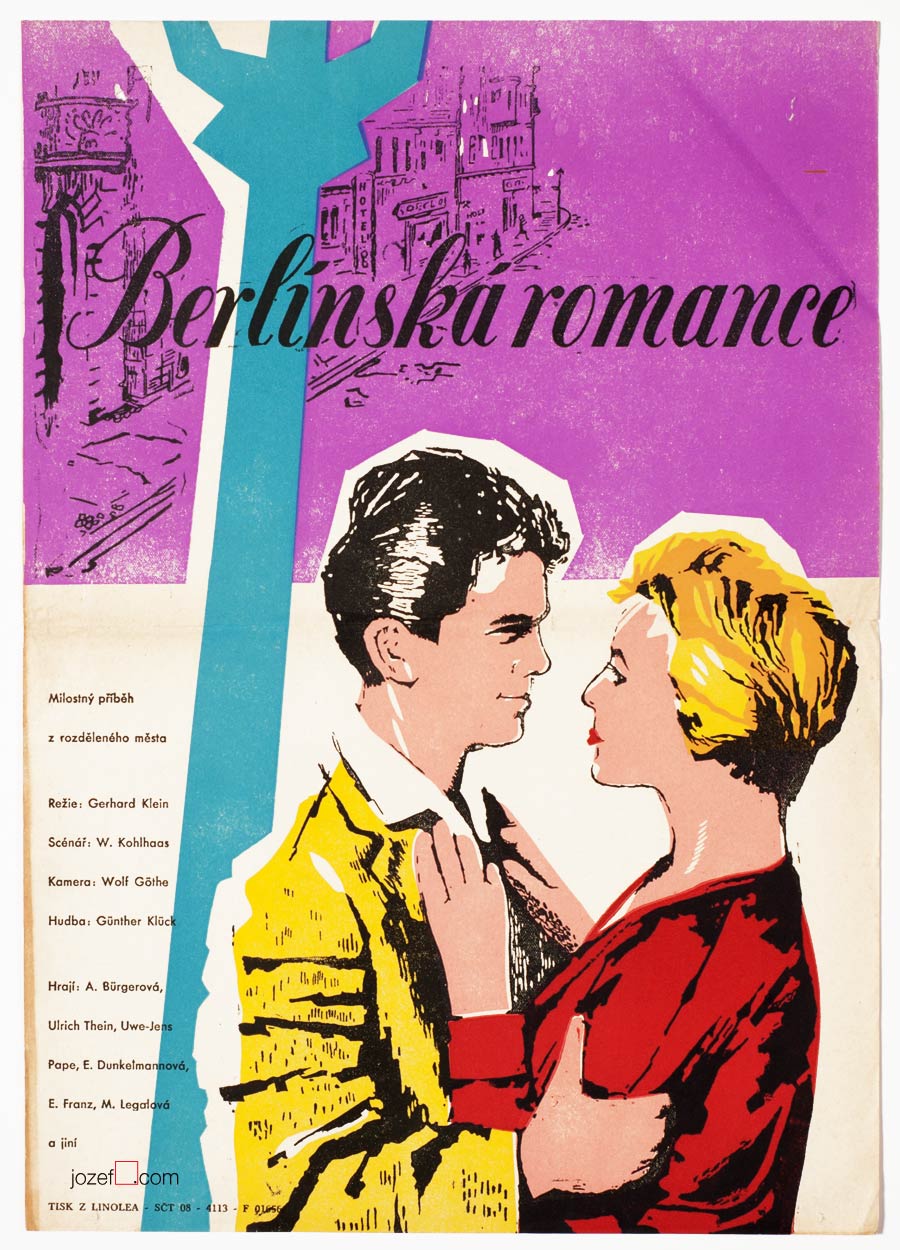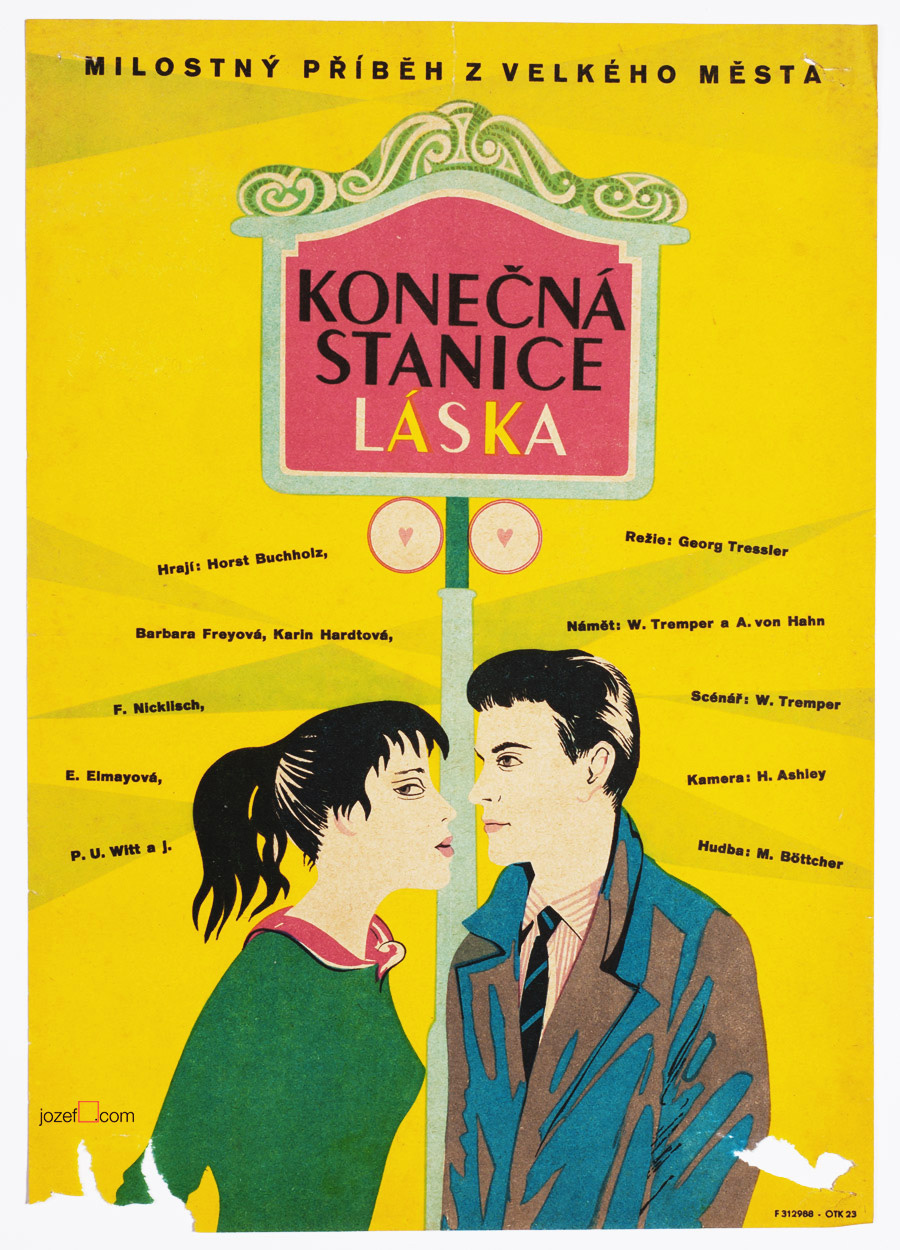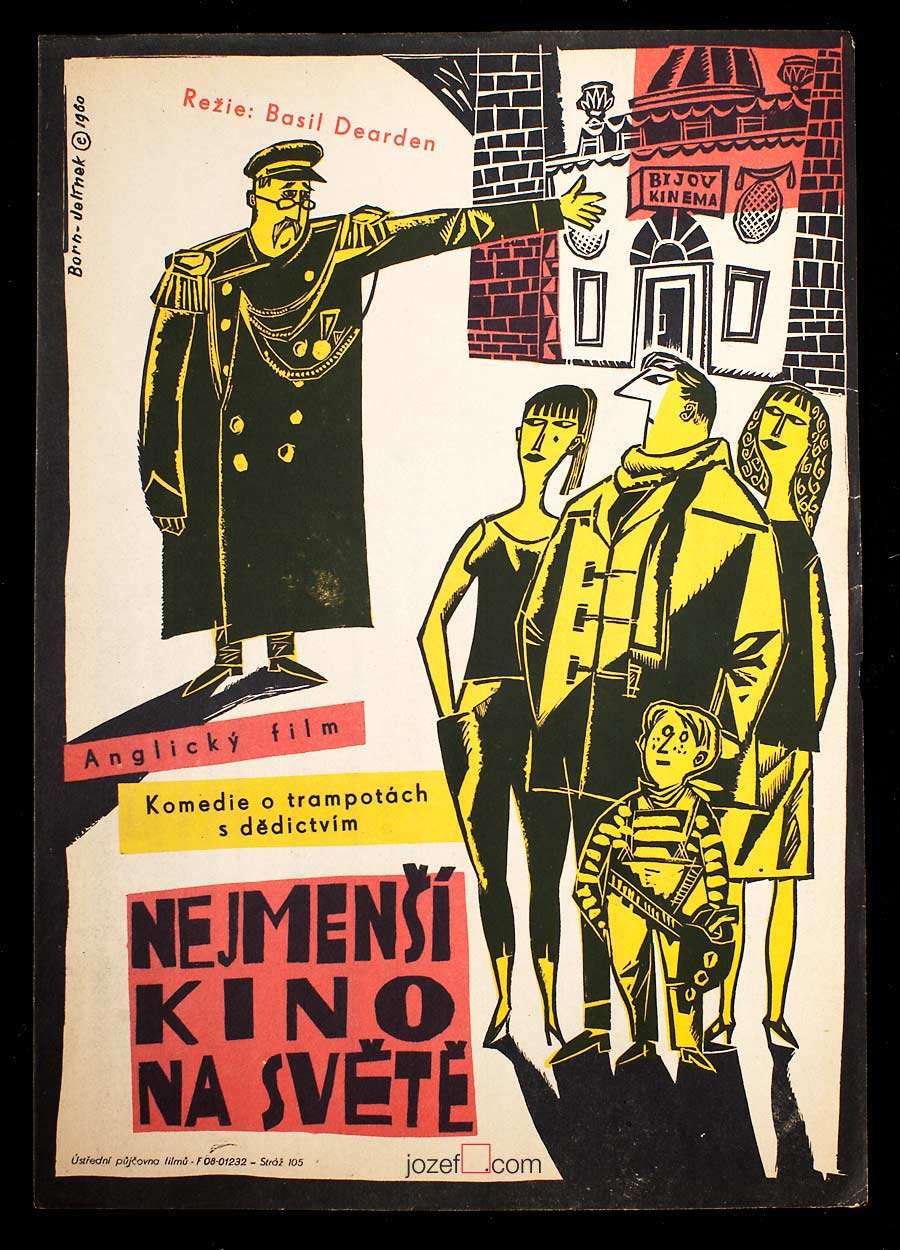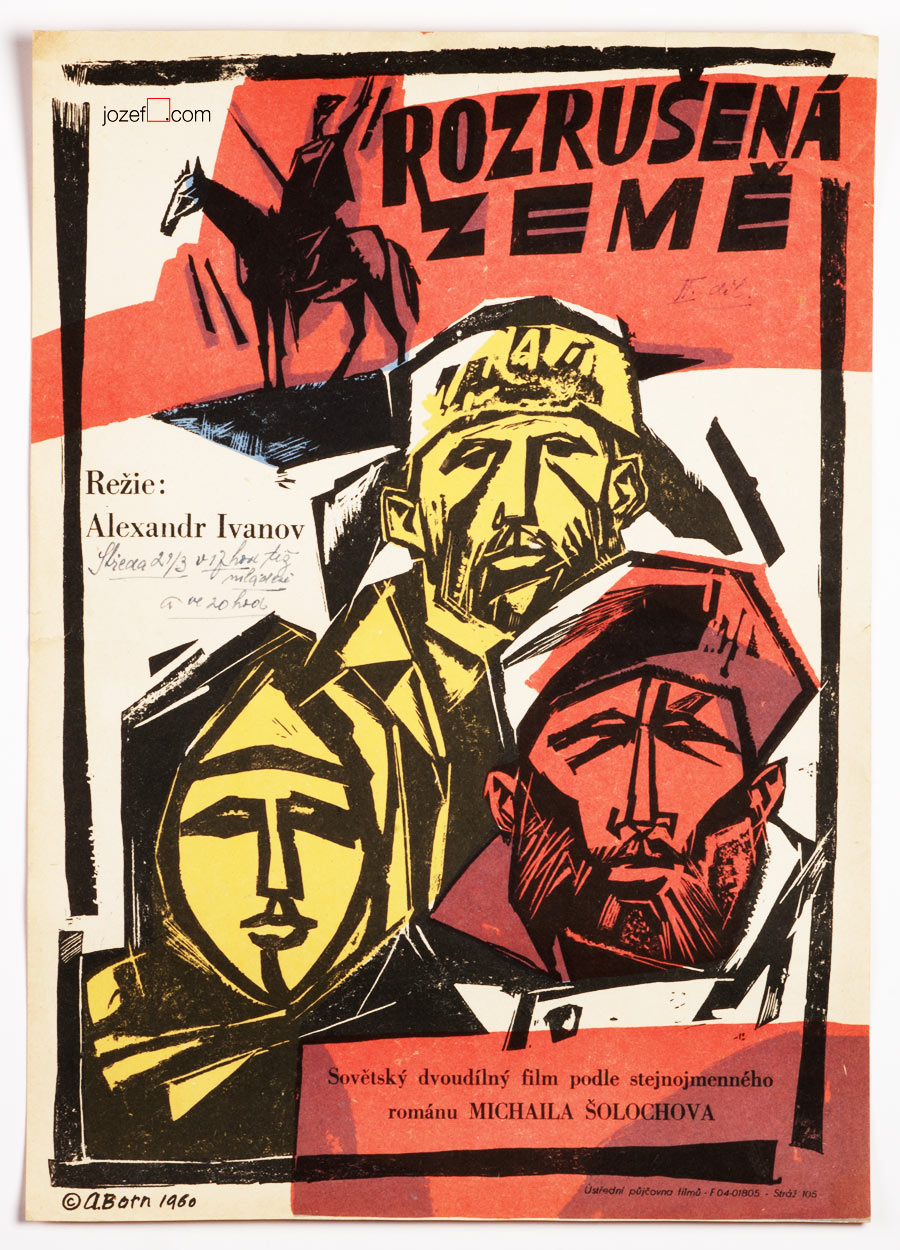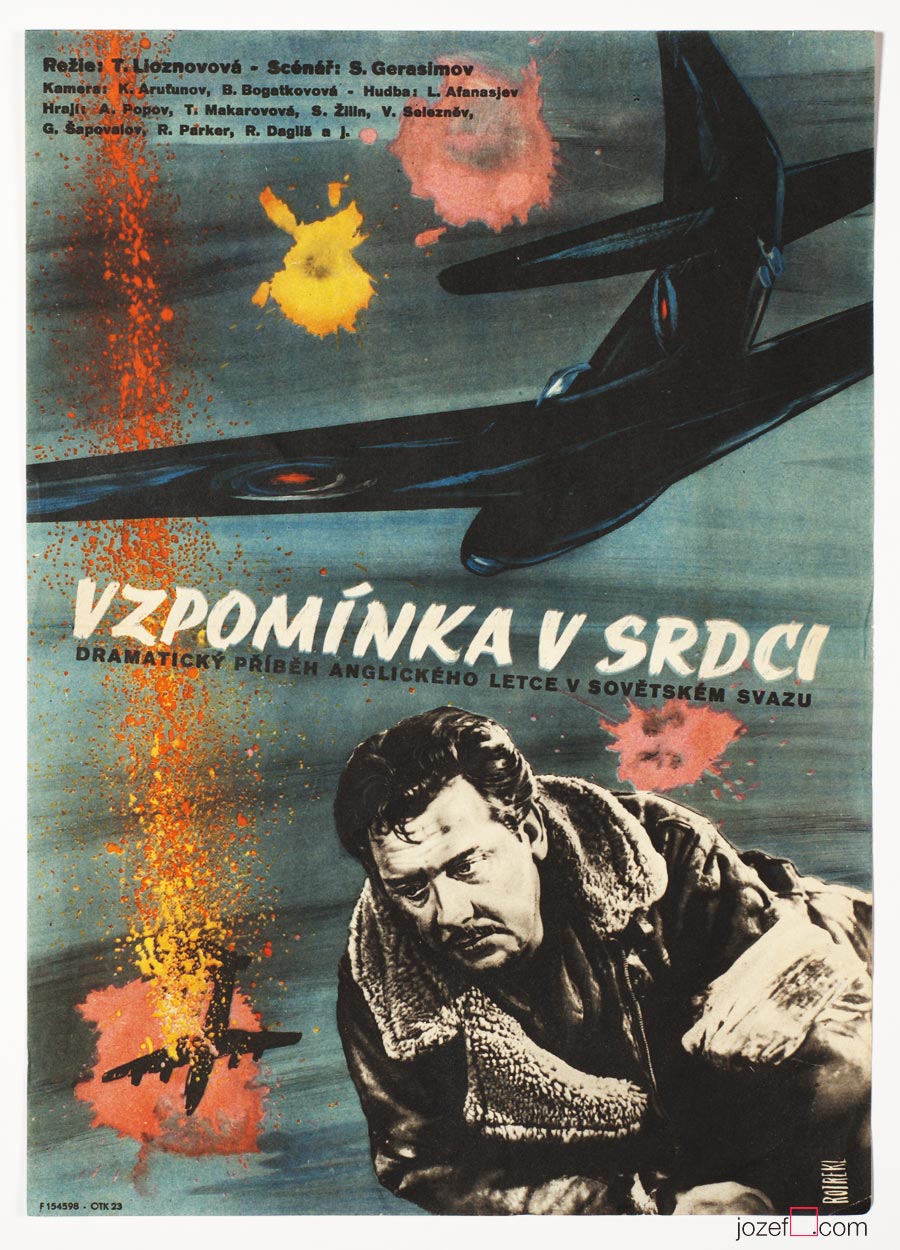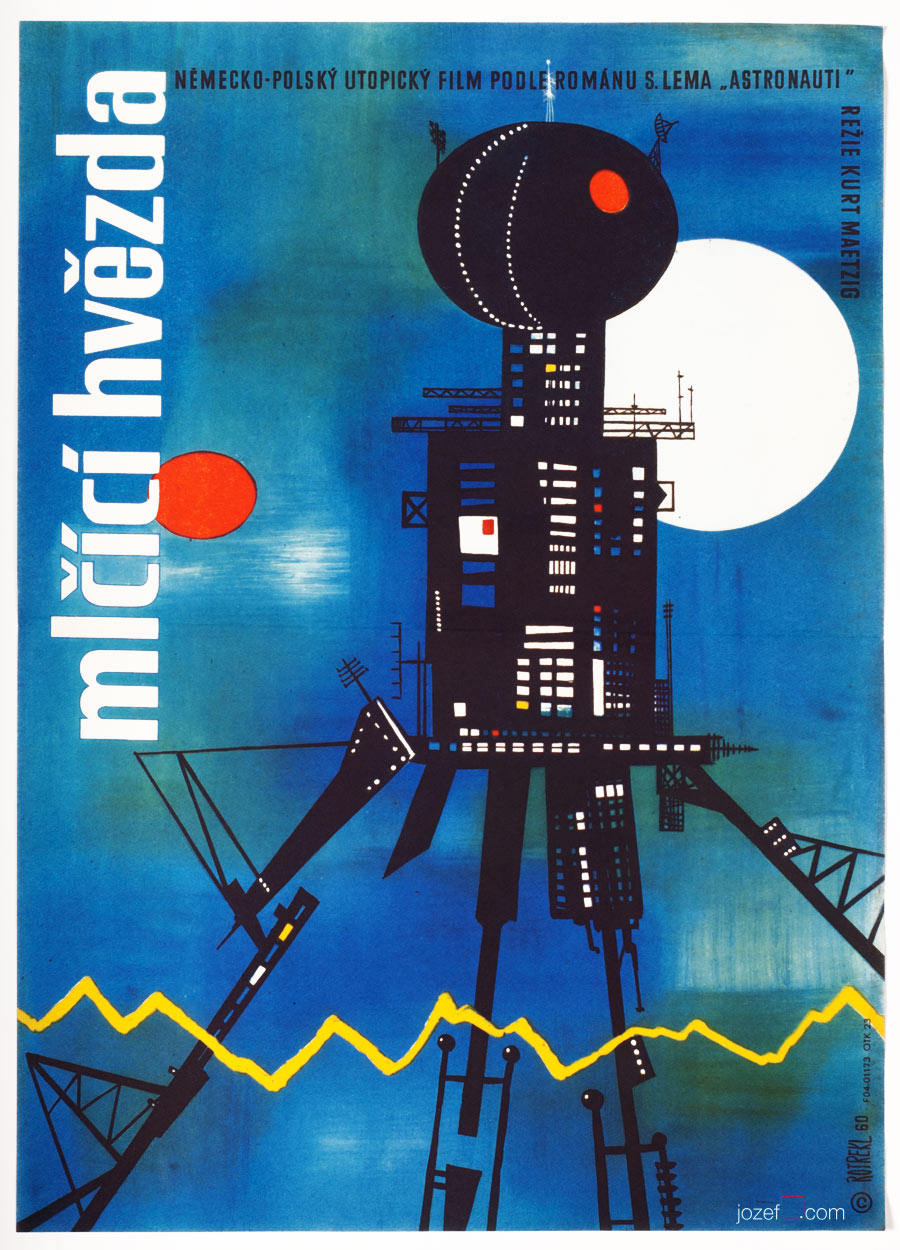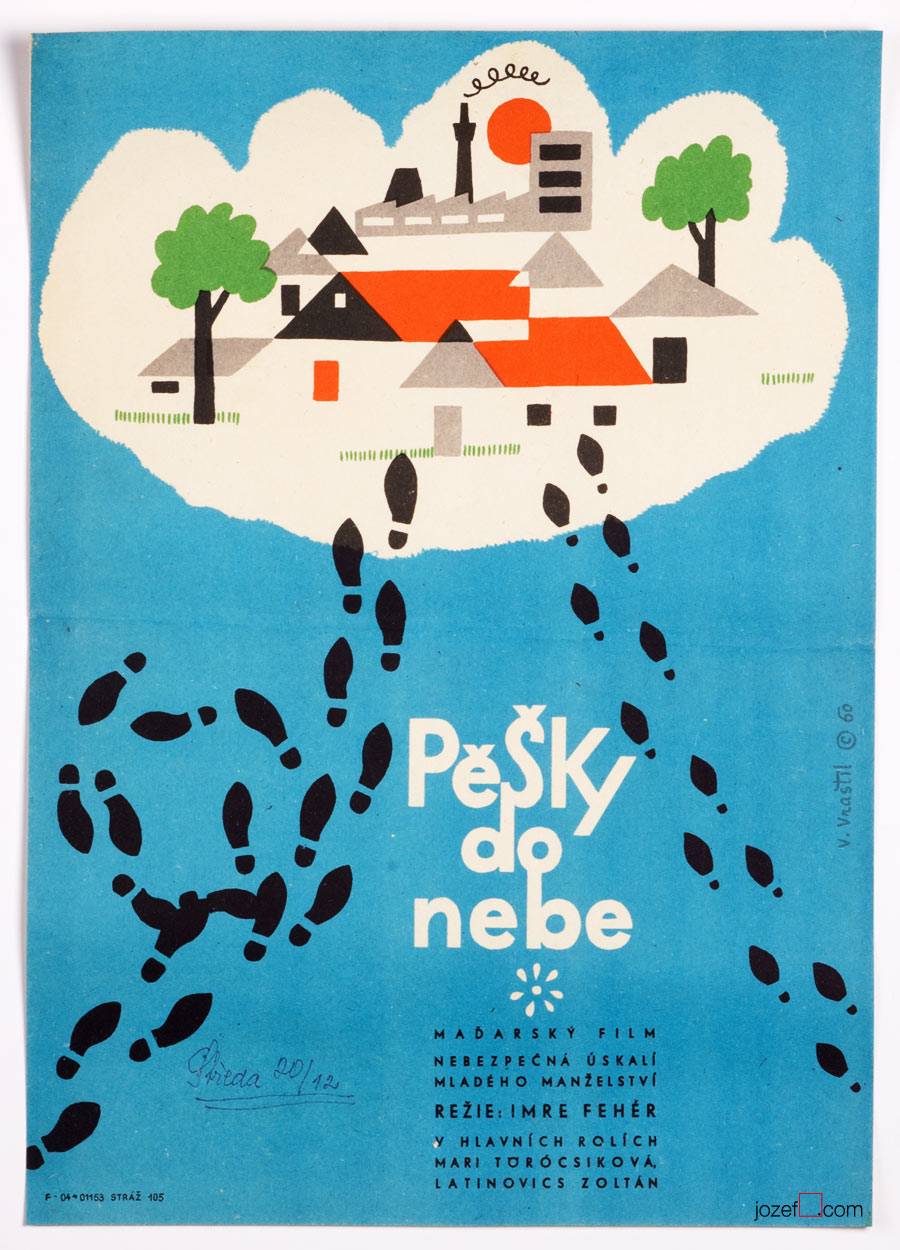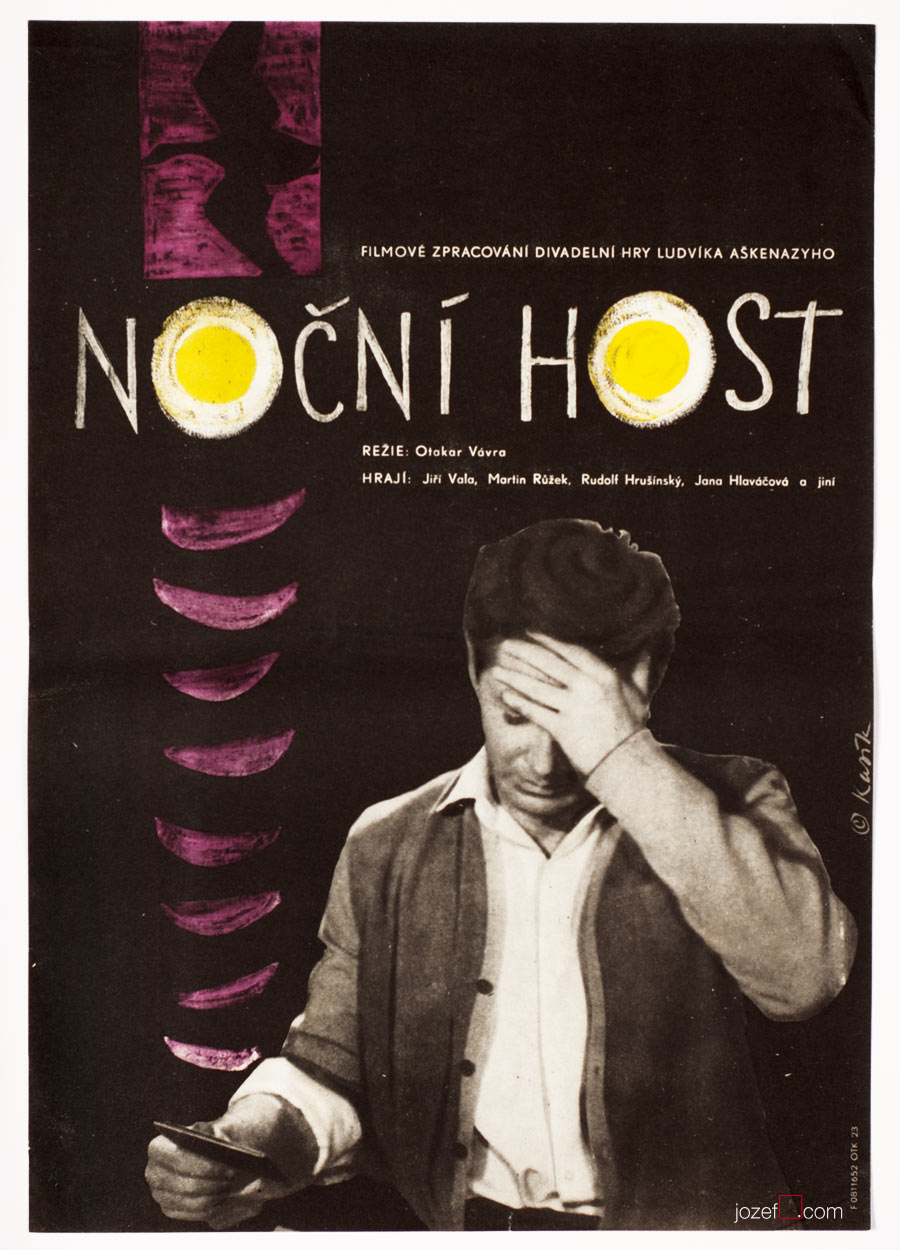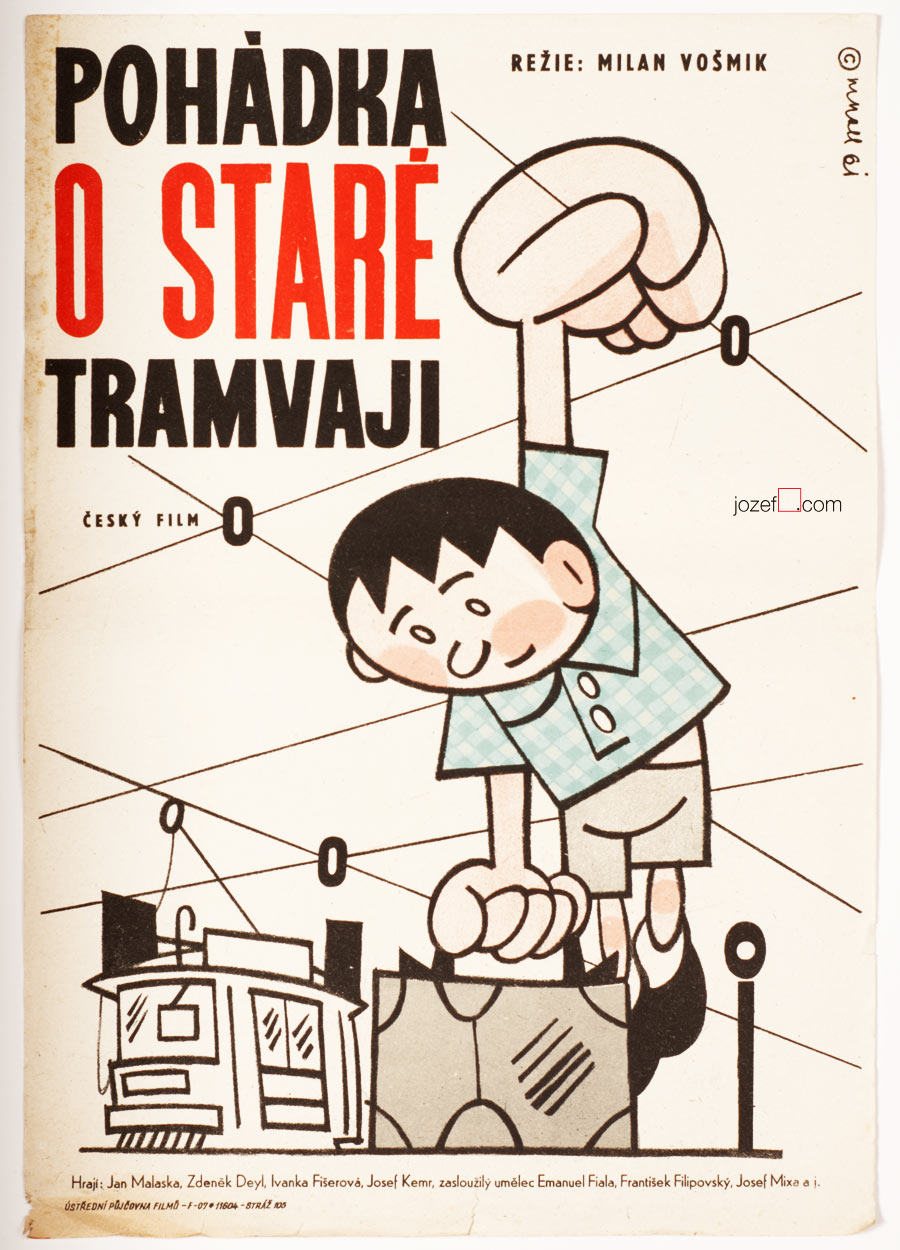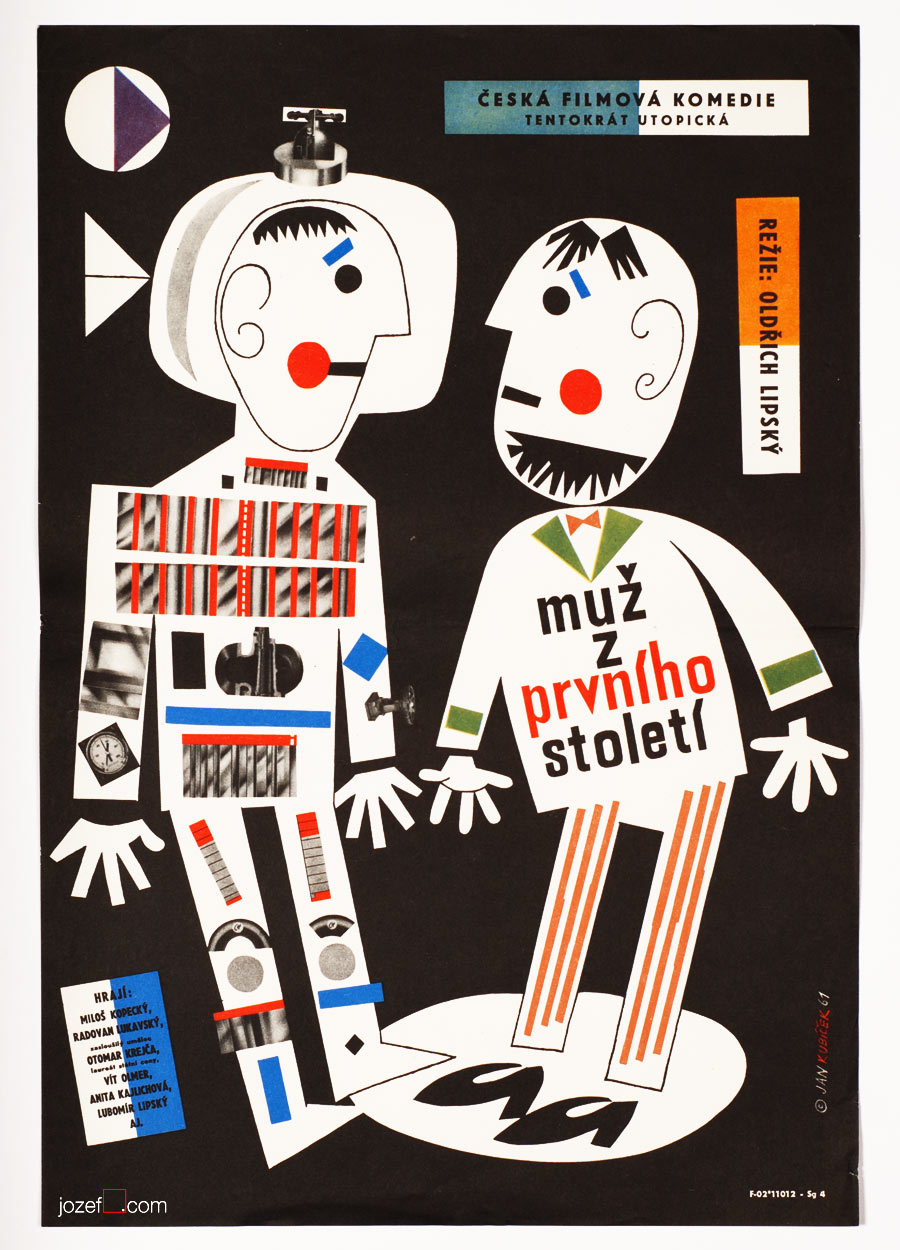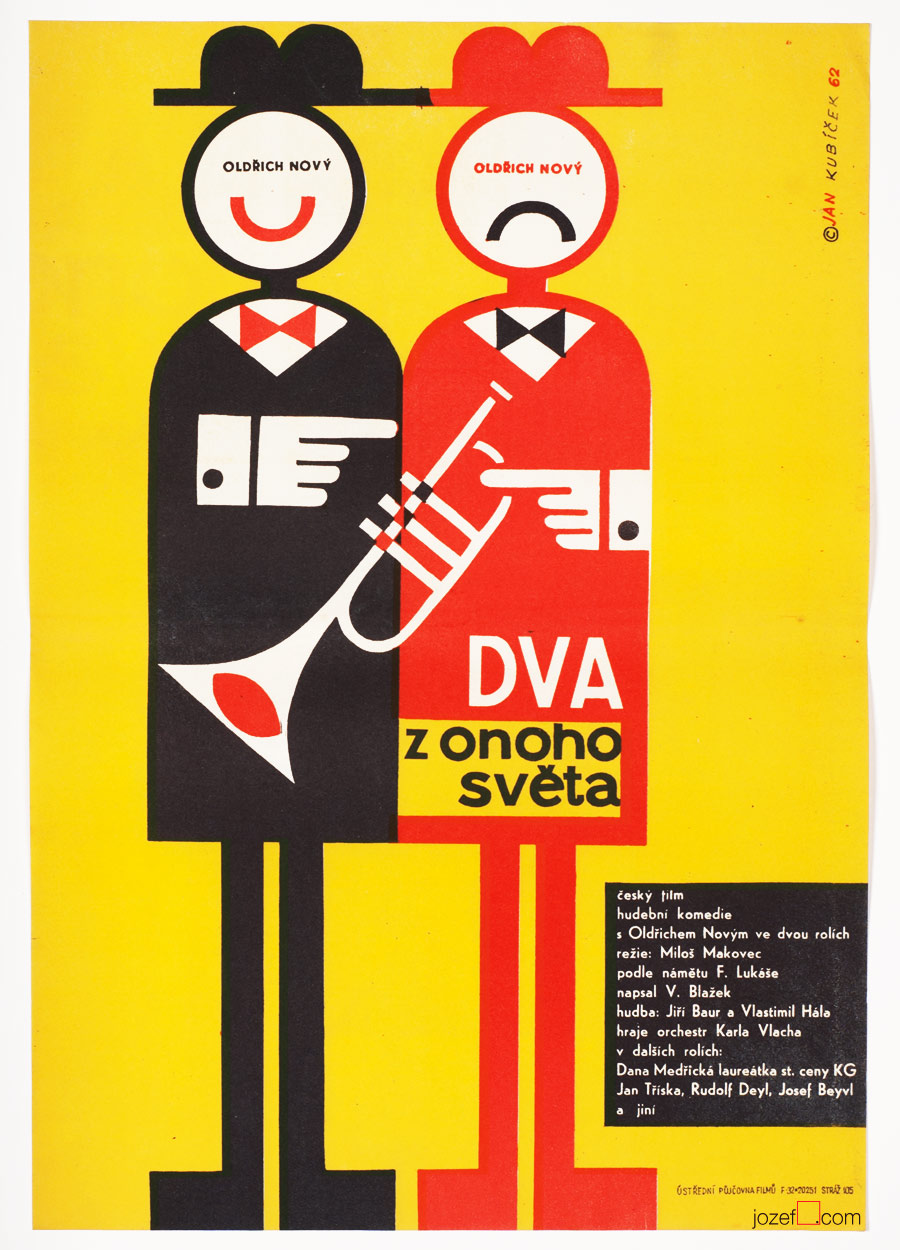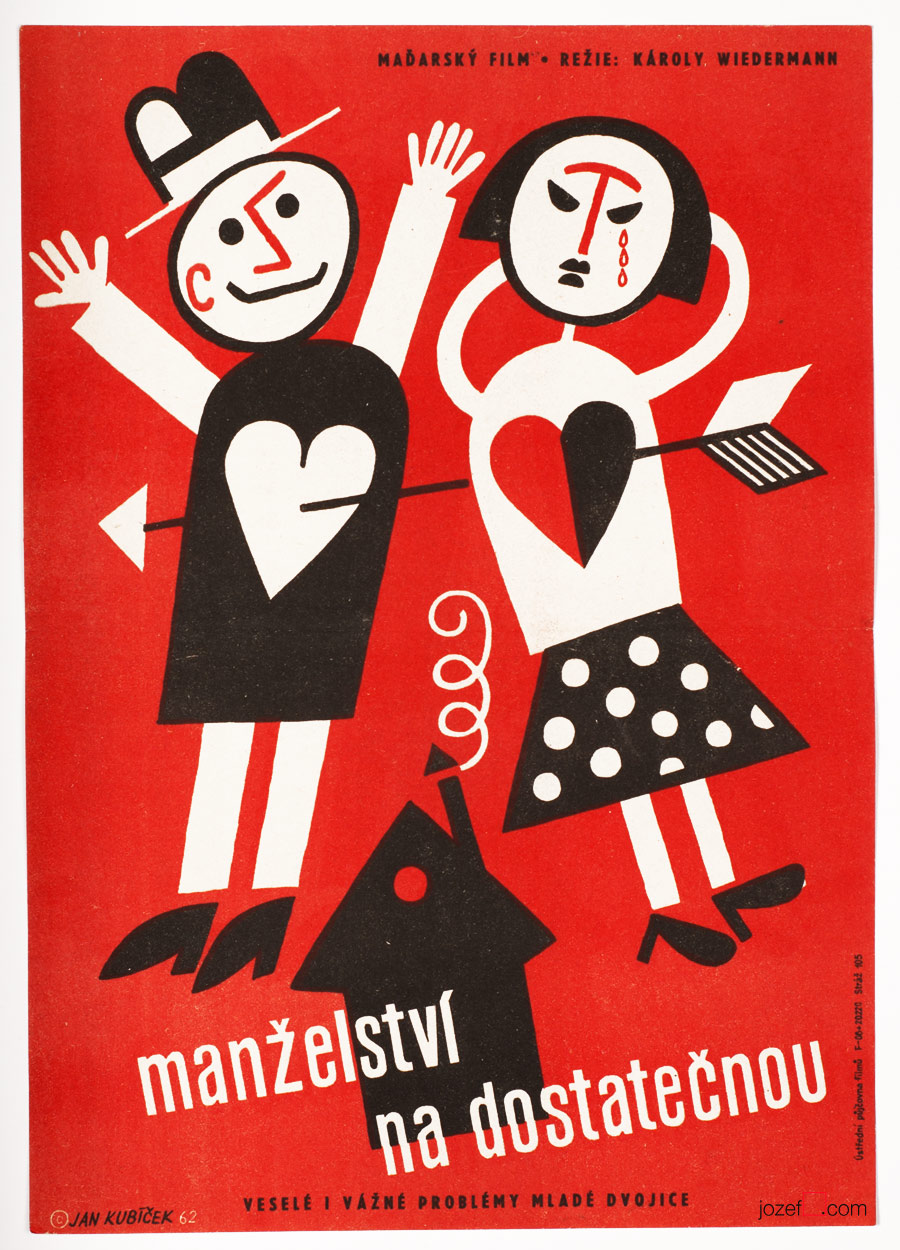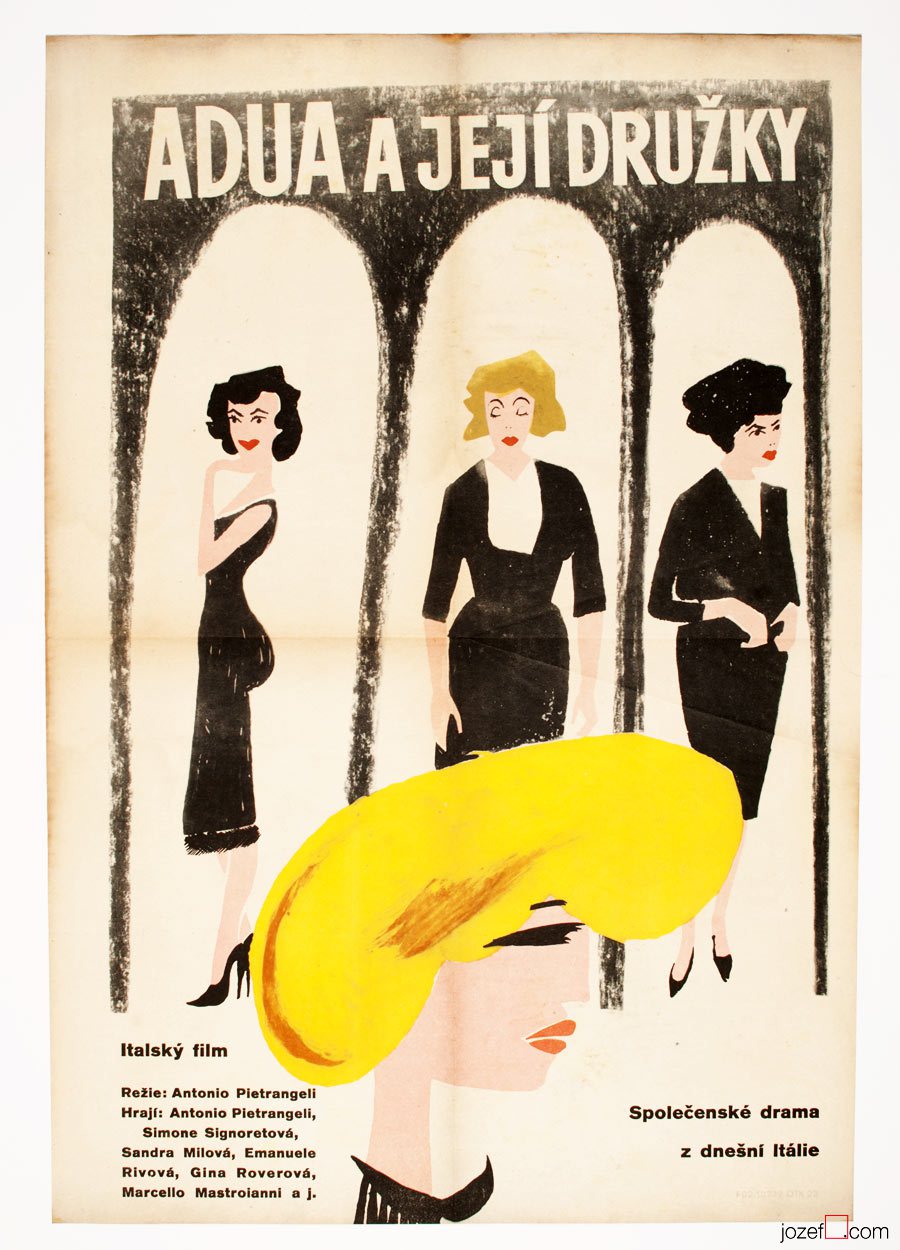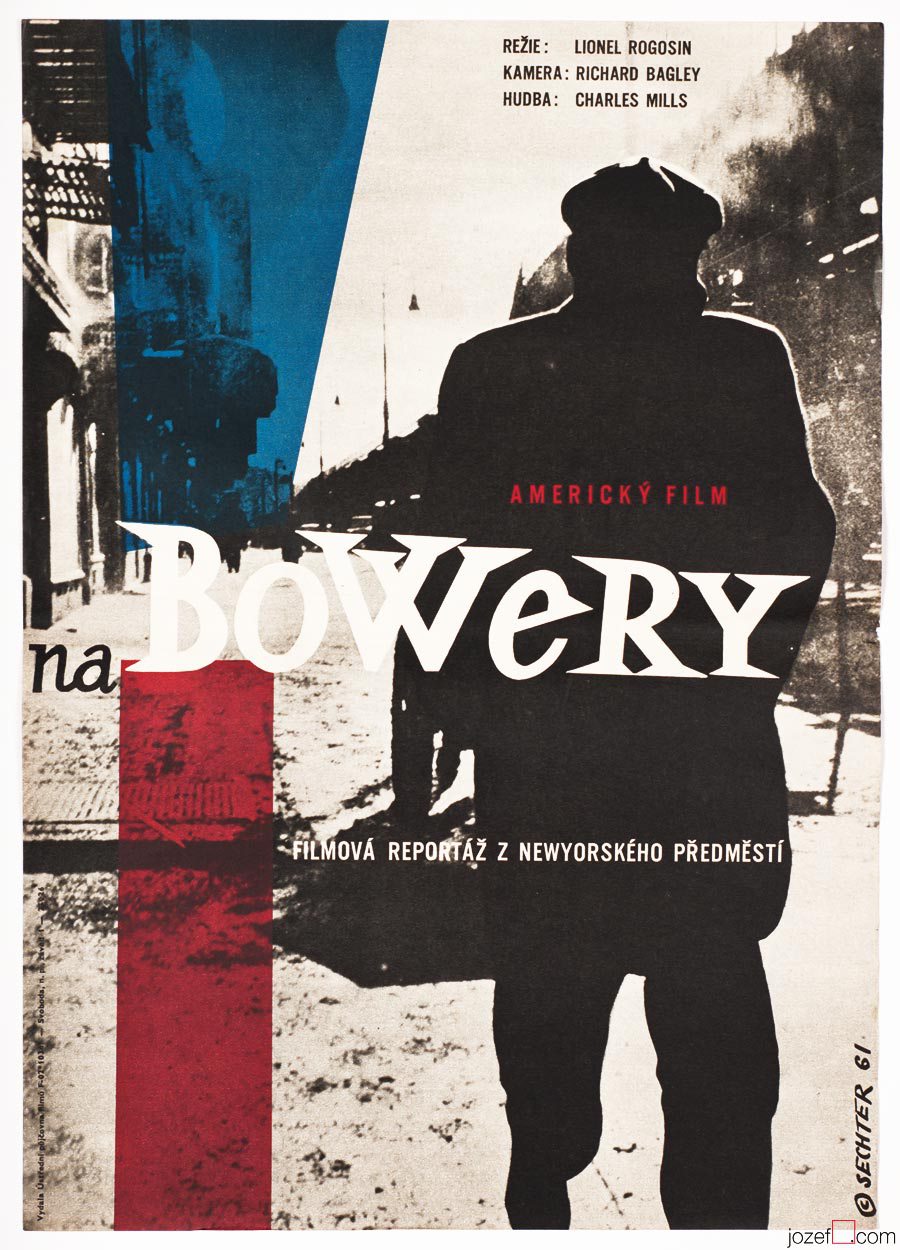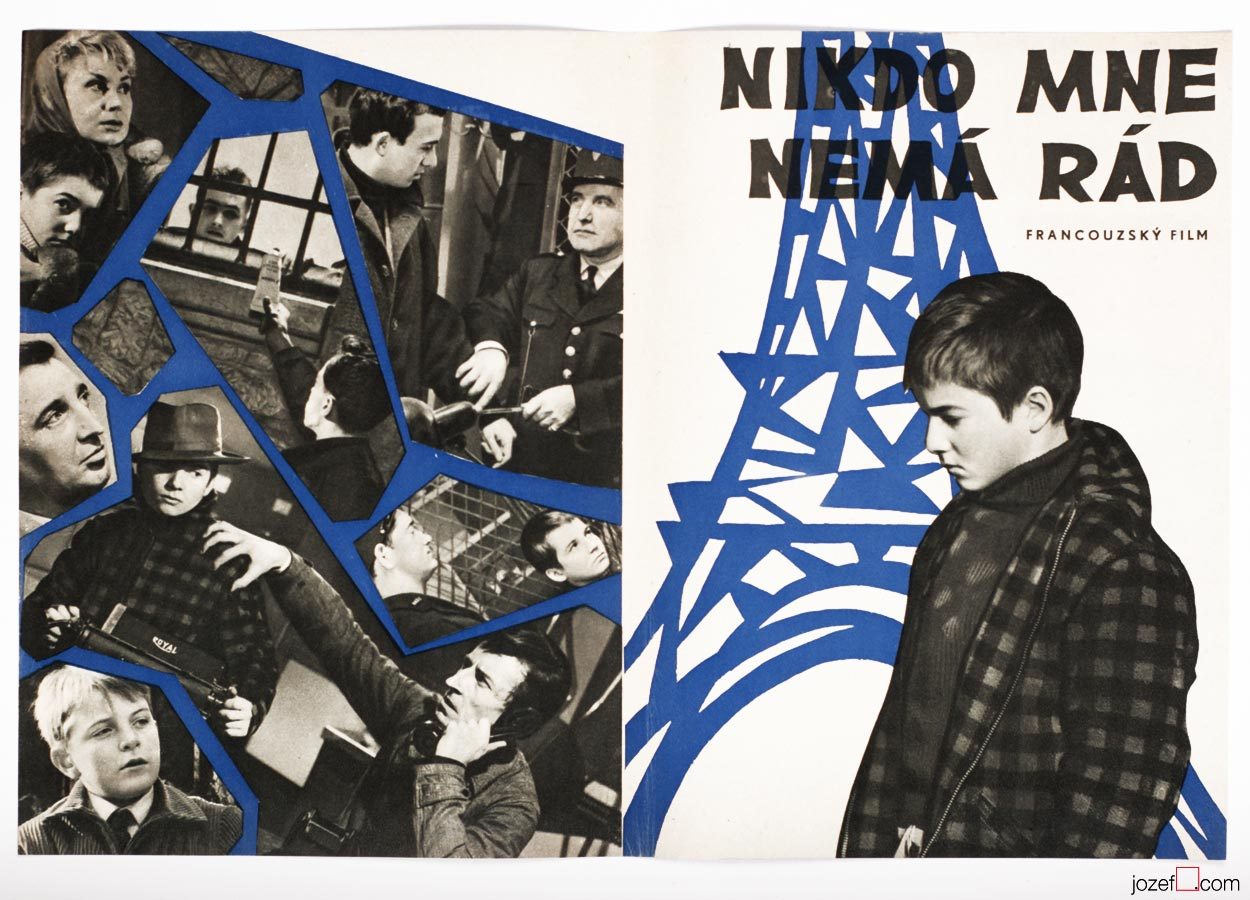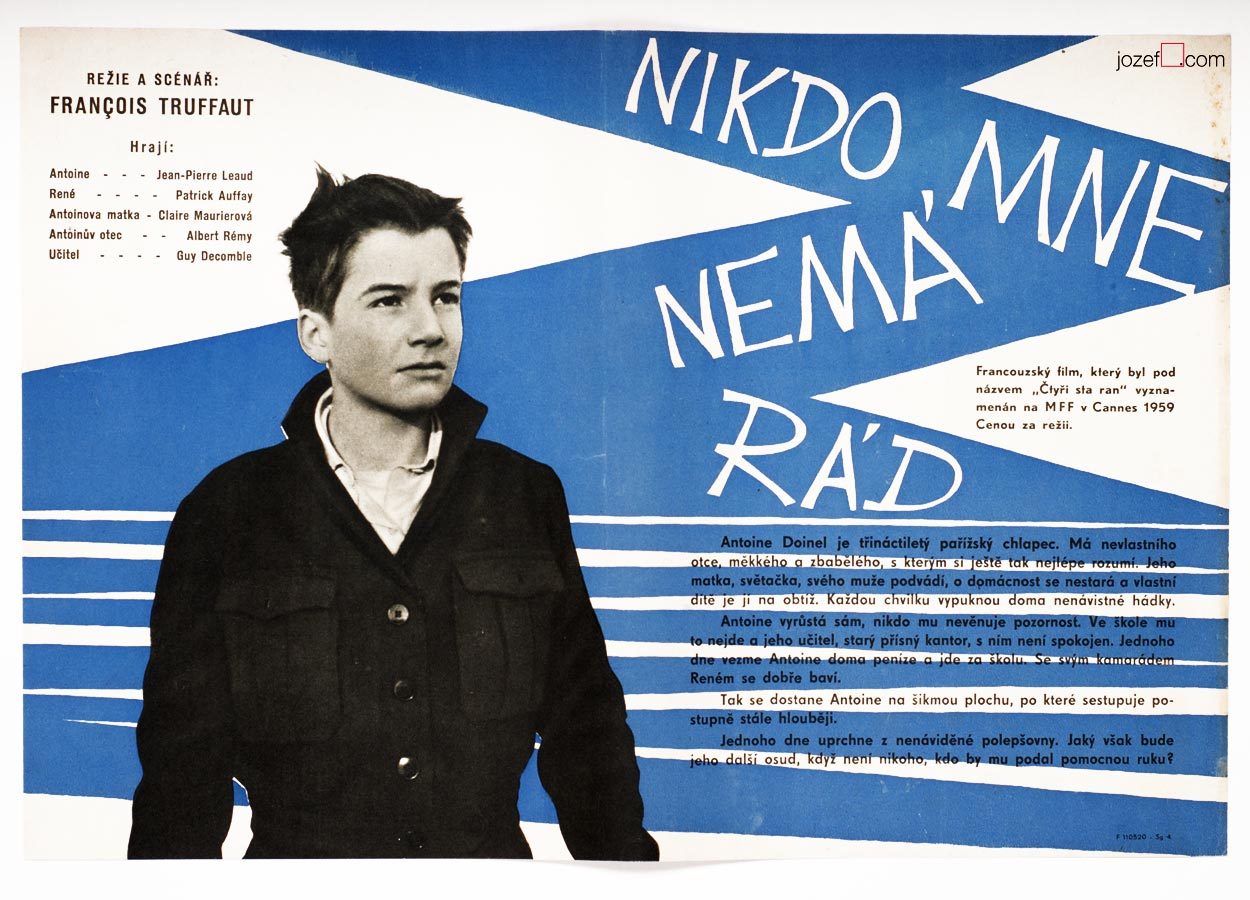Poster Art / Made in Czechoslovakia. The story of film posters. Take 2.
Poster art in the history. Story of the Czechoslovak film poster in few takes.
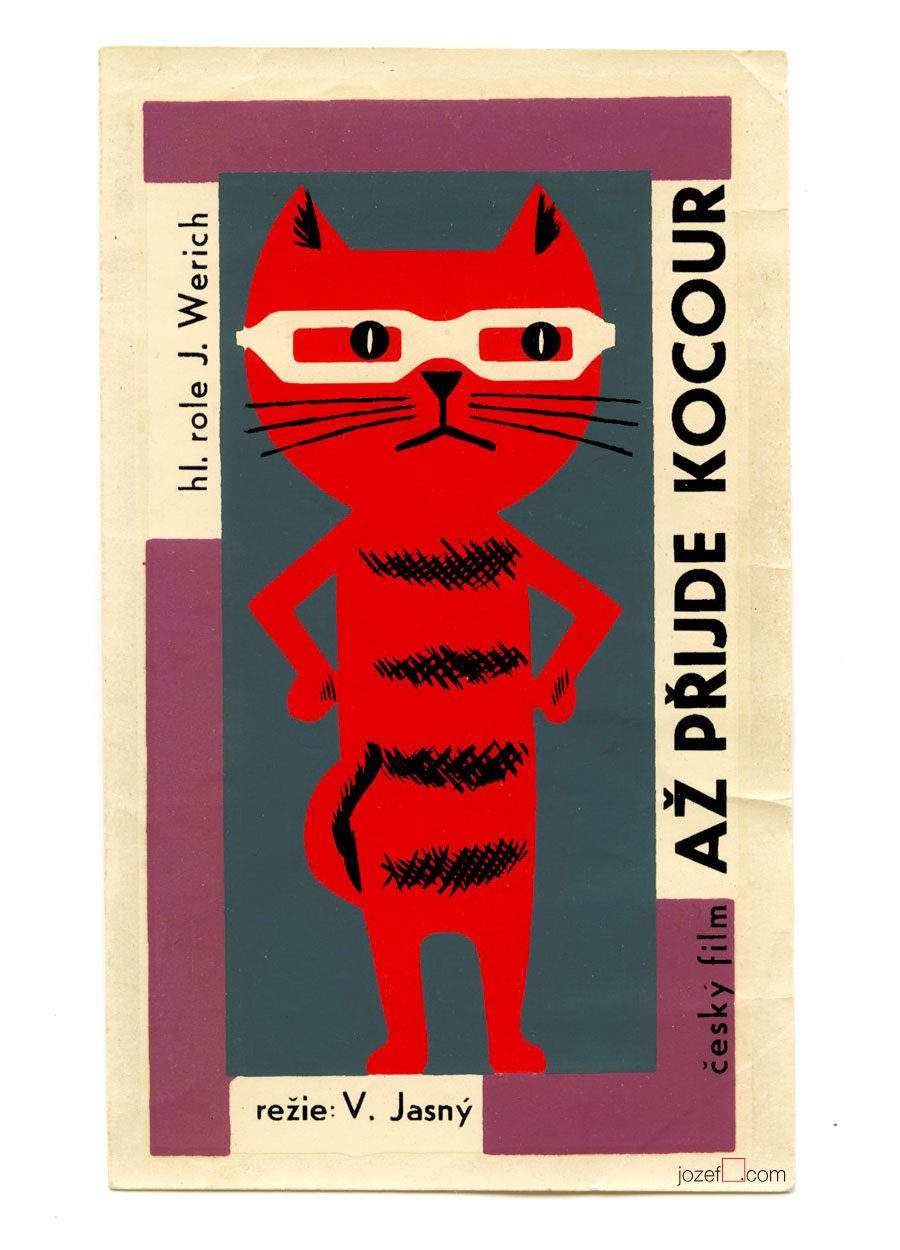
••
The ideas of cultural revolution of the Sixties were gently spreading across the Czechoslovakia. The death of Stalin resulted in major positive cultural and political changes. Revealing political crimes of the 1950s helped many to react. Cultural institutions were breathing in fresh air and for almost whole new decade possibilities were gradually becoming reality. Country was getting back in bloom and ready for the new era that would bring many significant names in literature, film and art in general.
••
••
Film poster and its visual quality was always present, however “Brussels style” brought in some vitality to poster art. Bright pastel colours and curvy shapes were welcoming cinema enthusiasts on the way to see the films. There was a special platform dedicated to film posters with 6 posters always on display.1 Poster art gallery on the street, if one wants to think. Understanding of newly approaching contemporary cinema also made huge impact on the look of the future poster art. After all photography and film were both sharing so much, not to mention the film frame. Photography was drastically changing its status in poster art and was very often becoming part of the collages, or similar innovative techniques developed by new thinkers.
••
• Foreign films were filling up the cinemas, however the choice was very limited. Films criticising western society made by the controversial film directors were the most preferable.
••
Film festivals, International reputation, Good bye Stalin!
Sixties brought in various alternative films from behind the Iron Curtain. Visually diverse films were screened in the cinemas across the country and have been admired by many. Culture was adopting new ways of expression and started to imply them further more in daily practise. Names such as Jean Luc-Godard, Luis Bunuel, Michelangelo Antonioni or Federico Fellini were resonating in freshly introduced film magazines, that were not lacking the visual quality of those printed in the West. Rich content was provided by healthy criticism, something unheard of in the past.
••
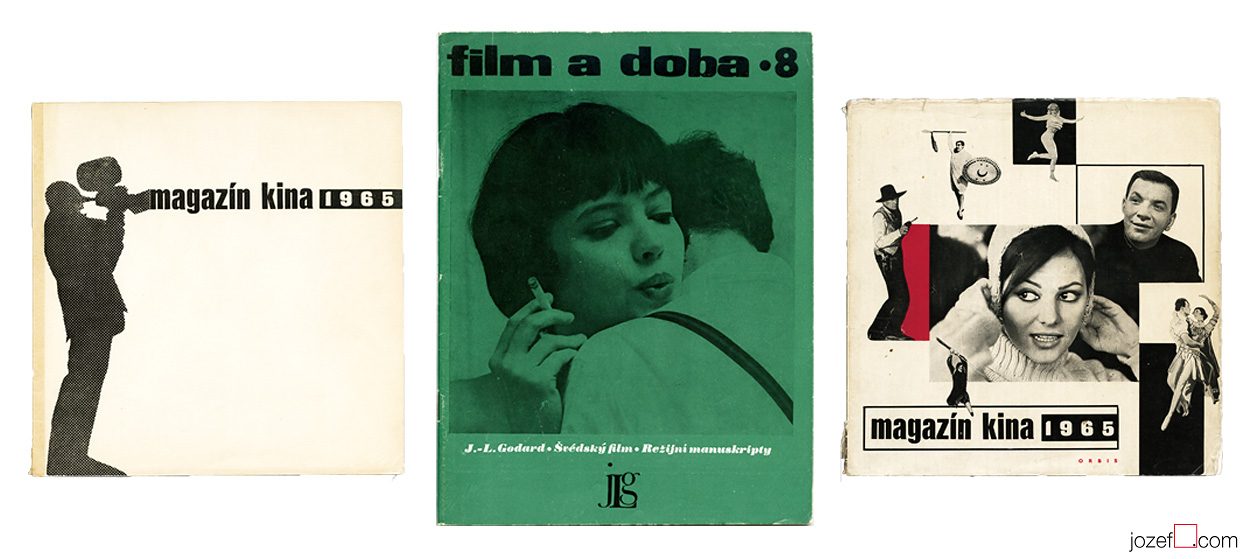
••
Appearance of the Czechoslovak films on International film festivals didn’t wait for long. In 1961 first Slovak film A Song About the Grey Pigeon / Stanislav Barabáš enters the Cannes Film Festival.2 Followed by the colourful award winning musical When the Cat Comes / Vojtěch Jasný (Cannes, 1963) and The Shop on Main Street / Ján Kadár and Elmar Klos (Academy Award for Best Foreign Language Film, 1965). Together with directors as Otakar Vávra or Evald Schorm they were paving up beautiful path for forthcoming generation.
••
••
Czechoslovak New Wave. Sun in the net.
[quote]”We had a feeling that literature is far ahead of the film, mean Slovak film, you know. That it is necessary to find the contact with writers and involve them in Slovak film production. Albert Marenčín”3[/quote]
Light was getting green also for the young film graduates at FAMU (Film faculty, Prague). Immense visual response to the current state of the country was phenomenal. In some cases maybe mere innocent poetic experiments, but the “real film” could not overlook the situation and reality seemed pure irony at the time. Great source of motivation was coming from the literature, many “lost authors” like Alfonz Bednár, Bohumil Hrabal, Jan Johanides, Milan Kundera, Dominik Tatarka and others were giving young film makers valuable hints. By the mid sixties Czechoslovak New Wave was already established. Young directors were influenced by everything worth of observation and wanted to add it to their art. Although the work of Czechoslovak New Wave was praised by international critics, at home with Communist power and their “relevant values” behind the back they were finding great difficulties. Majority of their films were banned right after the premiere and most of those films would not see the screening room until 1989. In many cases their activity was completely stopped, some of them emigrated (Miloš Forman, Jan Němec). Very similar destiny was following the poster art and its creators. Among few of many representatives of New Wave Cinema in Czechoslovakia belongs Věra Chytilová, Dušan Hanák, Elo Havetta, Juraj Herz, Juraj Jakubisko, Jaromil Jireš, Pavel Juráček, Jiří Menzel, Ivan Passer, Štefan Uher, Věra Vihanová, František Vláčil.
••
• Surreal nudity. Very few film posters involved images of naked body.
• Witchhammer / dir. Otakar Vávra. Different poster designs for the same film.
••
No matter how miraculous they were, pretty much all of the above Czechoslovak films were banned in the late 1960s and onwards. Communists made the shame out of them and they would soon moved all of them to the special archive named “TREZOR” (Communist party safe-deposit box for disturbing material, in this case it was film deposit).
••
Film poster and poster artists. Variety in poster art.
One of the main reason why Czechoslovak film poster art became so noticeable was the fact that the surrounding of poster making was made up of rich resource. The sixties has given away the opportunity to try out more courageous and innovative forms. Those were adopted by the groups of painters, sculptors, illustrators and graphic designers who used and mixed them in their own fashion. With strong individual approach rather than uniformed style or tendency, poster design became the playground for all. Extensive use of collage, illustration, photography or typography was applied. They all played important role in poster art and would often encounter on the same film poster. The playful and courageous approach was used by many significant poster designers such as Rudolf Altrichter, Zdeněk Chotěnovský, Zdeněk Kaplan, Zdeněk Palcr, Karel Teissig, Karel Vaca or Zdeněk Ziegler. Having been schooled as sculptors, painters, book illustrators, architects or sometimes self-taughts, poster designs were handled in all possible manners. From the dominating titles set across the poster to decomposing the subject into reduced forms.
••
••
21.8.1968. Invasion of Czechoslovakia
The strongest and the most critical films of Czechoslovak cinema emerged in the second half of the sixties. As we know there is no place for criticism in any political regime. Sixties remained a myth for next twenty years and were systematically erased by Socialist invention called “Normalization”. That did not however stop poster designers from carrying on, as Zdeněk Ziegler puts it “all of us had the same enemy, after all”. 4
Before we enter poster art of 1970s, we thought that you might enjoy a little visual intermezzo. Sixties poster artists and detailed description about their studies, exhibitions and related informations are getting together for the next part.
••
• Master Executioner / dir. Paľo Bielik, test print of unrealised version of the 1966 film, with Slovak version of The Seventh Seal / dir. Ingmar Bergman that have possible never seen the light either, printed at the back.
••
[quote]”It is getting even worst. It’s hard to say, where is the end of the road we have not chosen. Somewhere has been decided, that this generation must remain forgotten. Whole army of chief executives and referees gathered together and they all came up with strictly planned programme. Instead of Poledňák there came Purš, instead of Harnach – Šťastný, instead of Kunc – Toman. Common sense refuses to believe it, but for several months, these three gentlemen have been working hard on the disposal of Czechoslovak film. 19.2.1971 / Pavel Juráček”5[/quote]
••
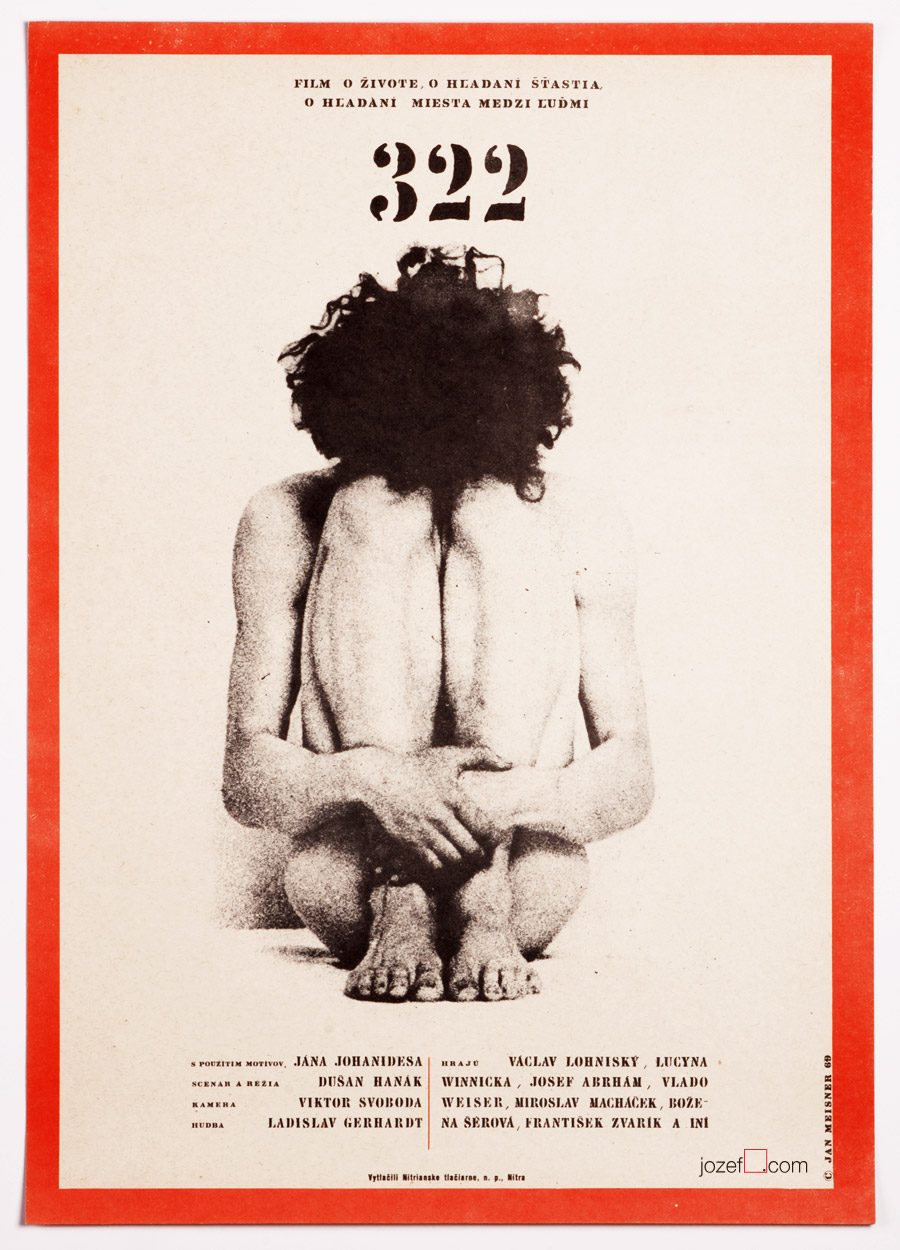
•••
1.Vratislav Hlavatý for the Czech Radio Interview / 29.3.2013
2. https://en.wikipedia.org/wiki/Cannes_Film_Festival
3.Albert Marenčín / Golden Sixties, TV document, dir. Martin Šulík, 2009. (Albert Marenčín / artist, writer, surrealist and former director of one of the artistic group of film producers in Slovakia (Produced also Sun in the Net). He was very much responsible for pulling Slovak young film directors to studios in Bratislava)
4.Zdeněk Ziegler for the Czech Radio Interview / 15.5.2013.
5.The Key for Determining Dwarfs or The Last Travel of Lemuel Gulliver, dir. Martin Šulík, 2002.
••
Additional research:
Literature:
- Flashback / Czech and Slovak Film Posters 1959-1989, ed. Libor Gronský, Marek Perůtka, Michal Soukup, Olomouc Museum of Art, 2004.
- Elo Havetta (1938-1975) / Václav Macek, SFÚ, 1990.
Online web:
Note: First take on history of Poster art in Czechoslovakia. For shop and blog highlights SUBSCRIBE to our weekly newsletter.

